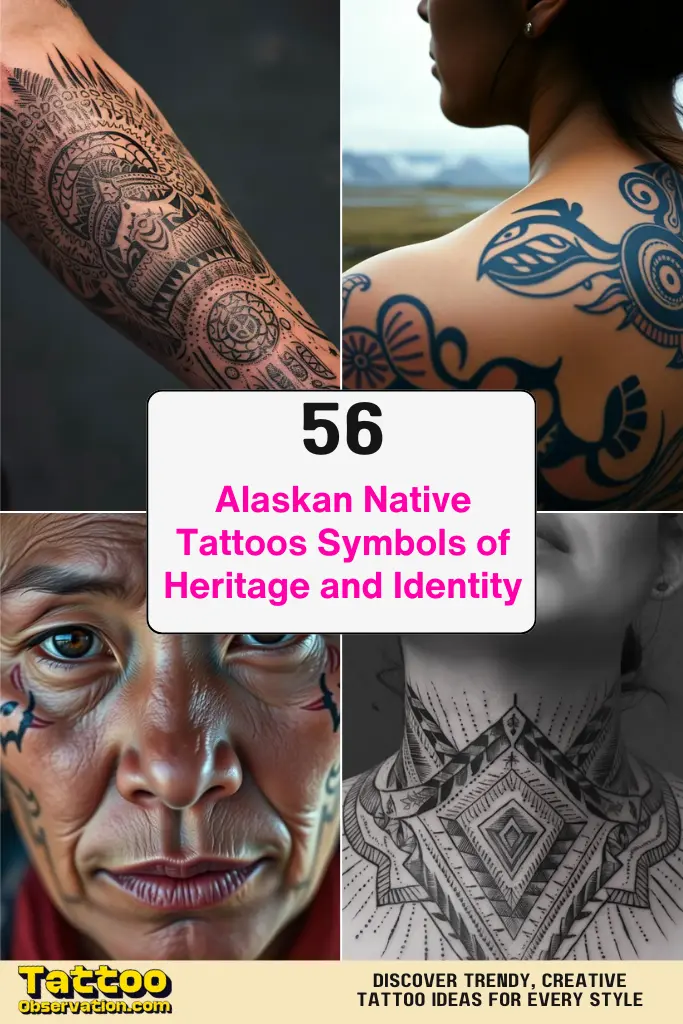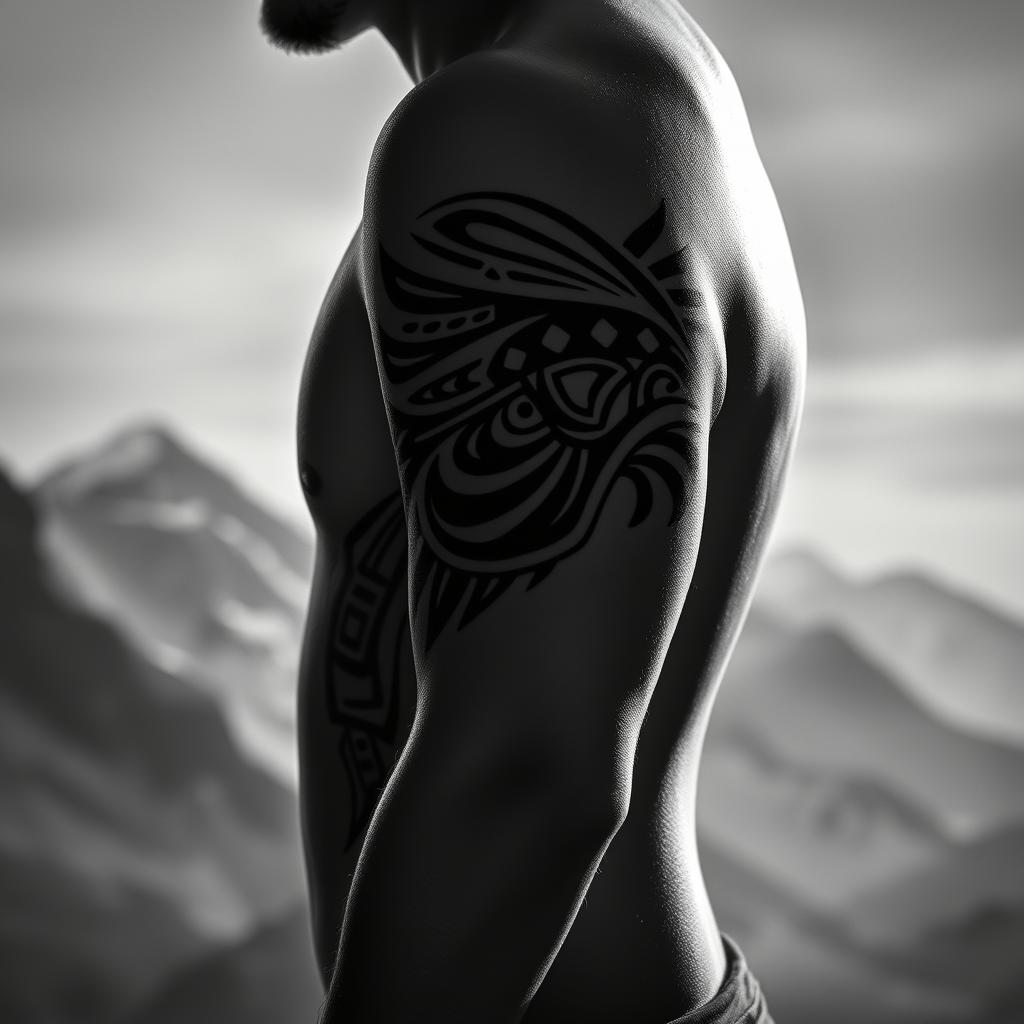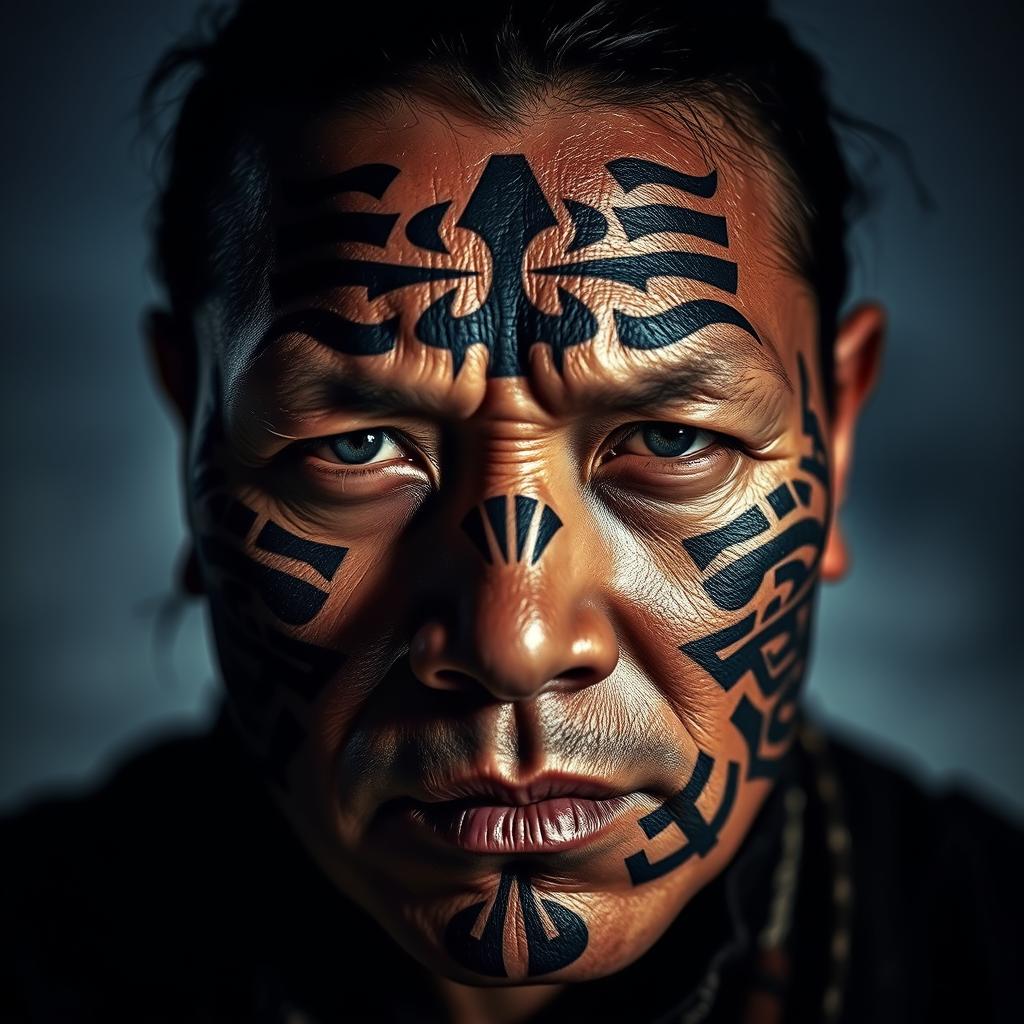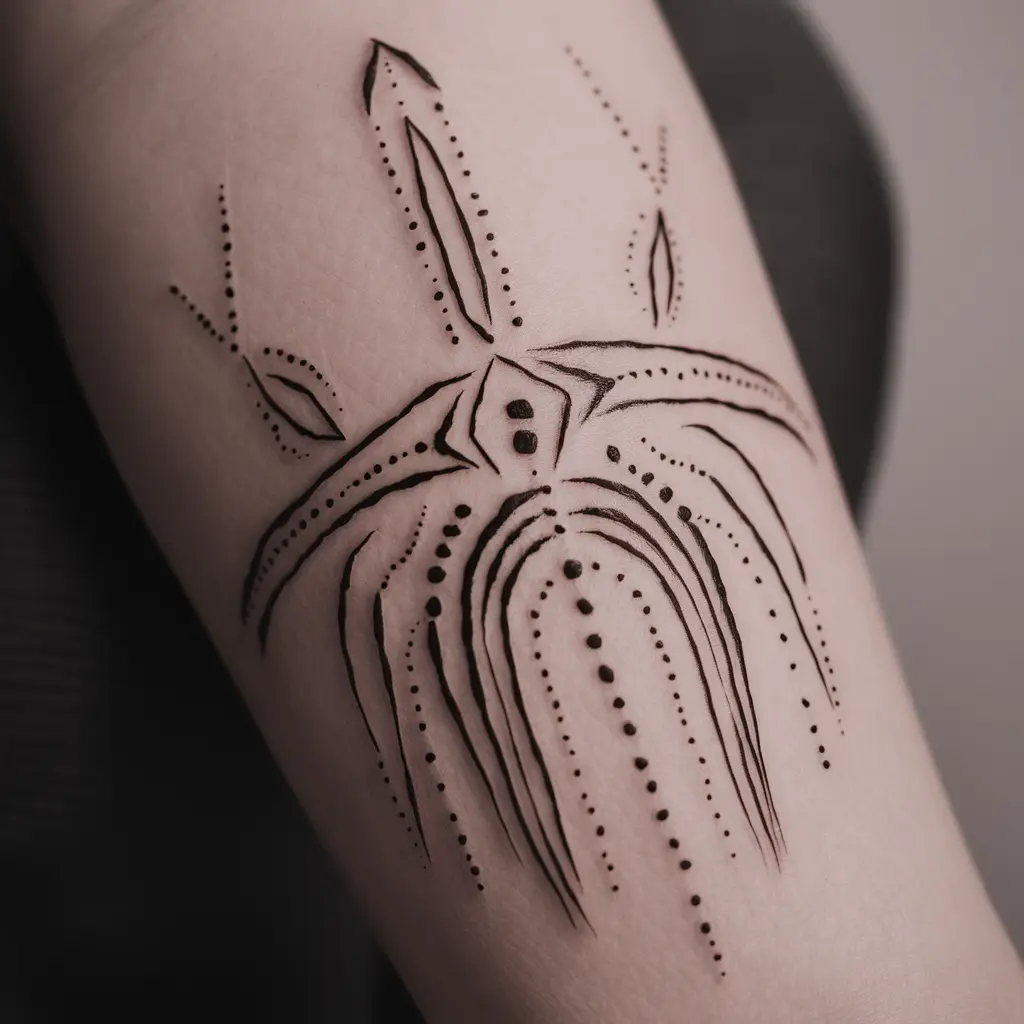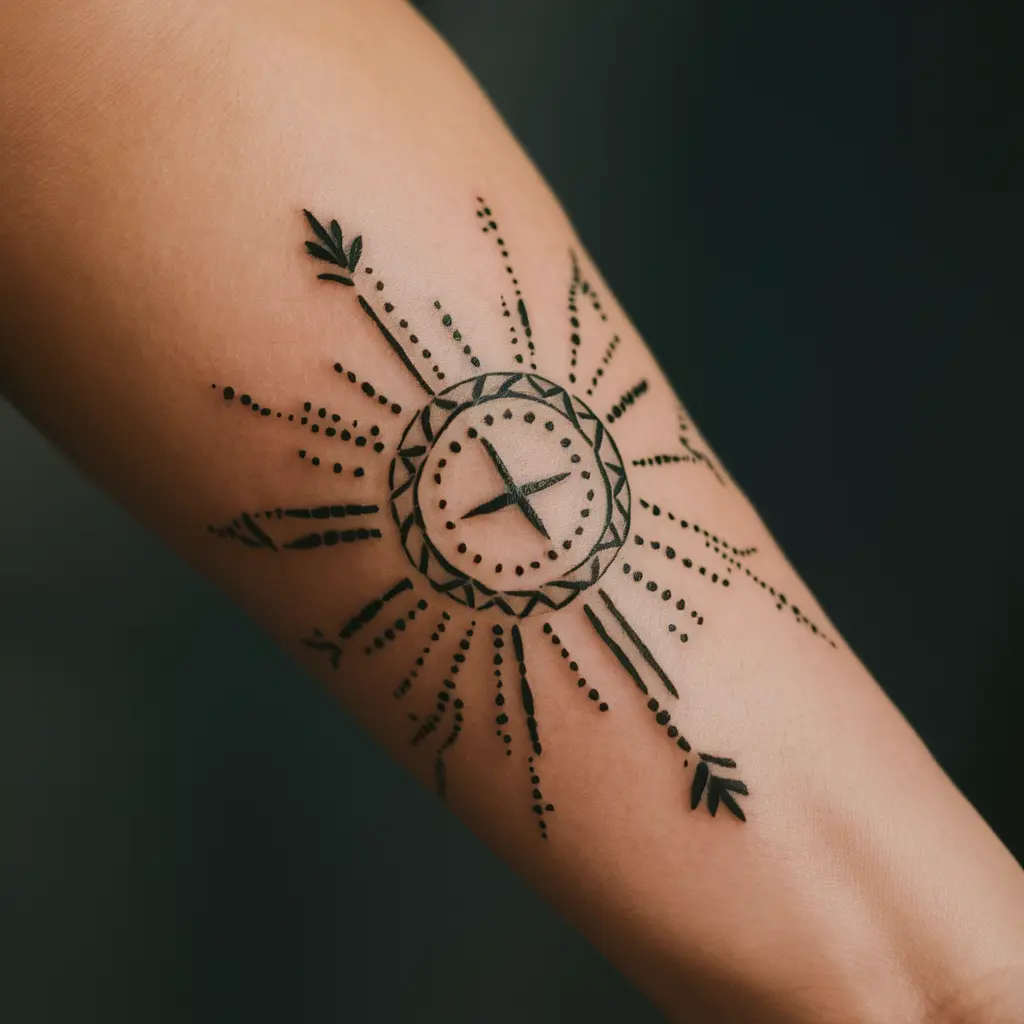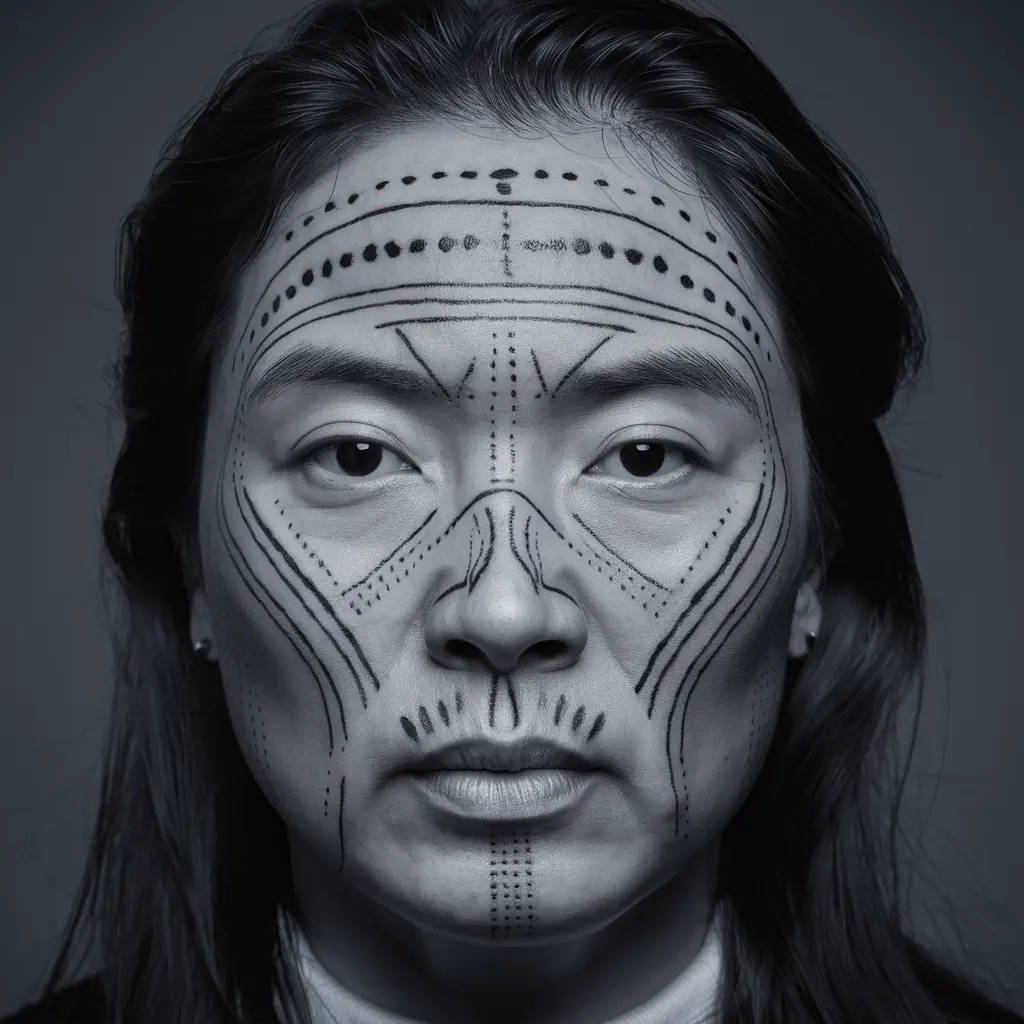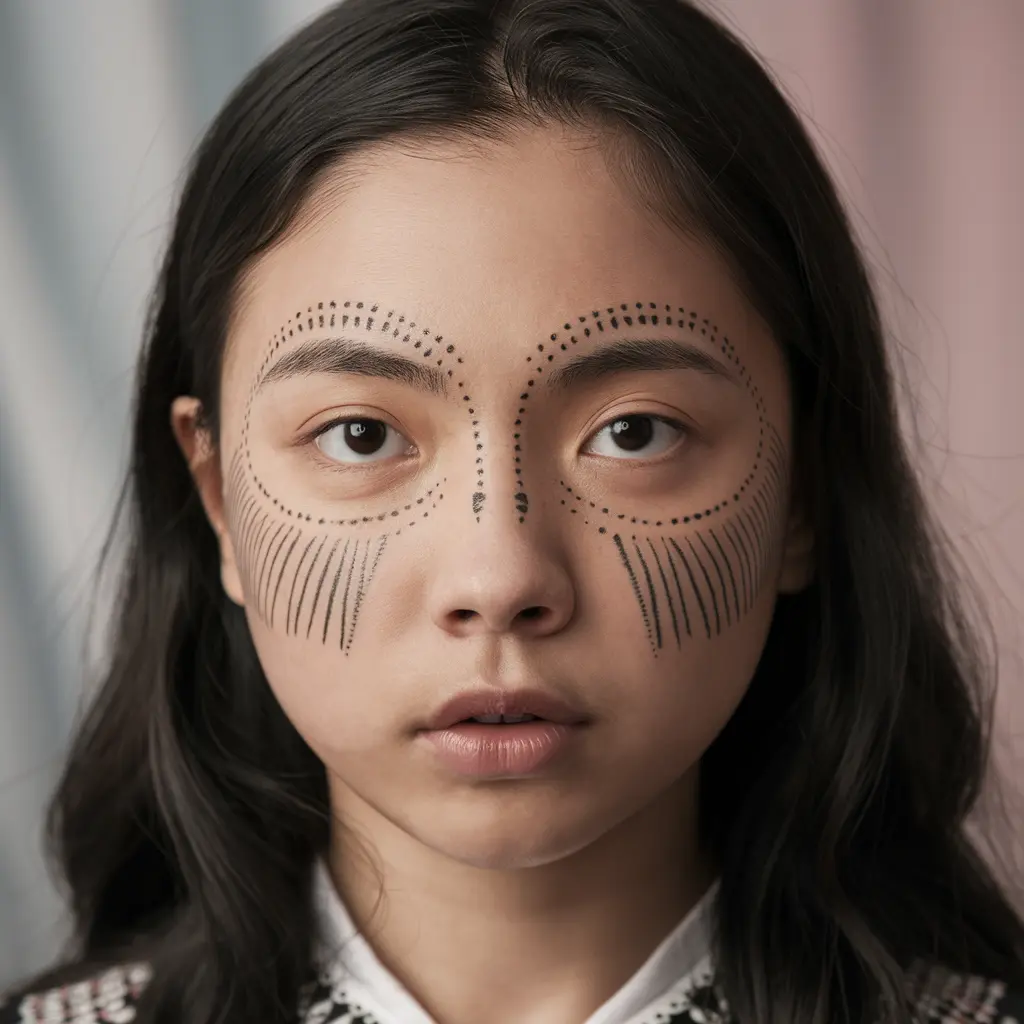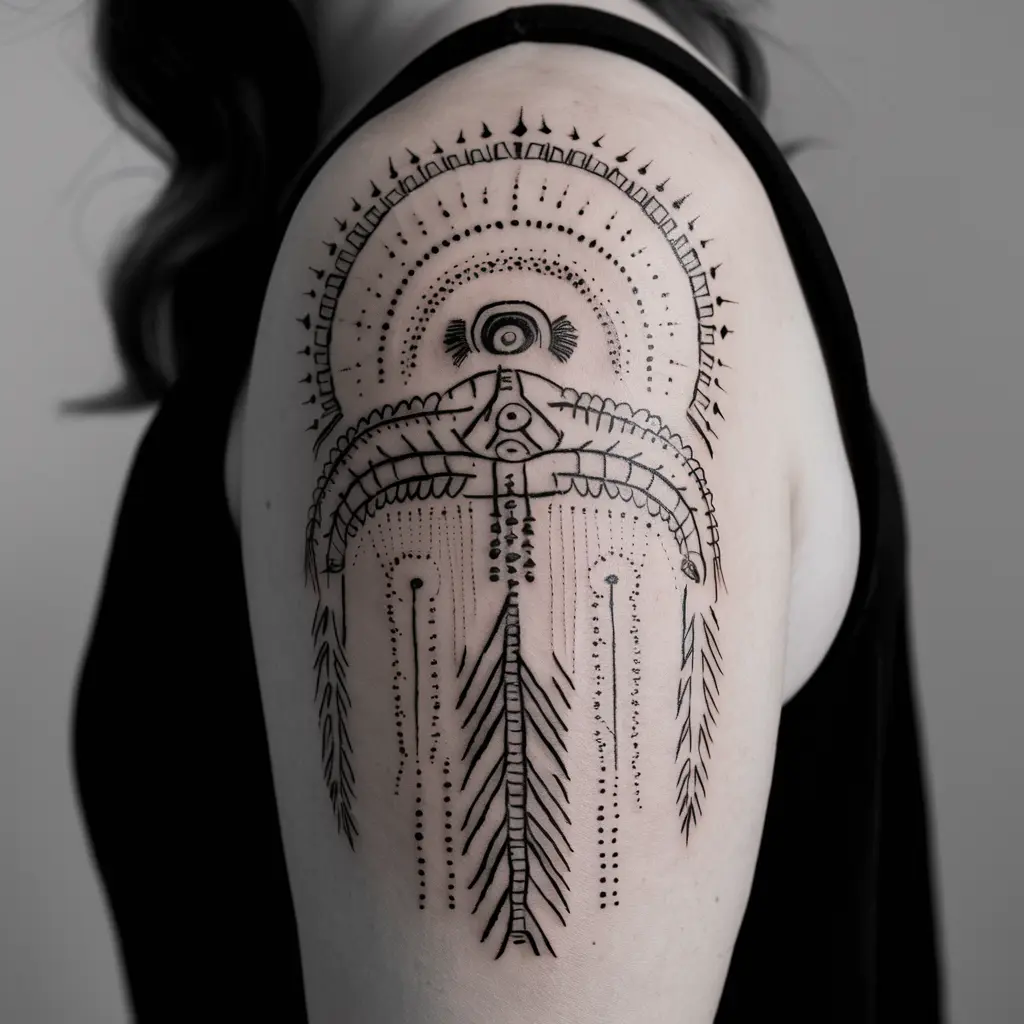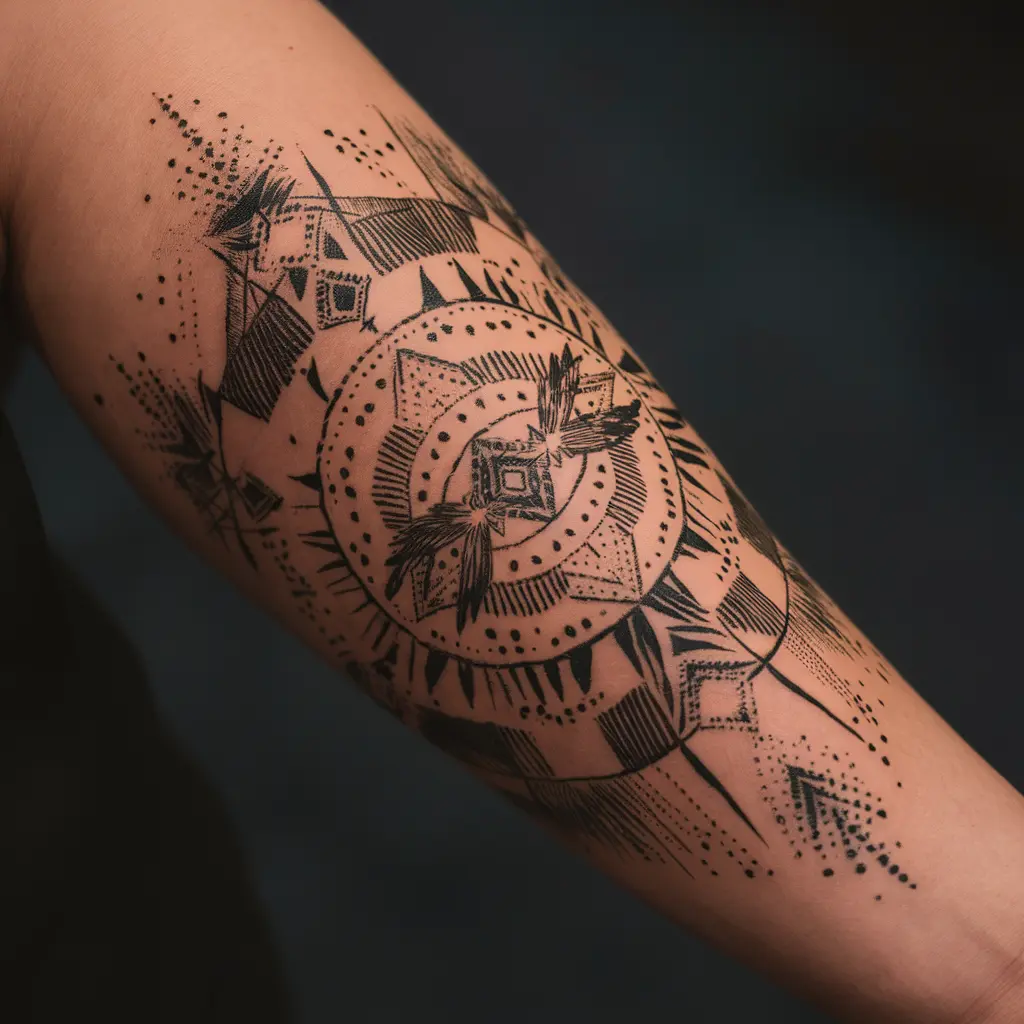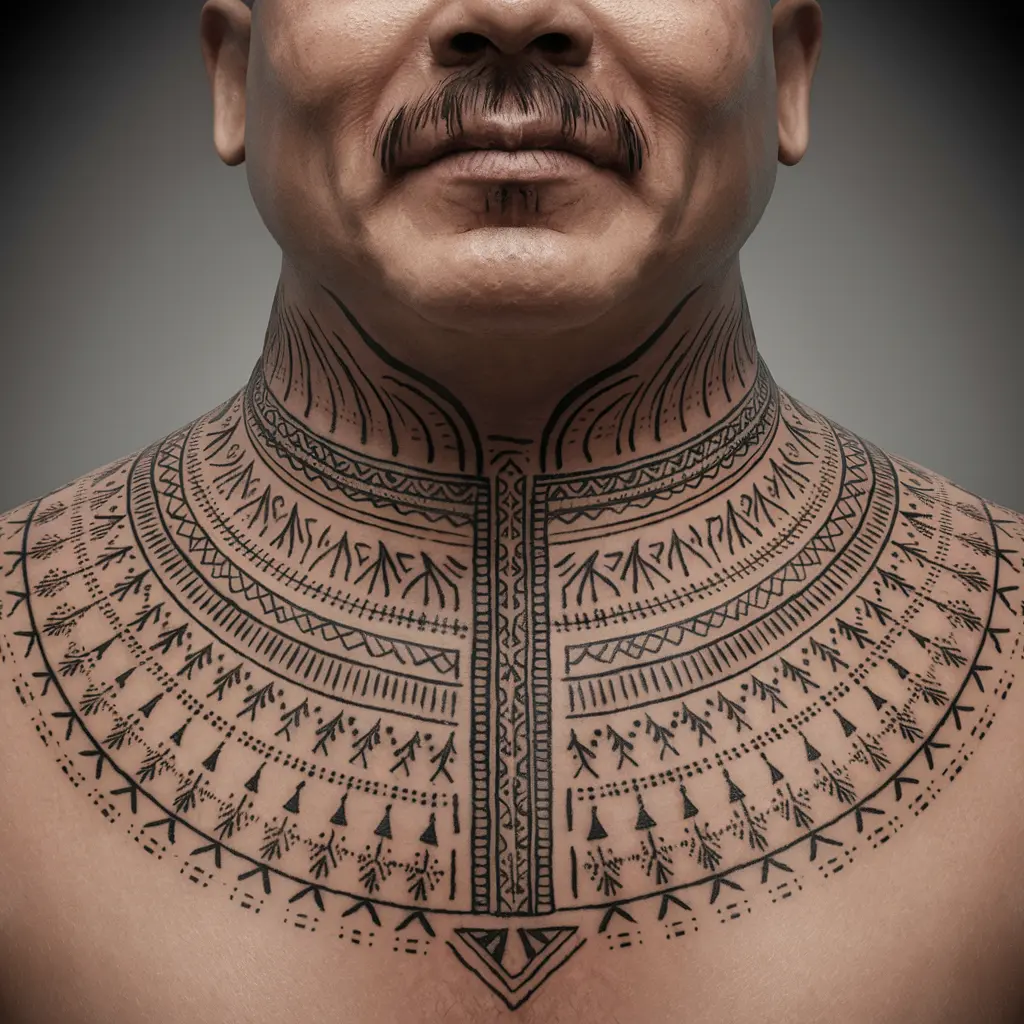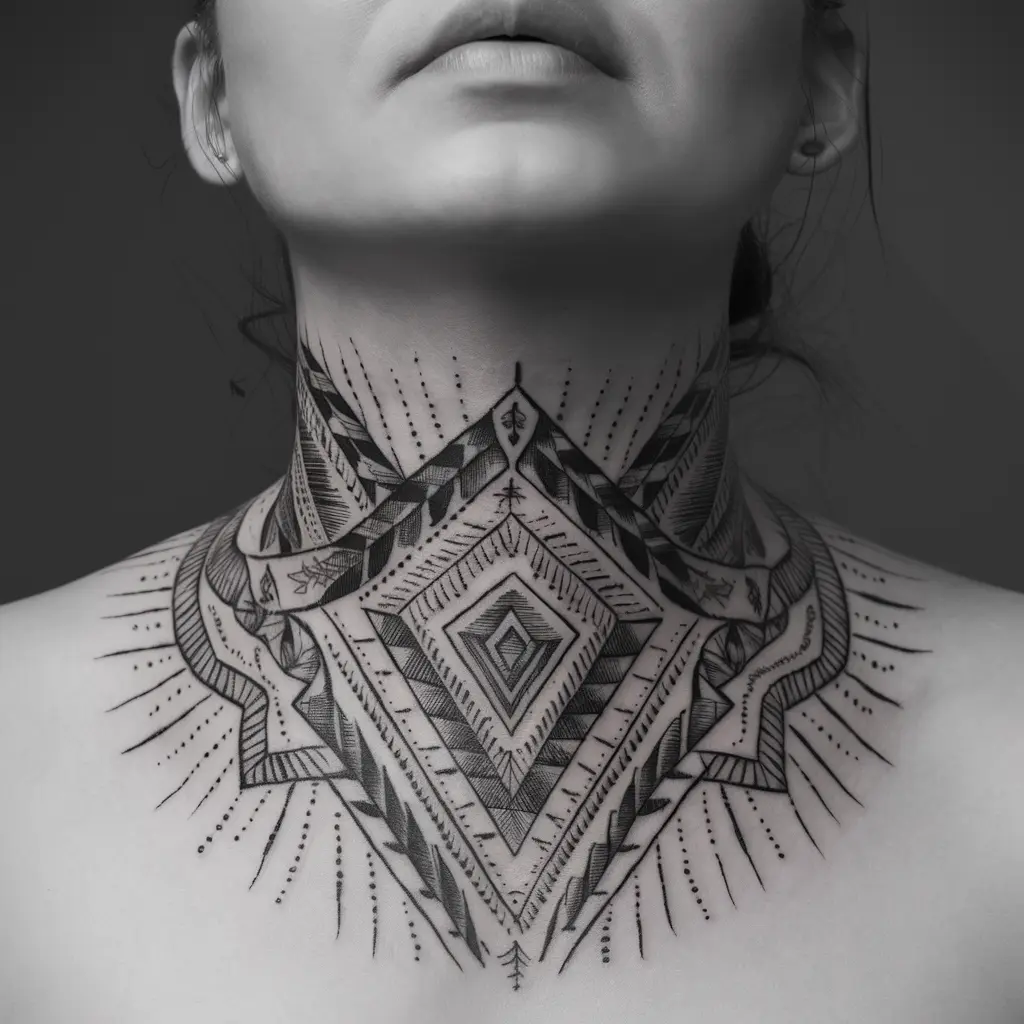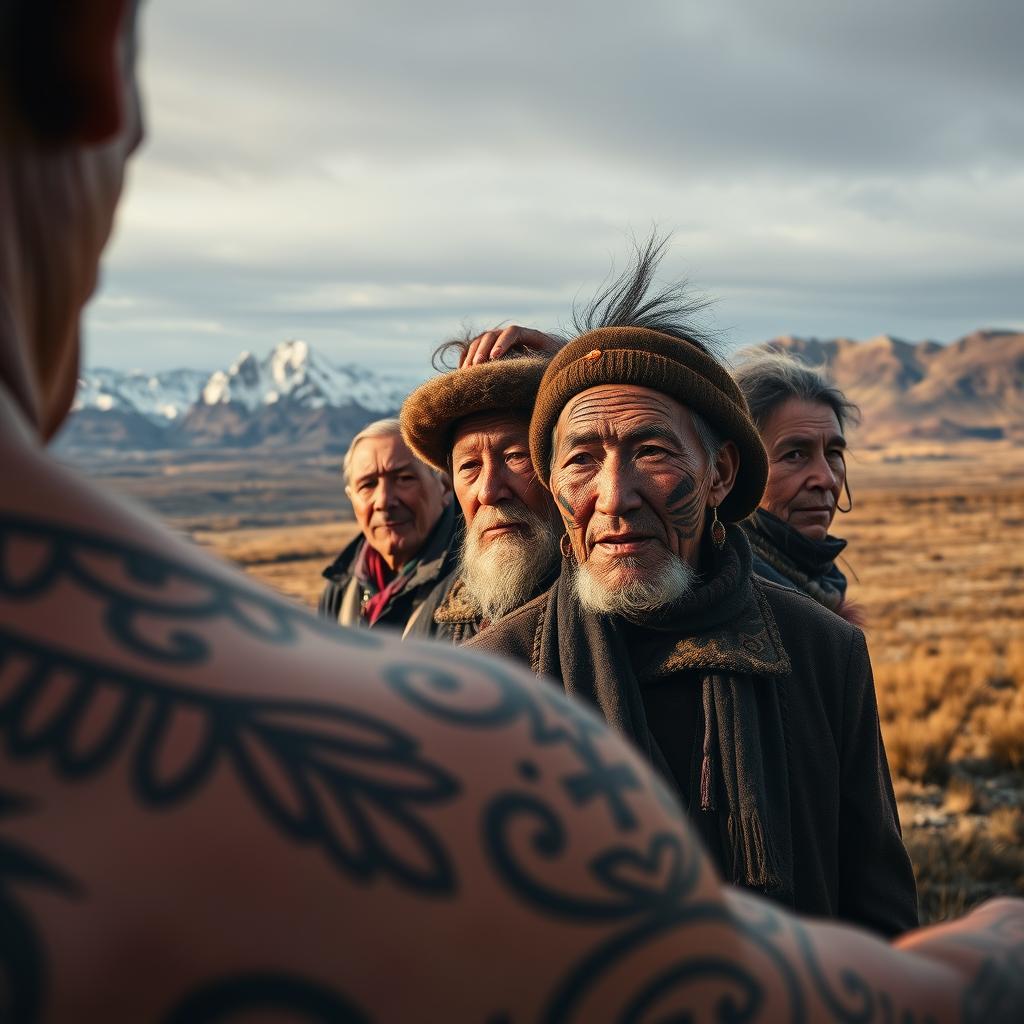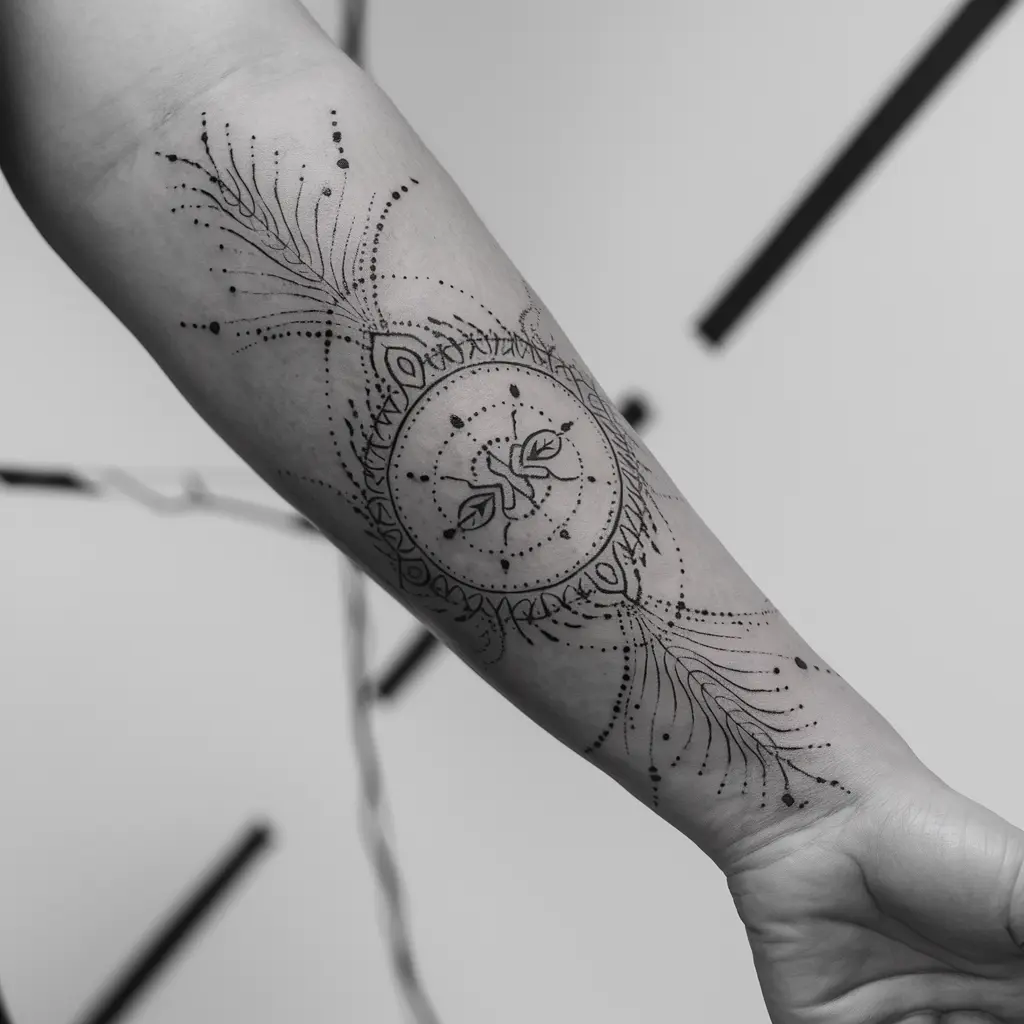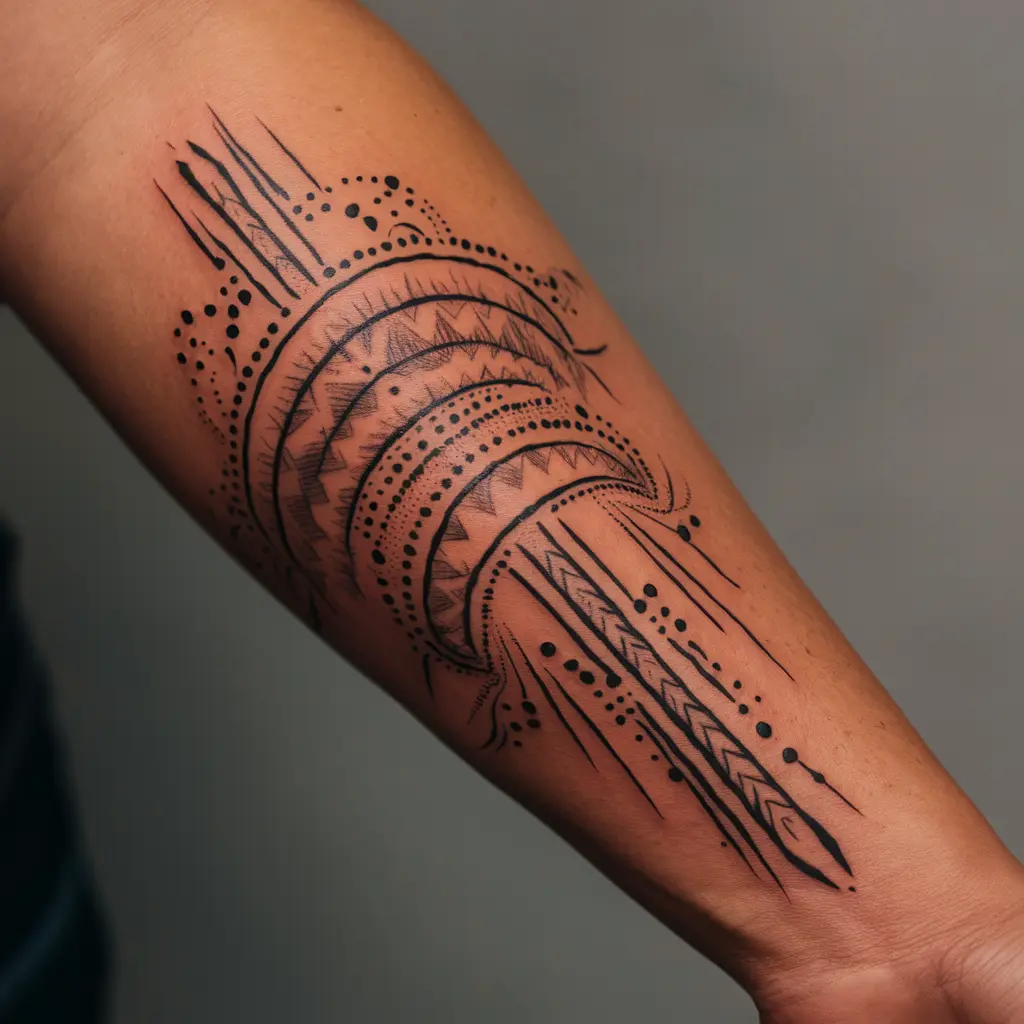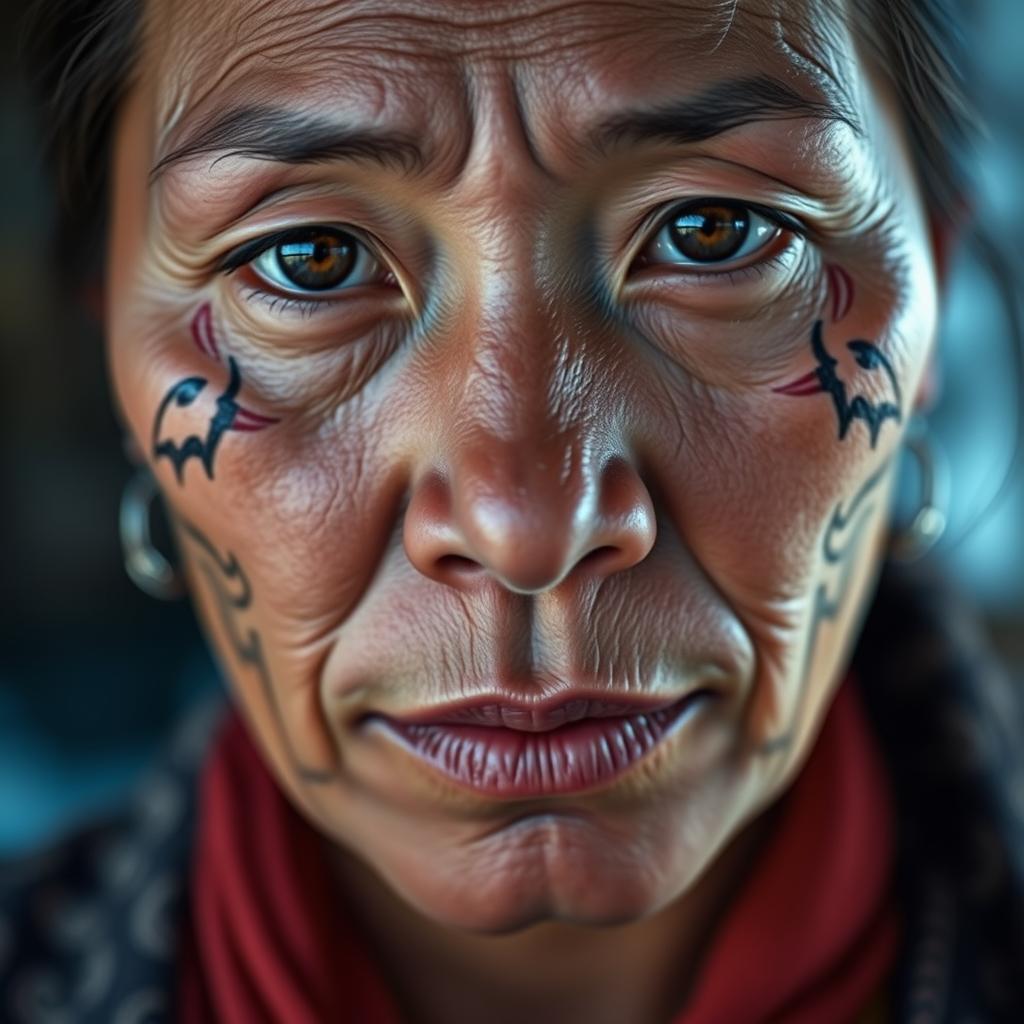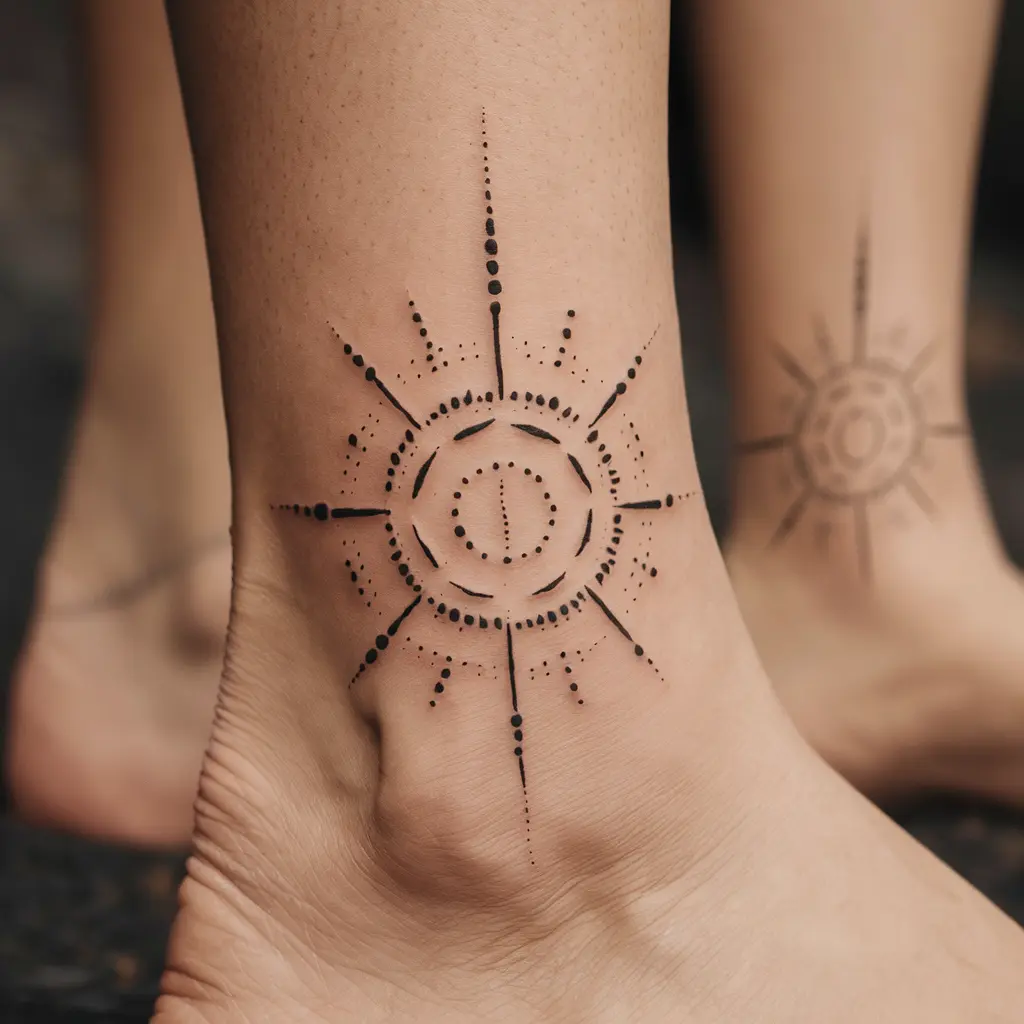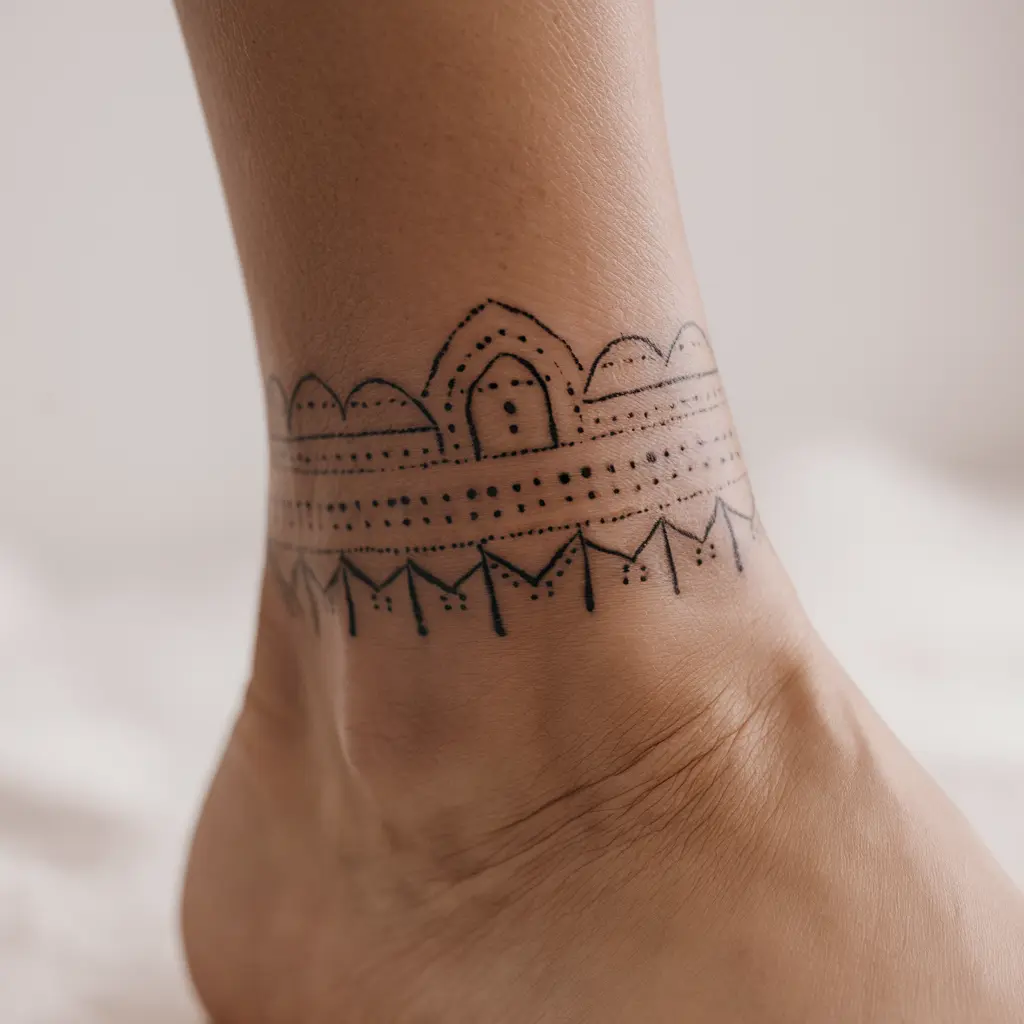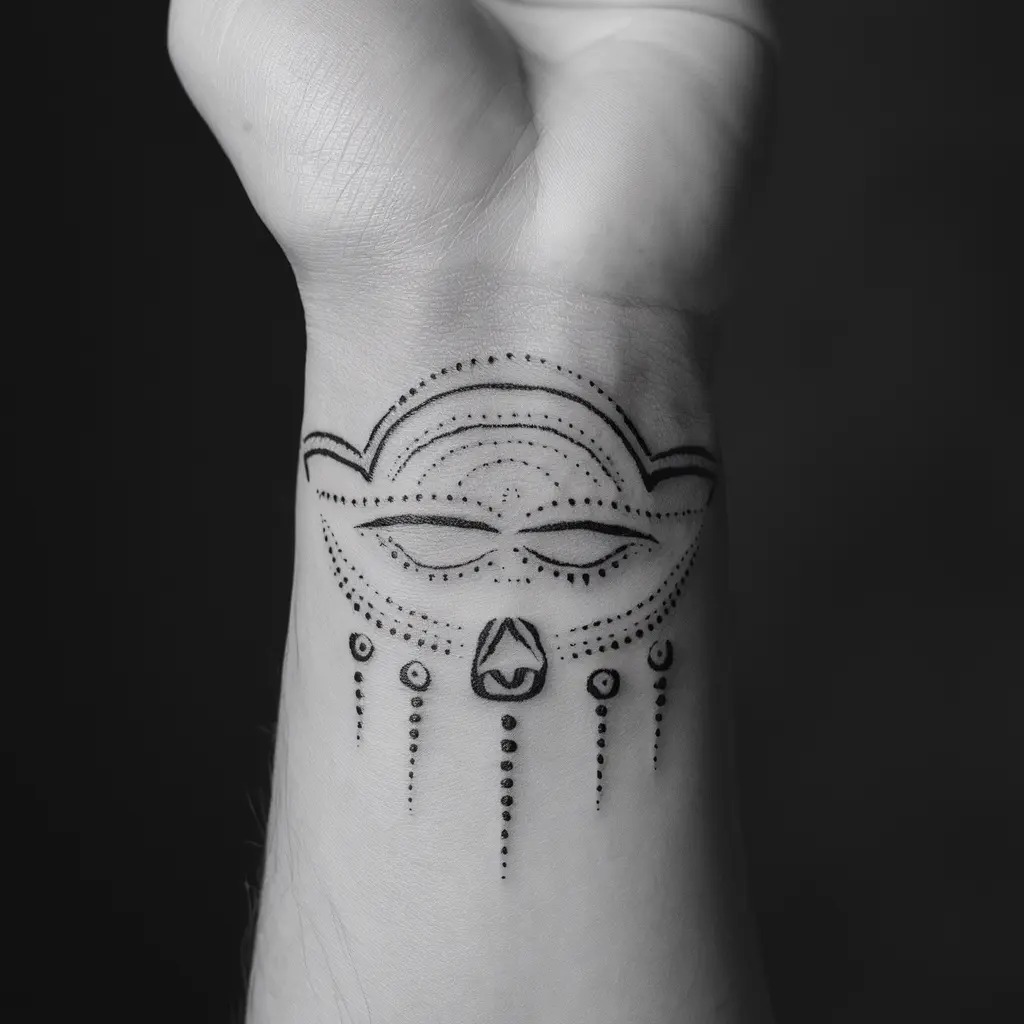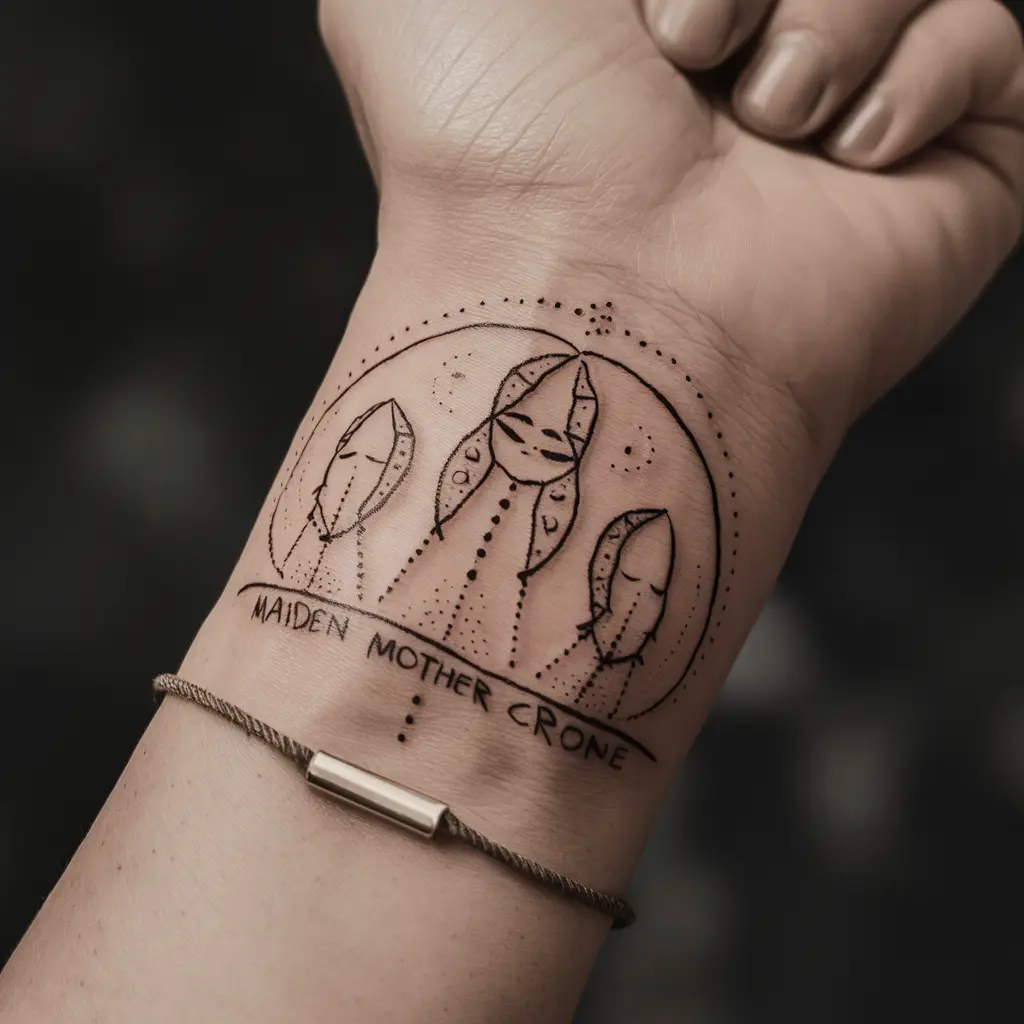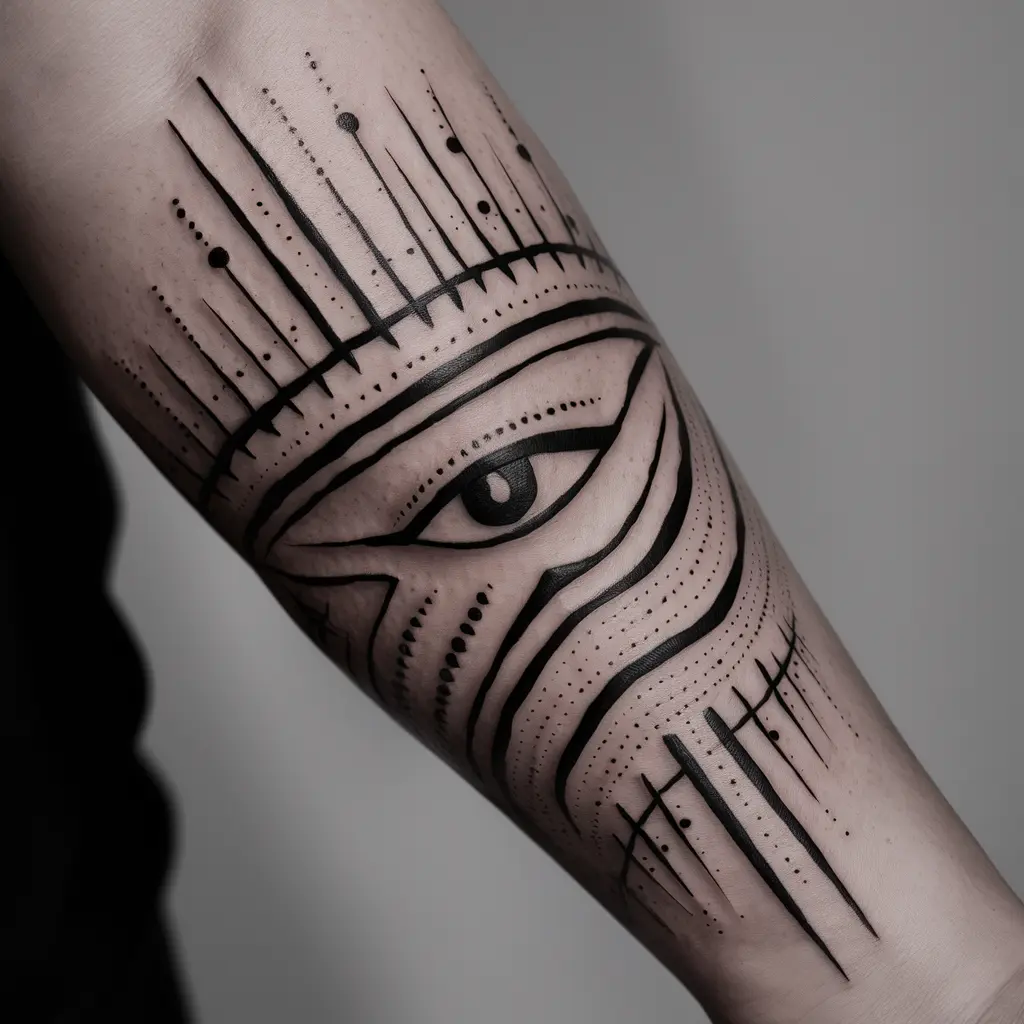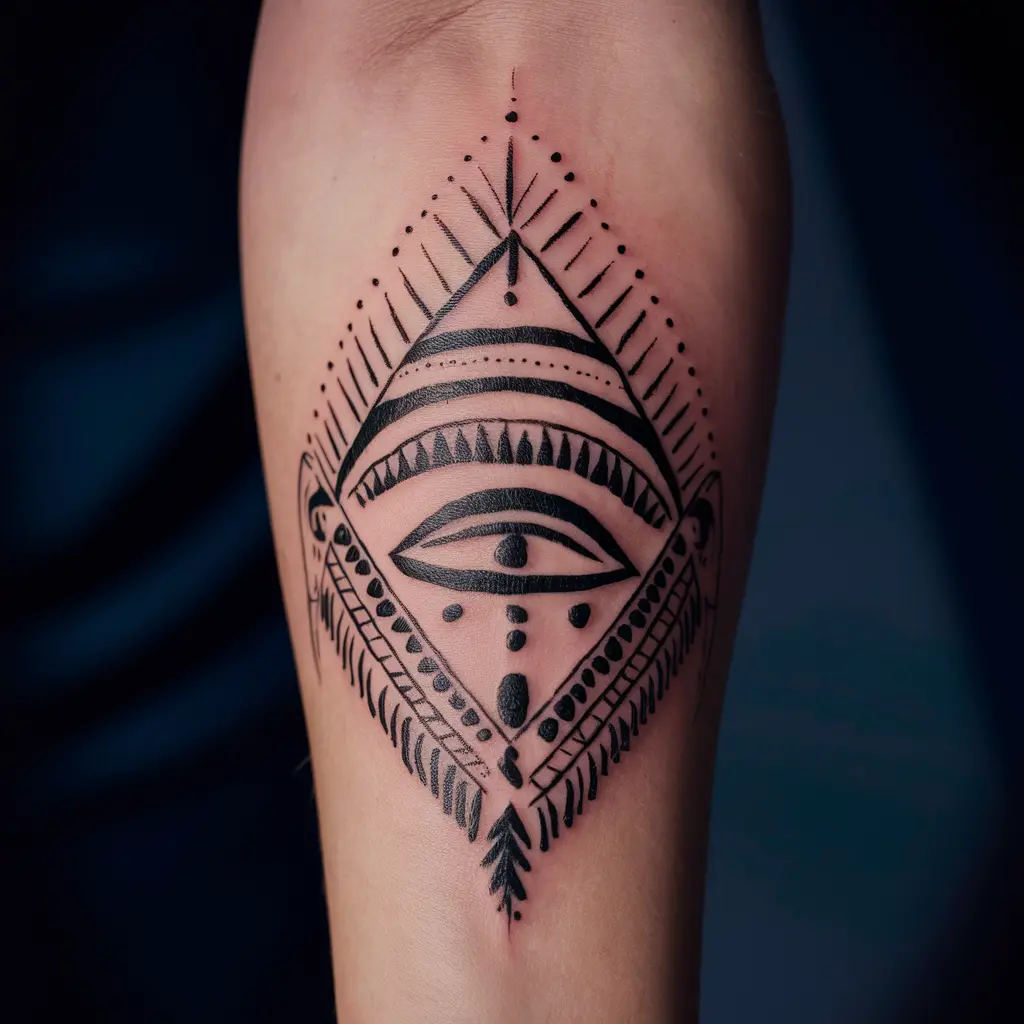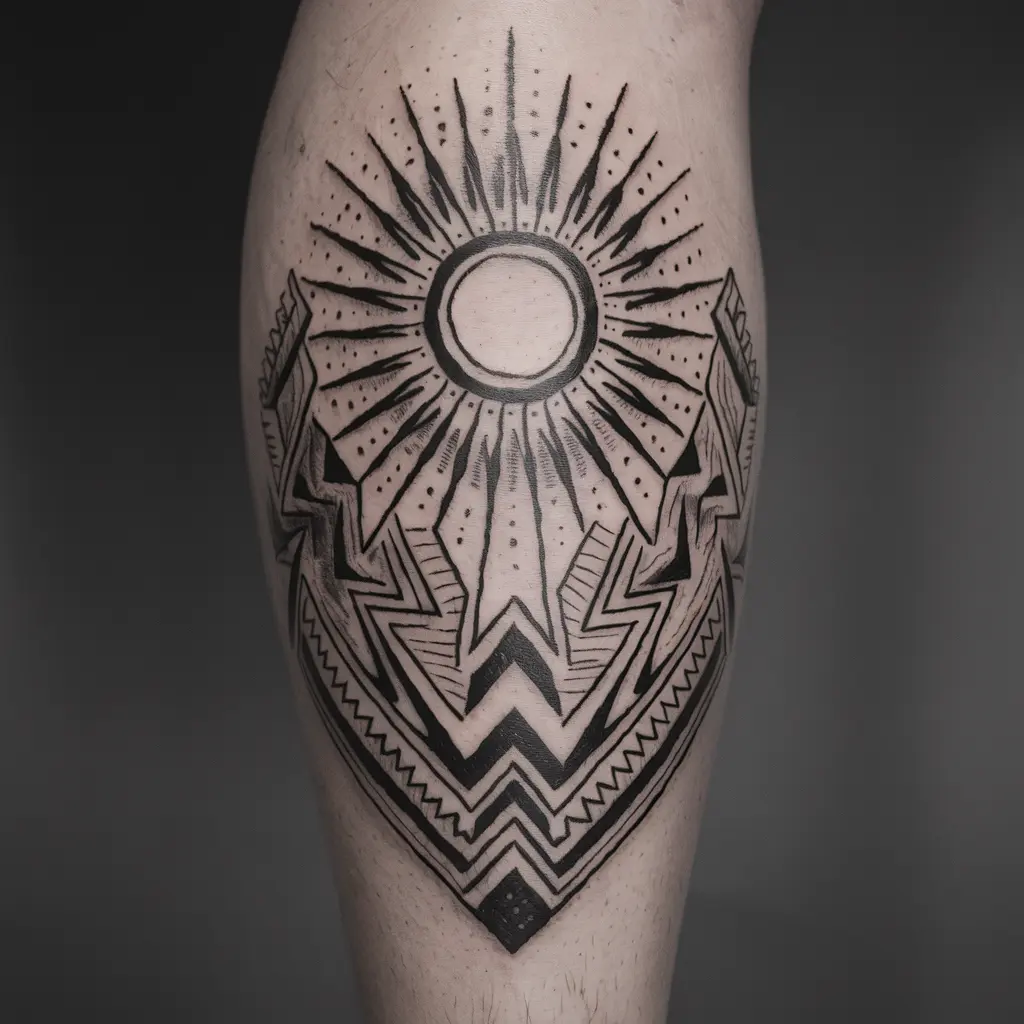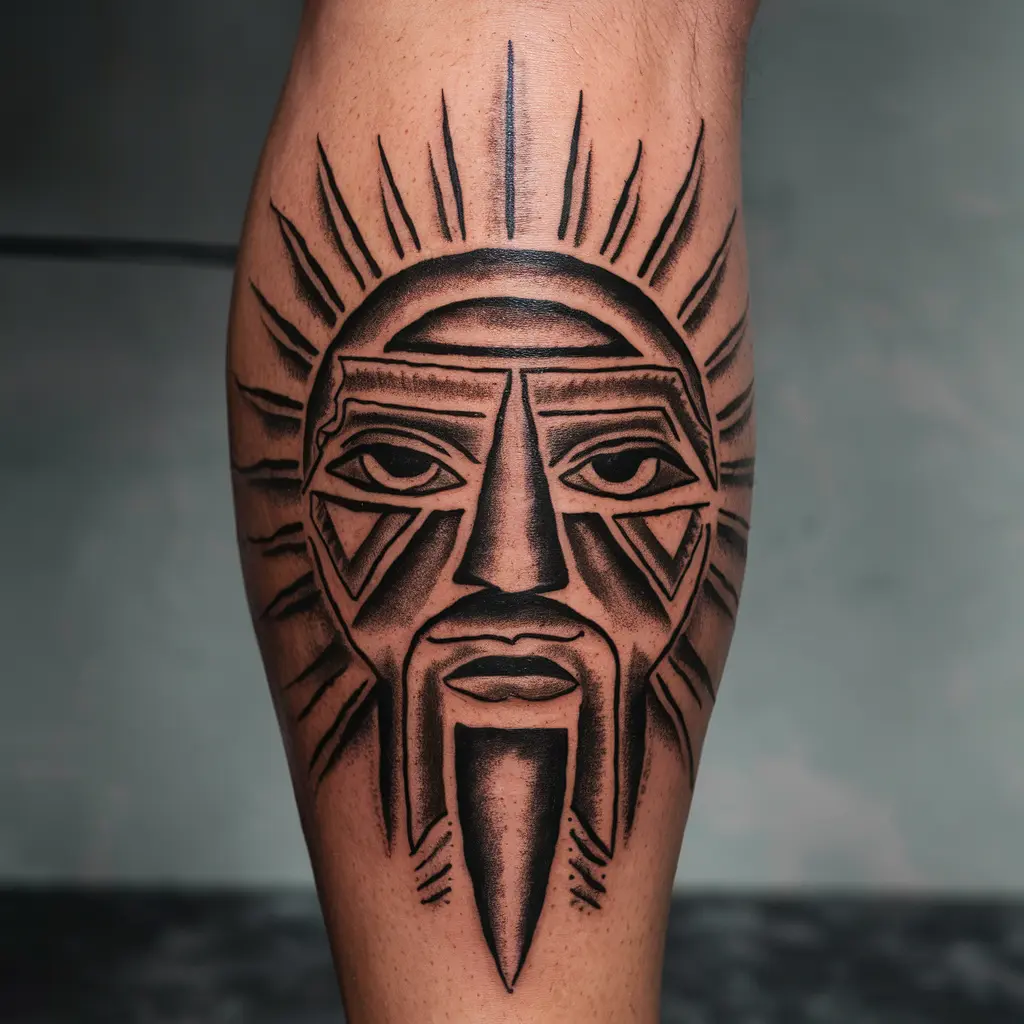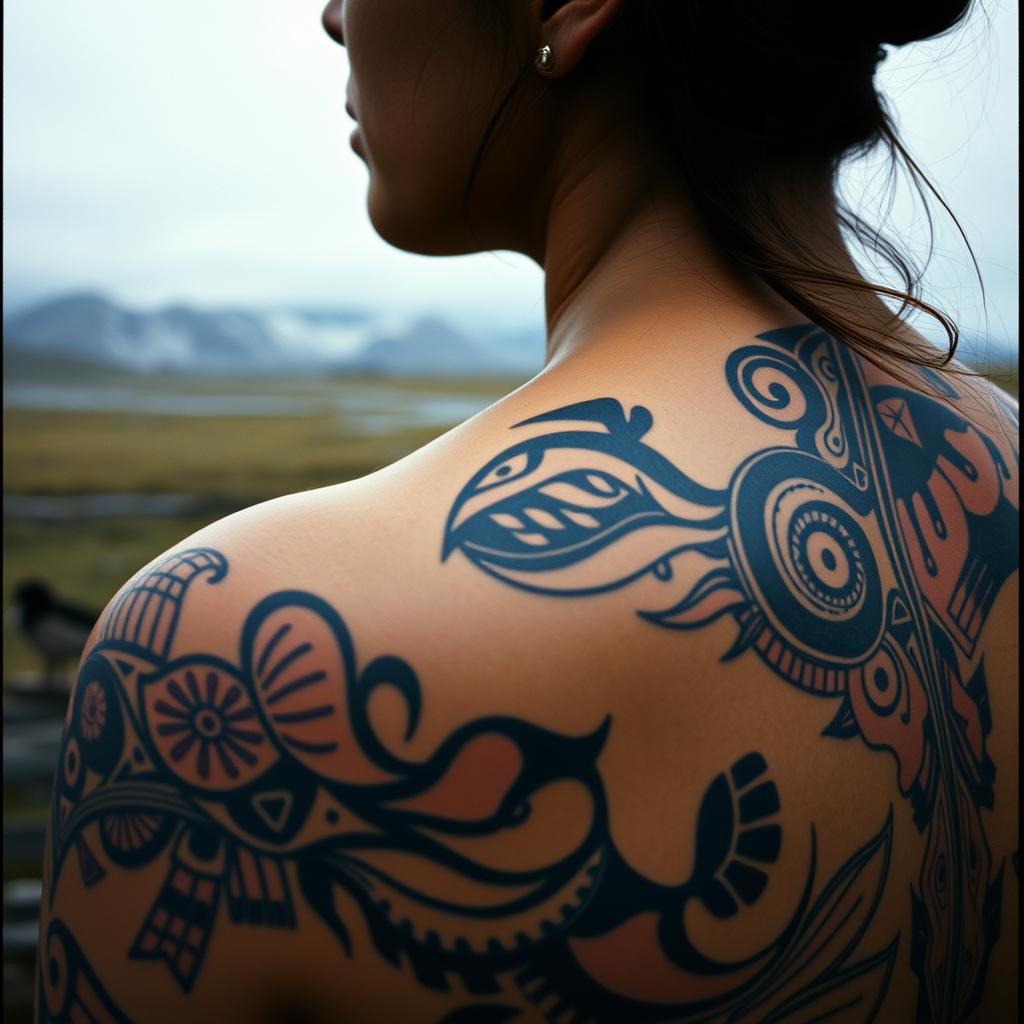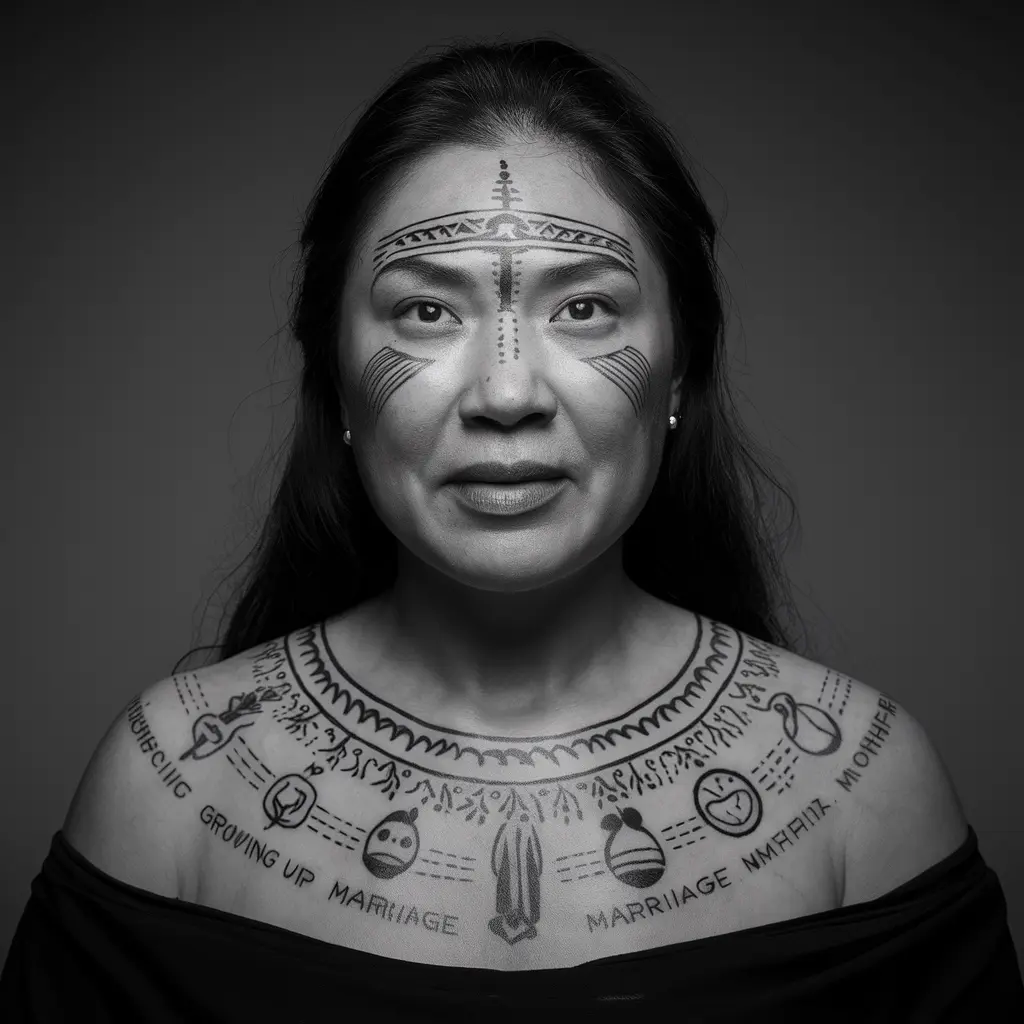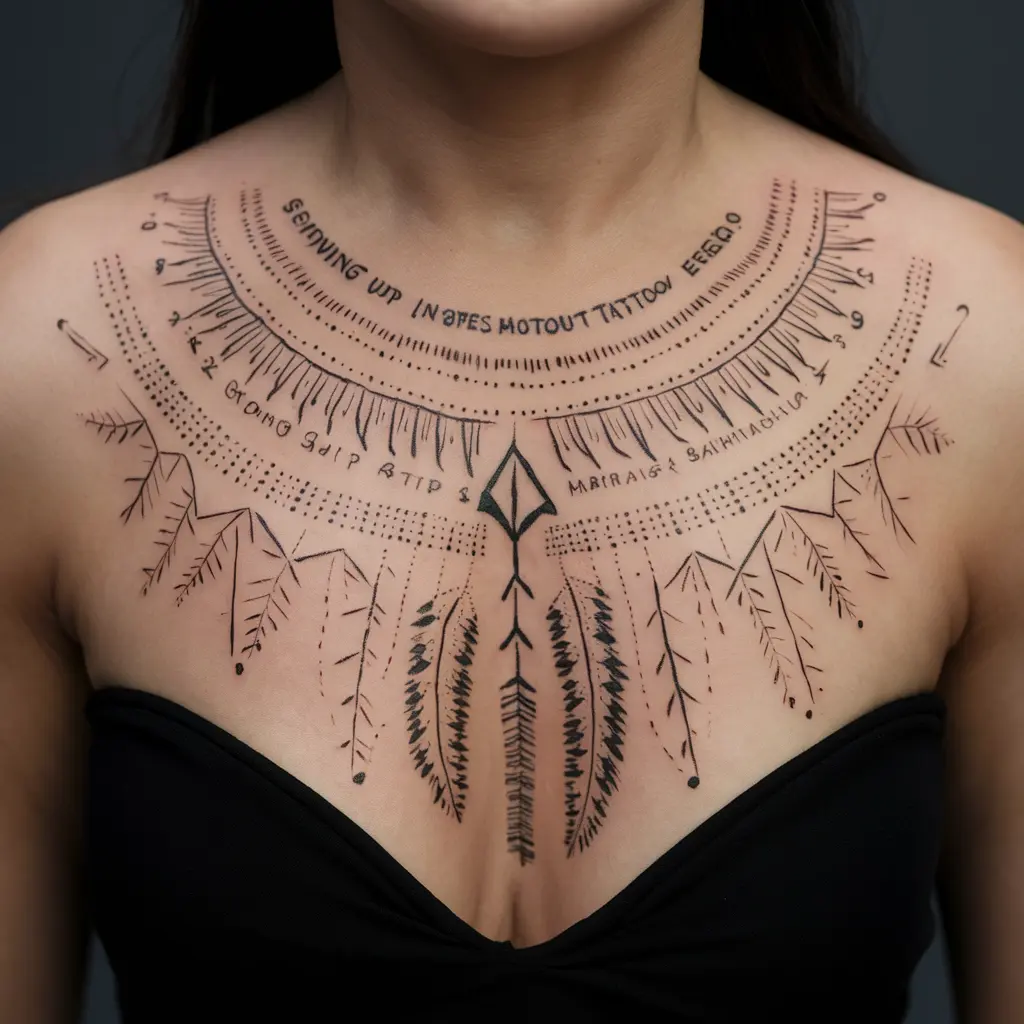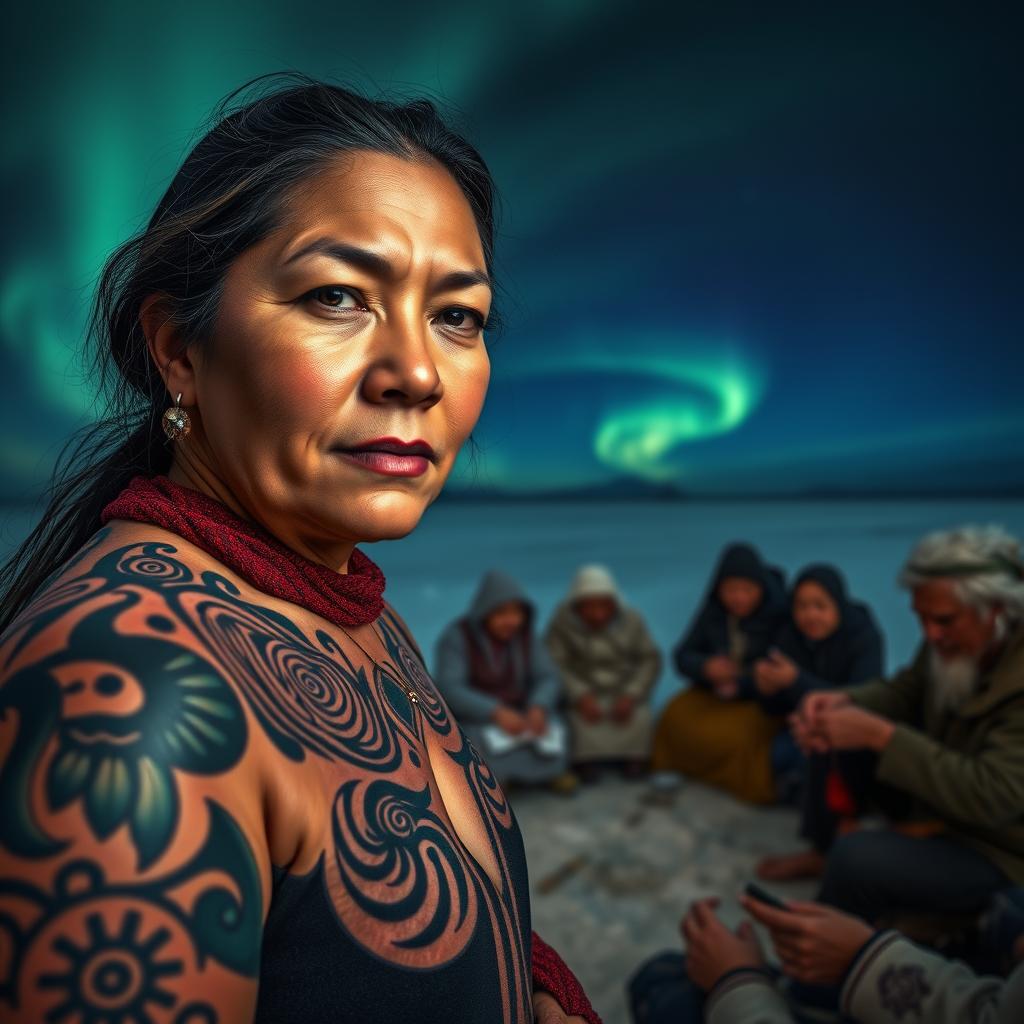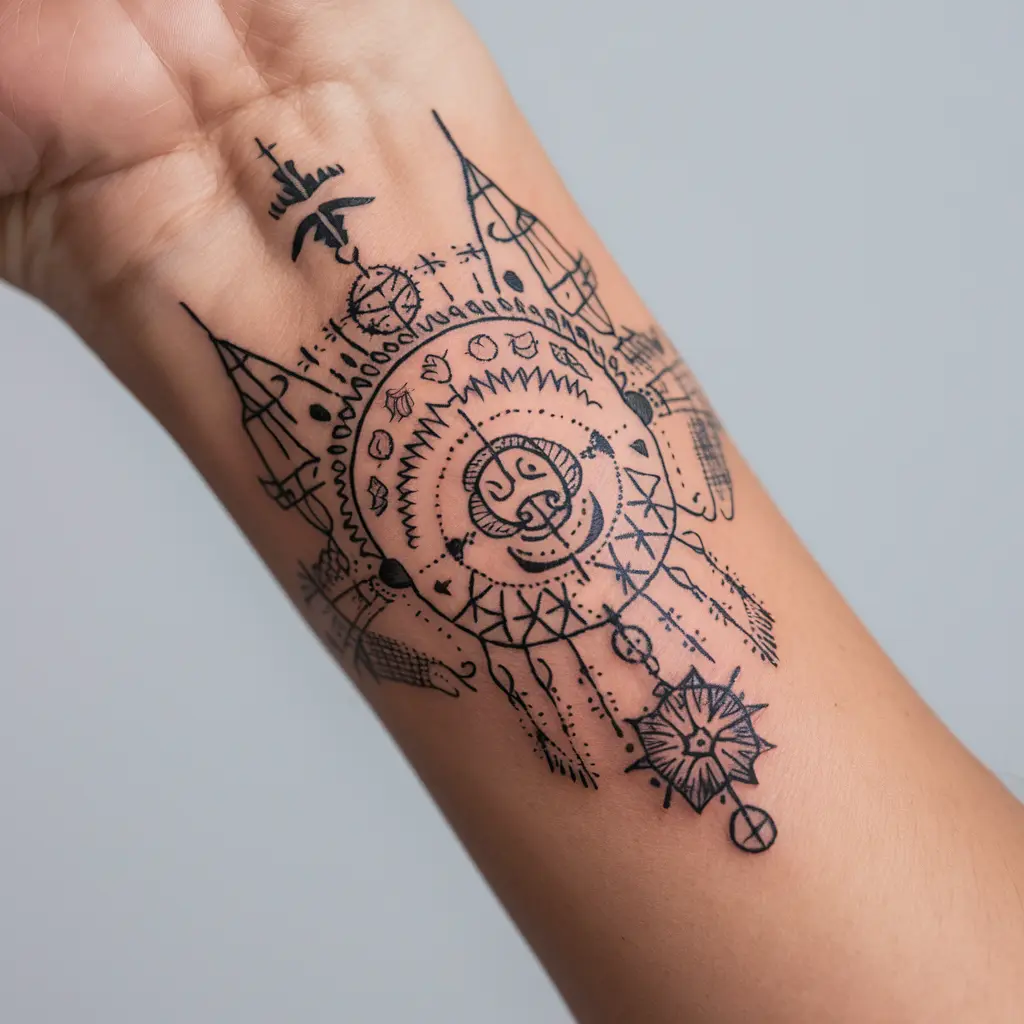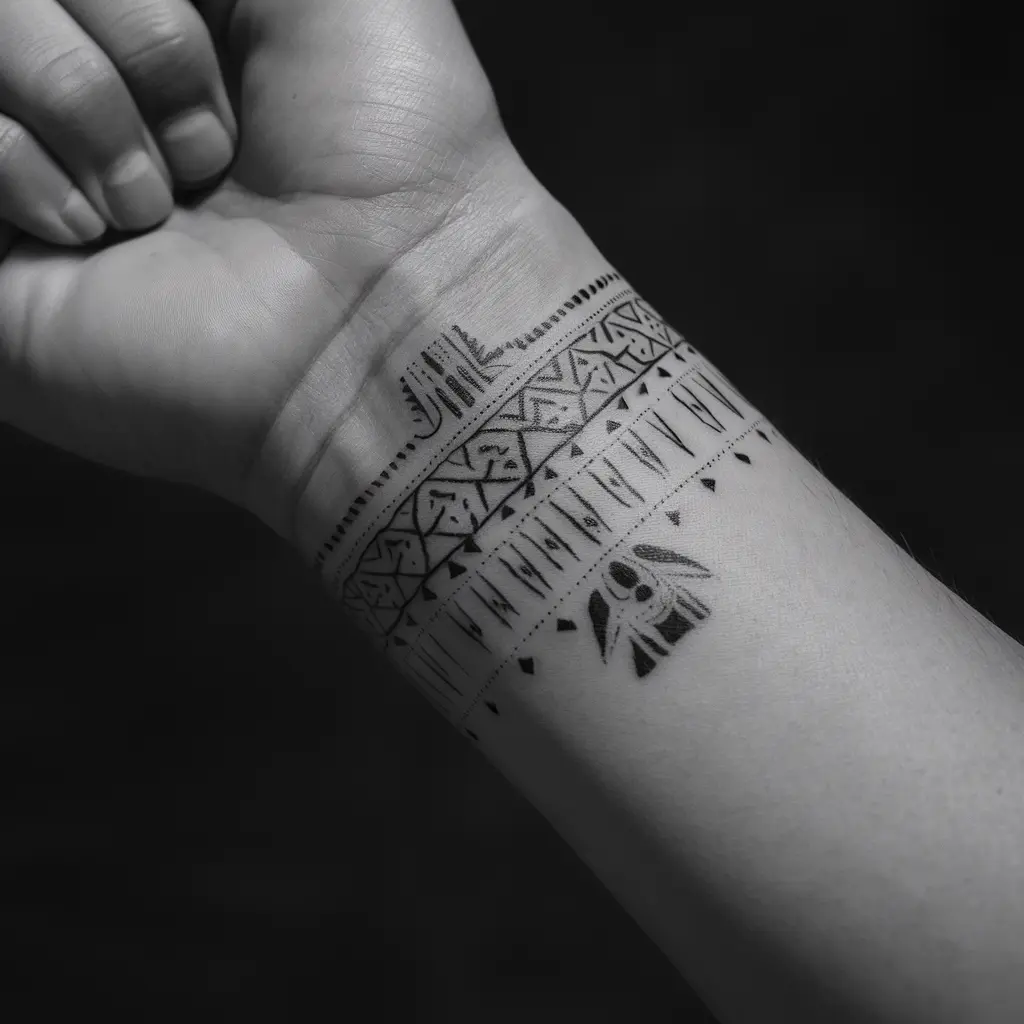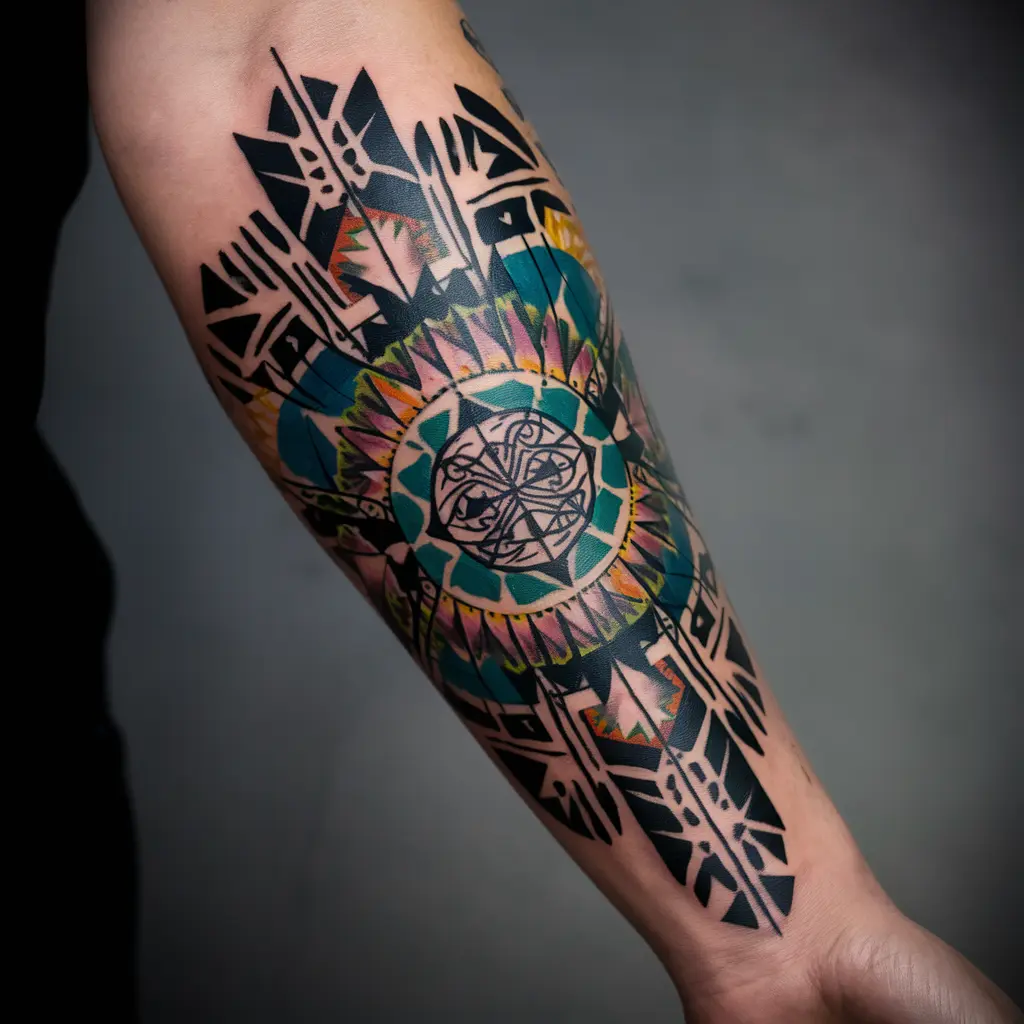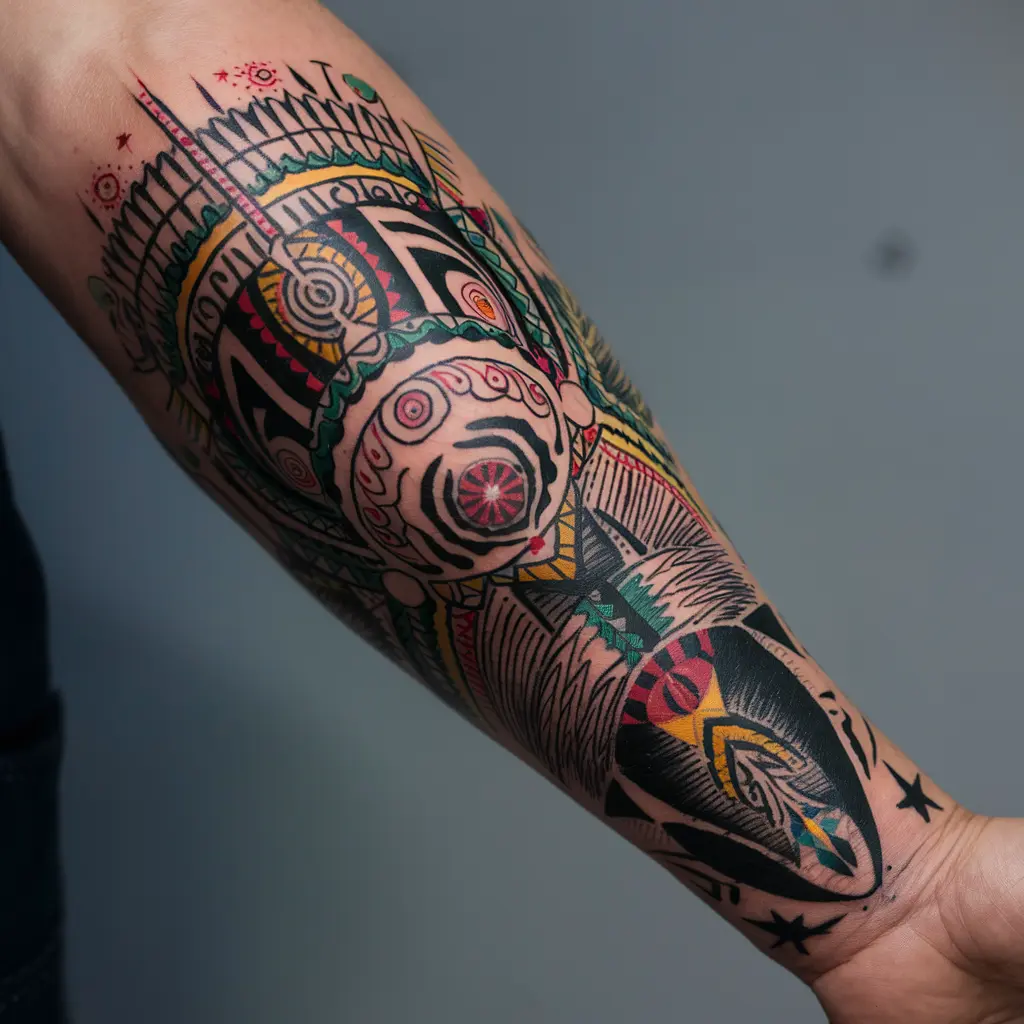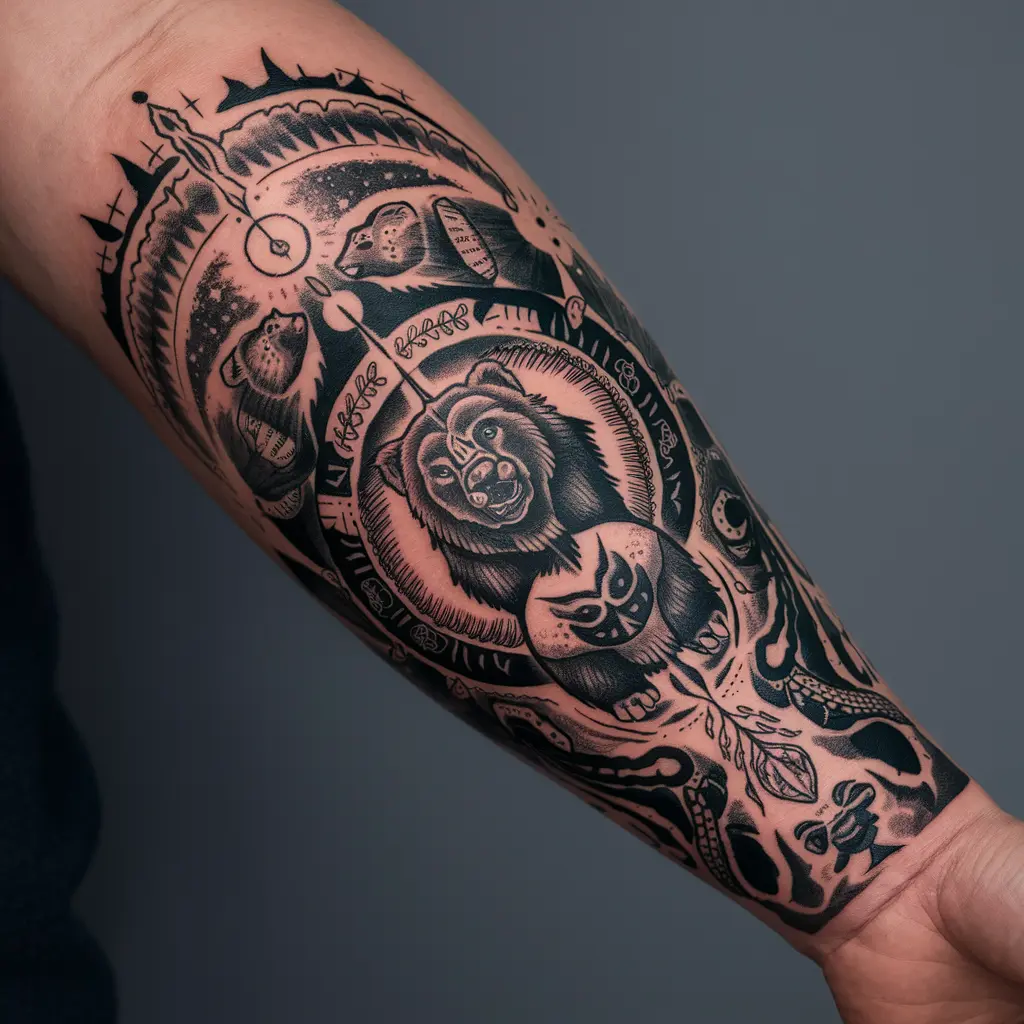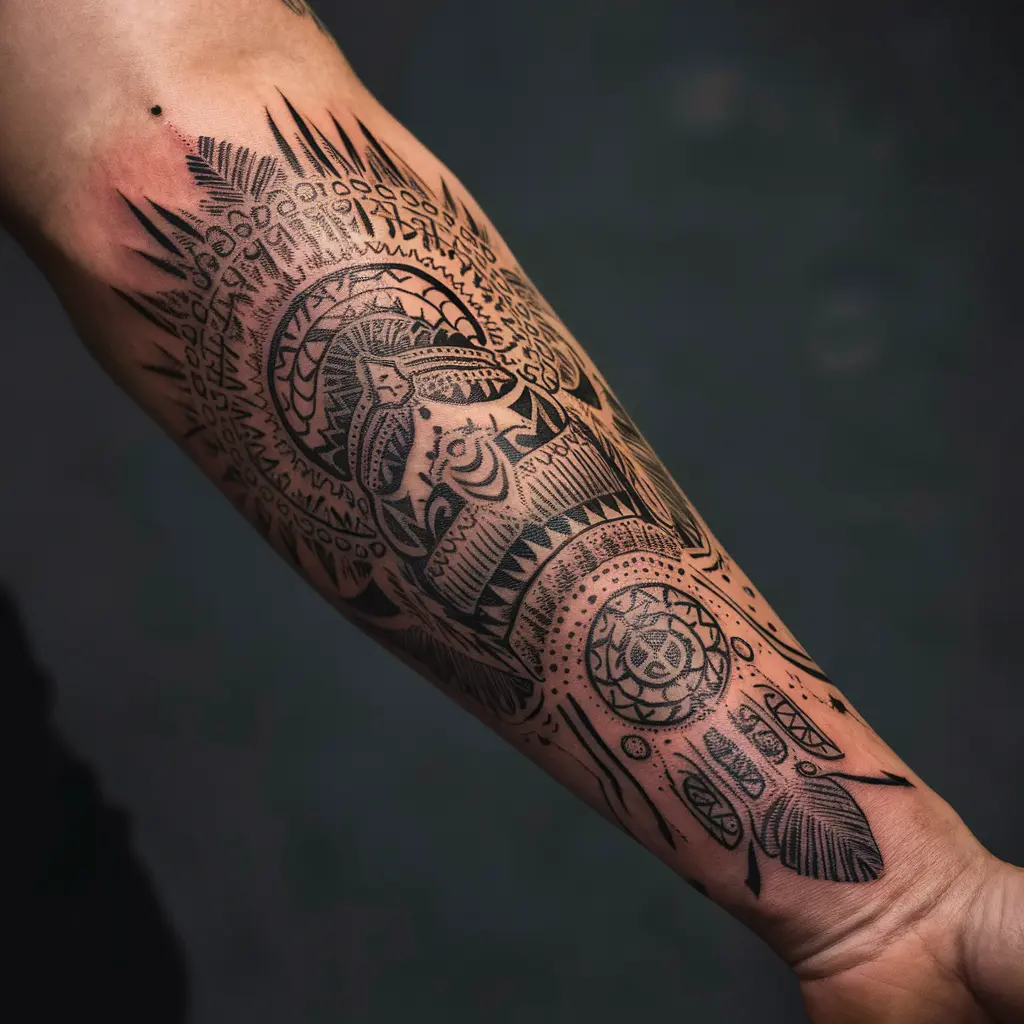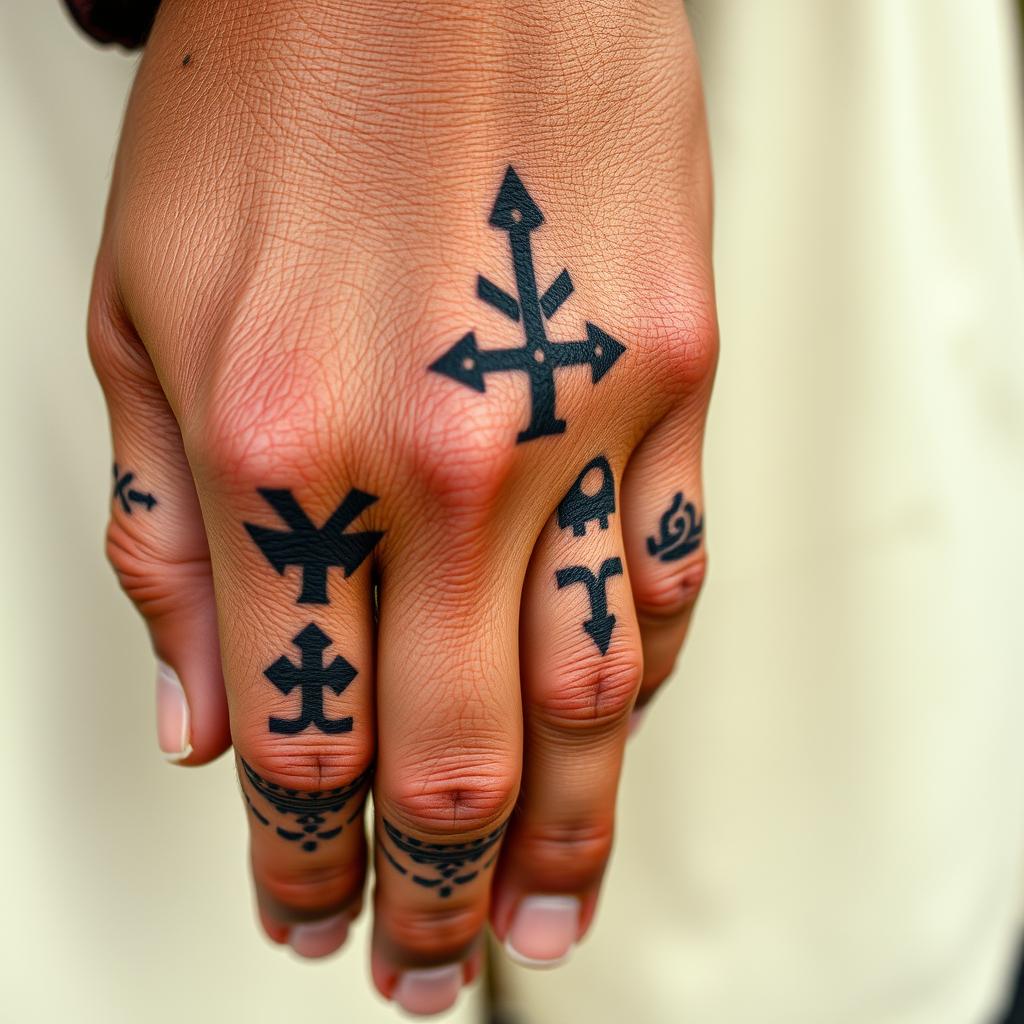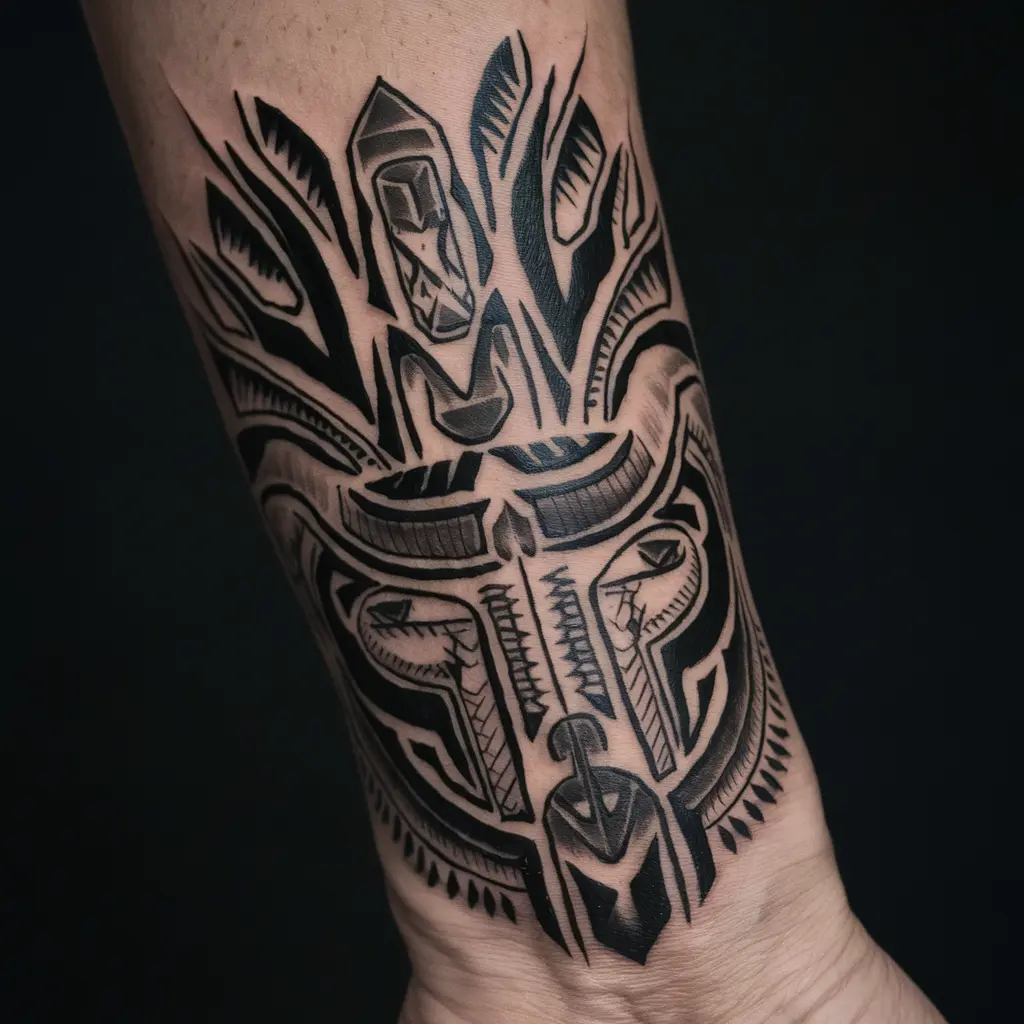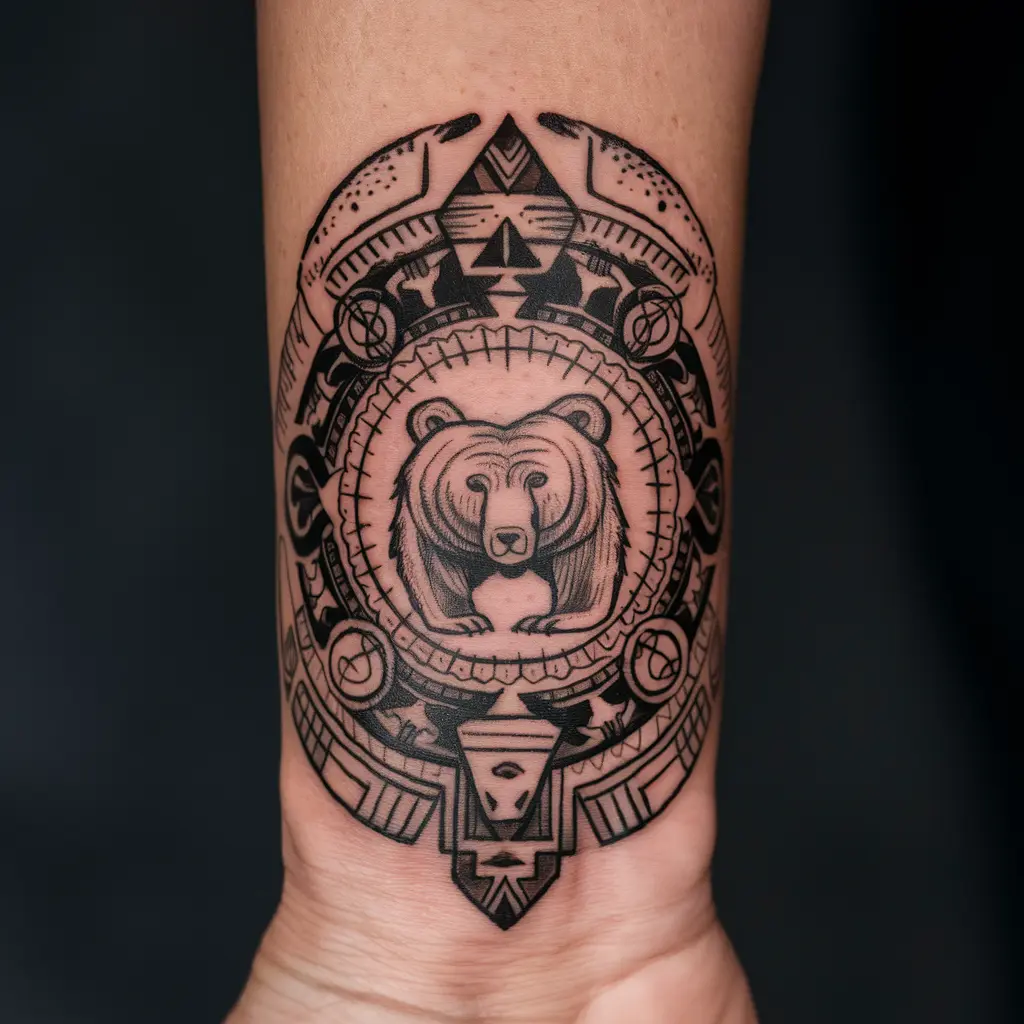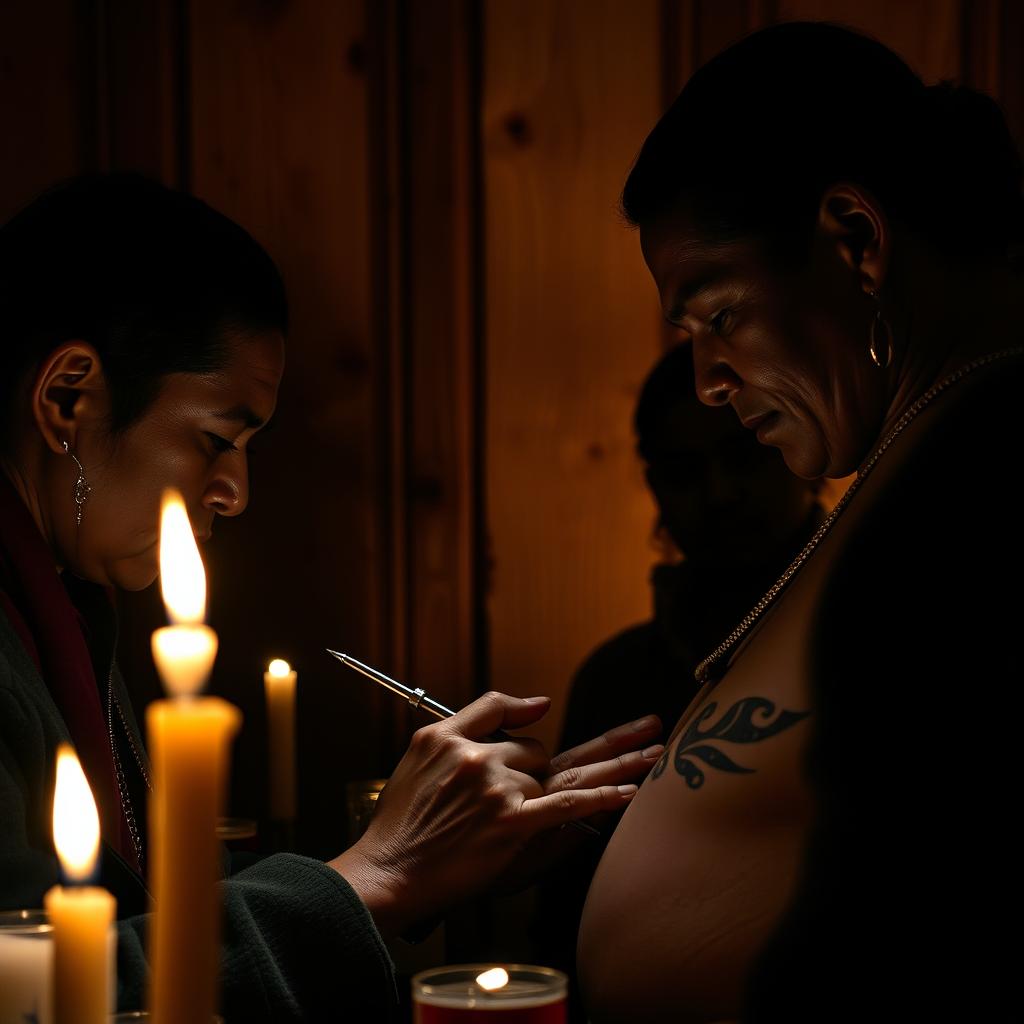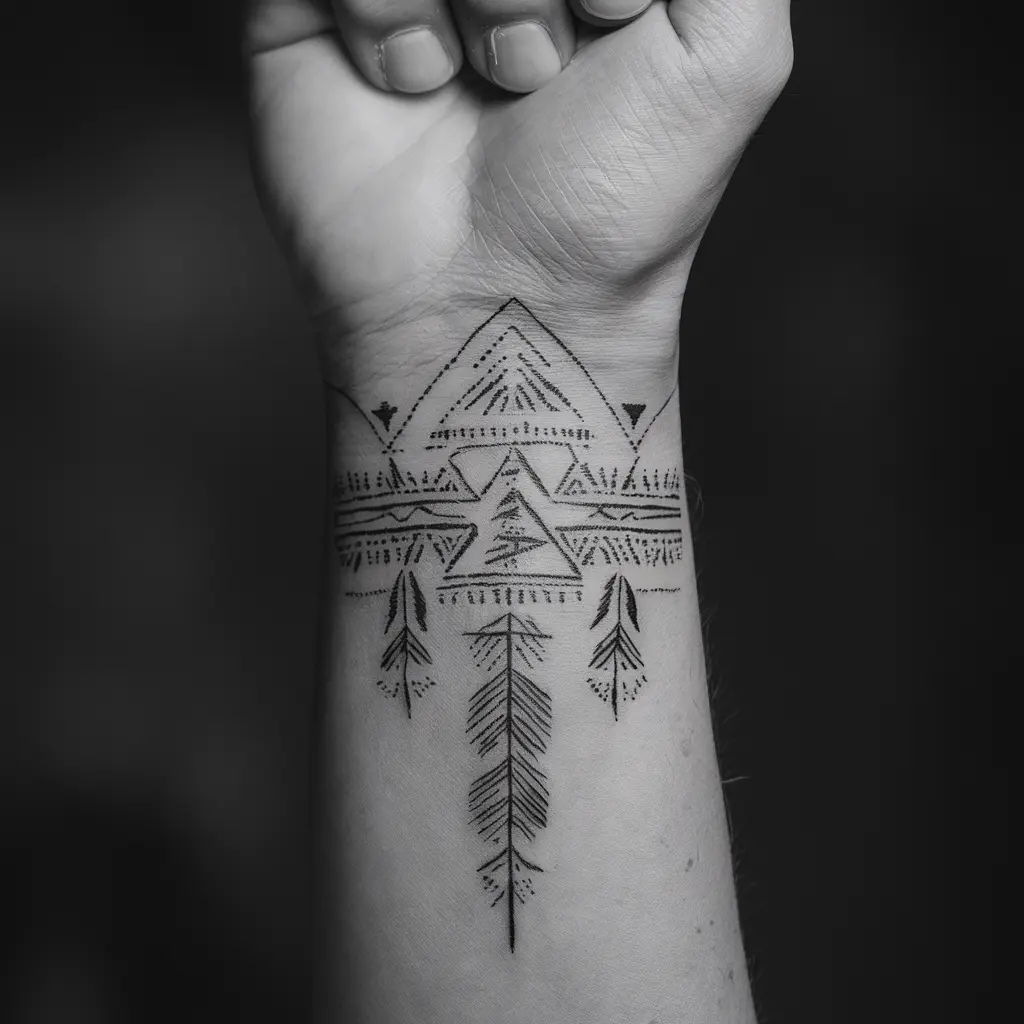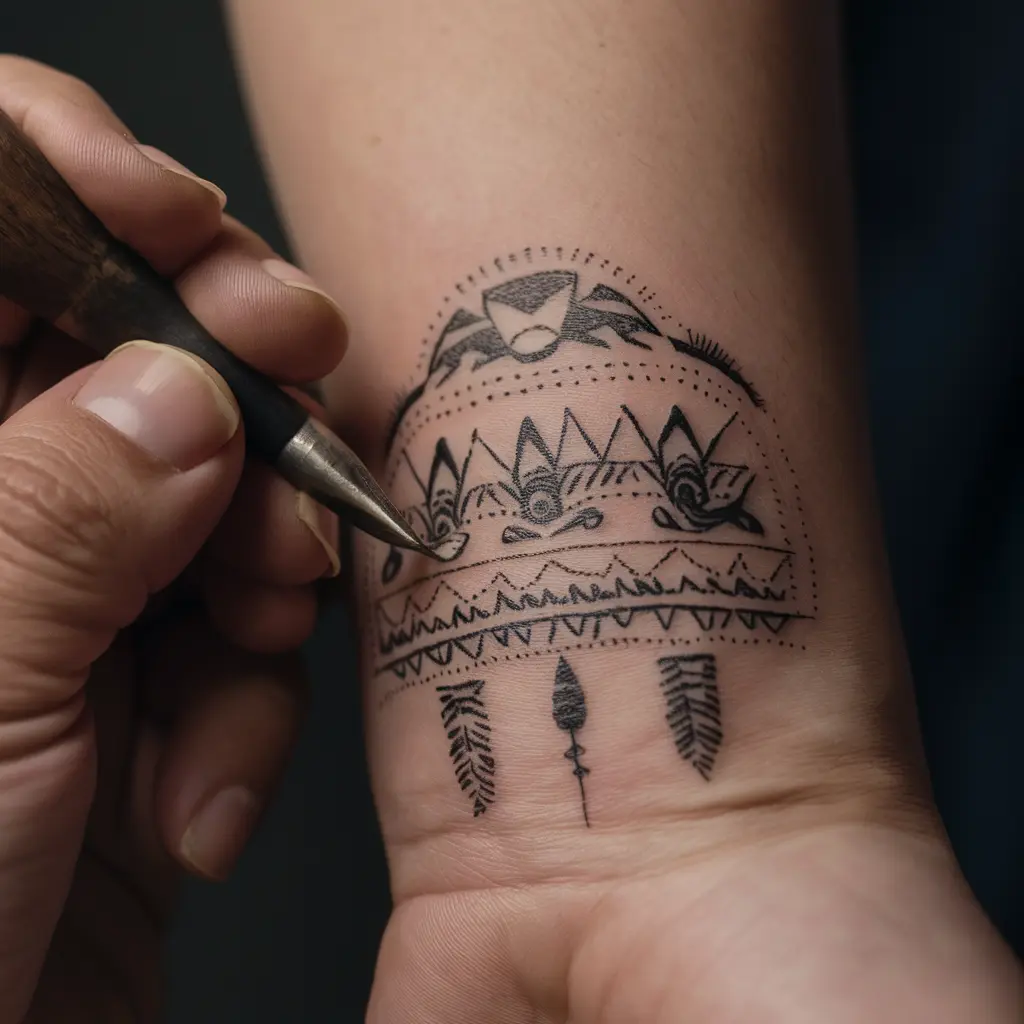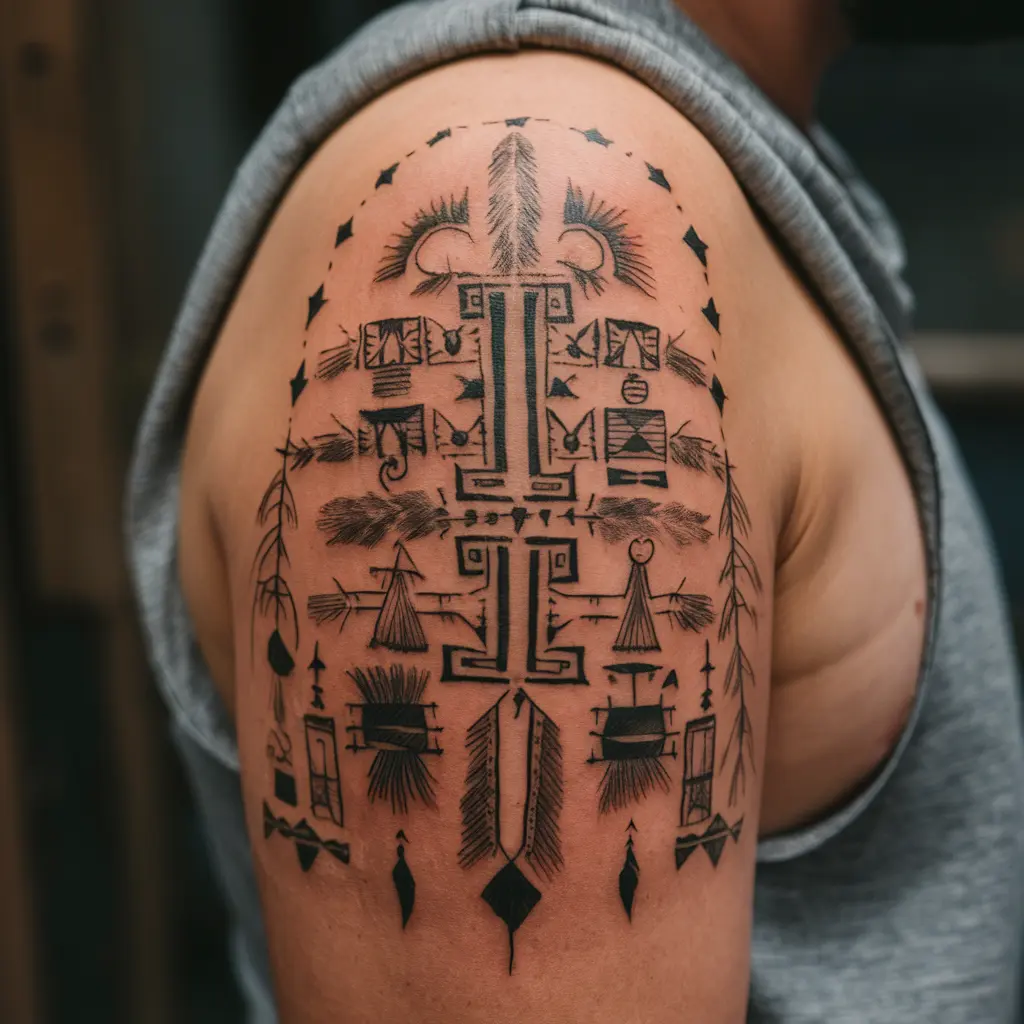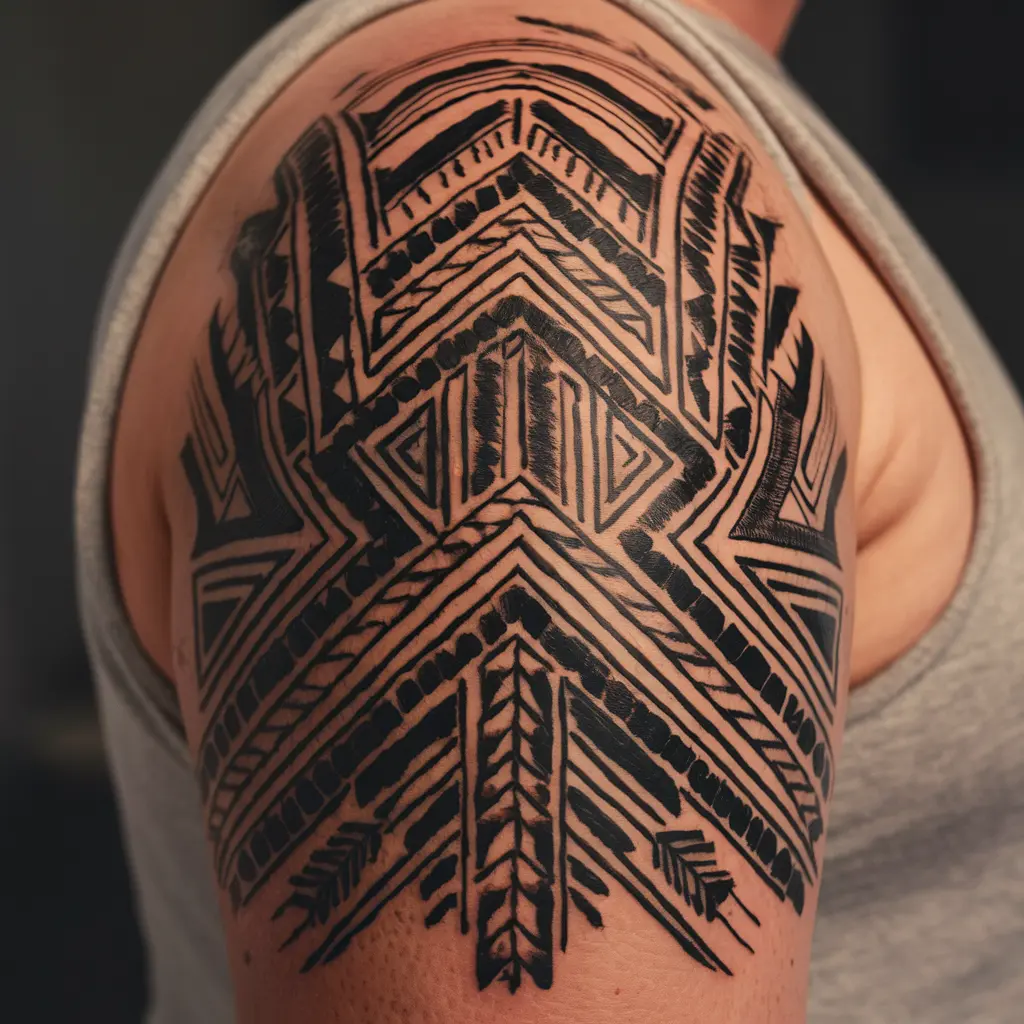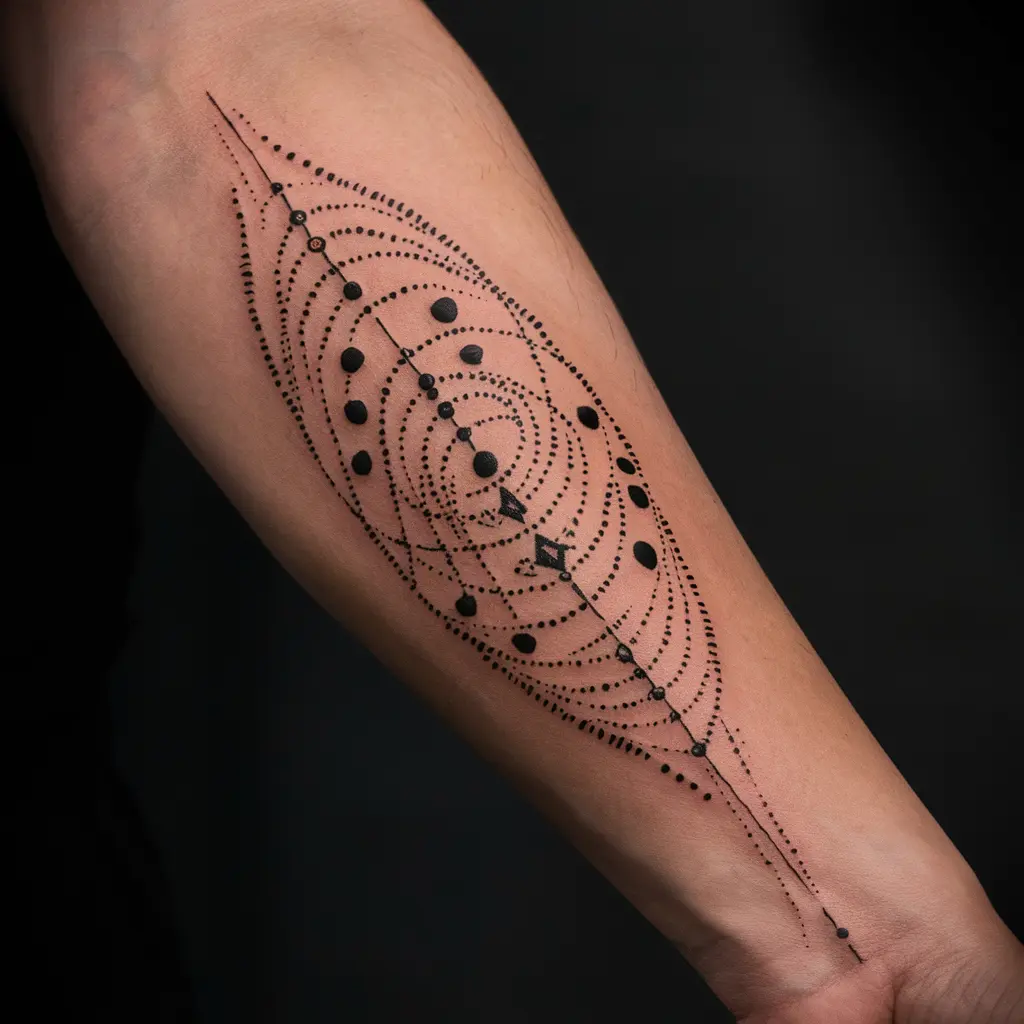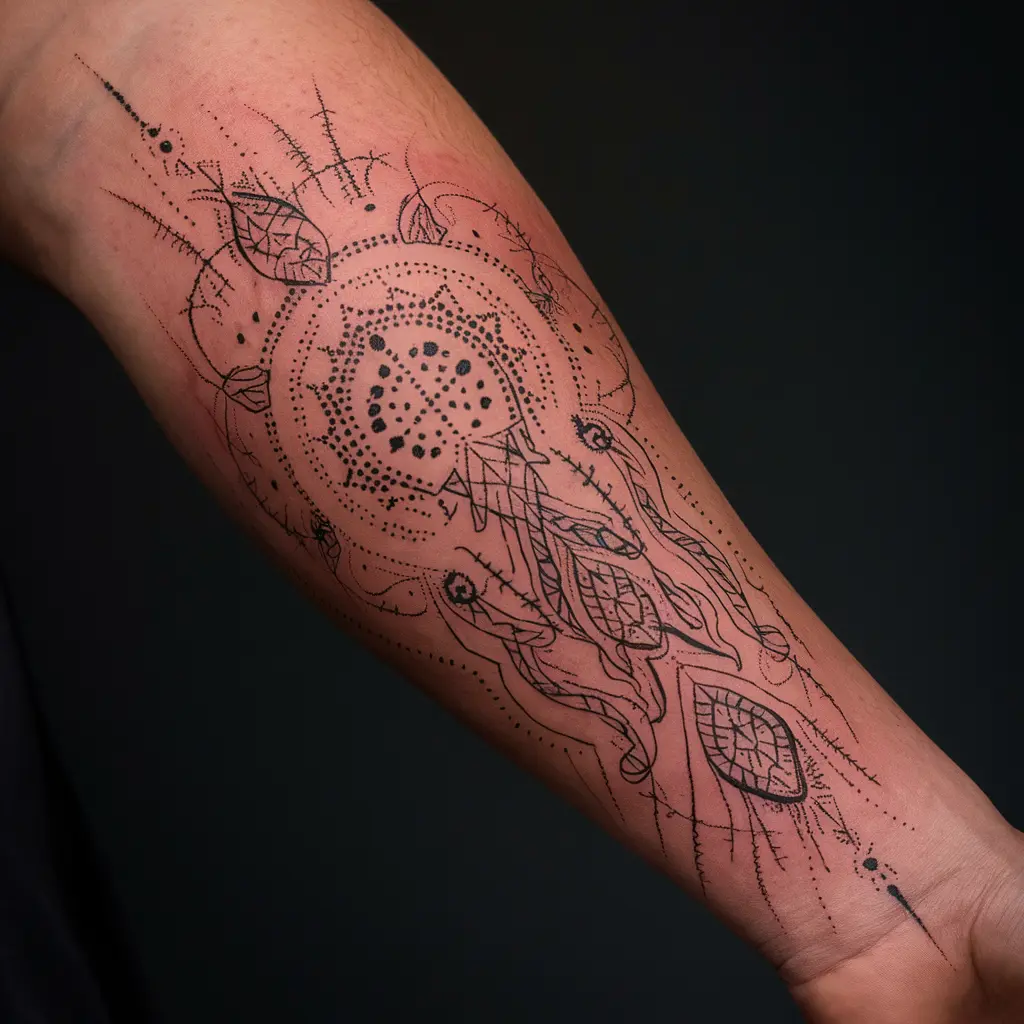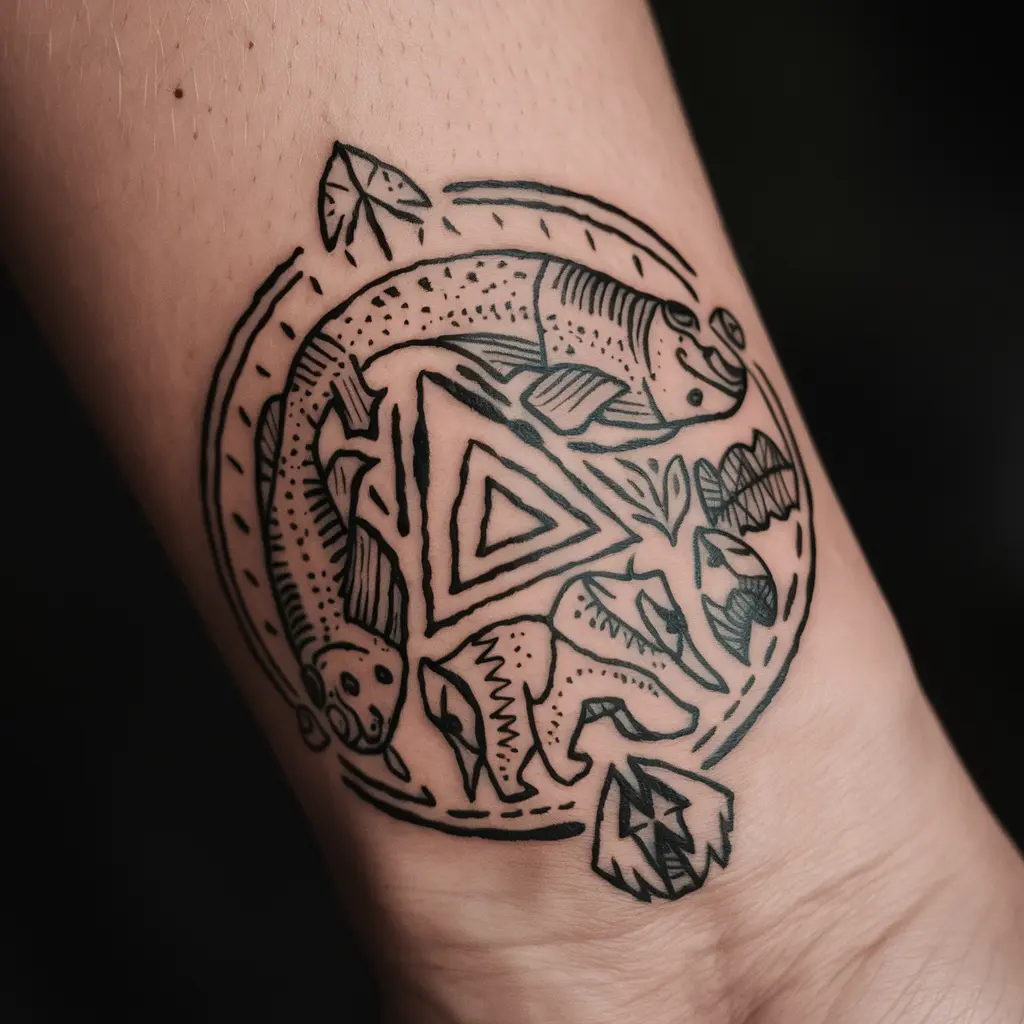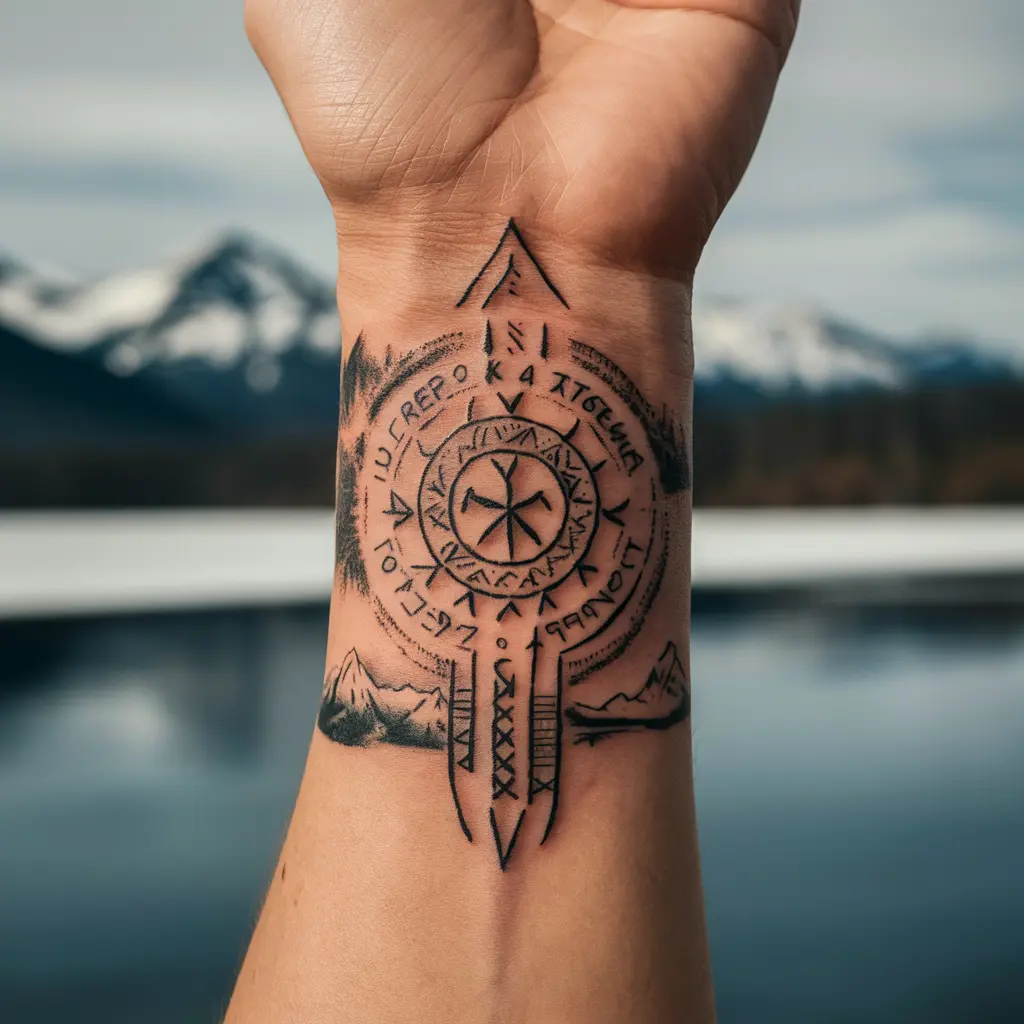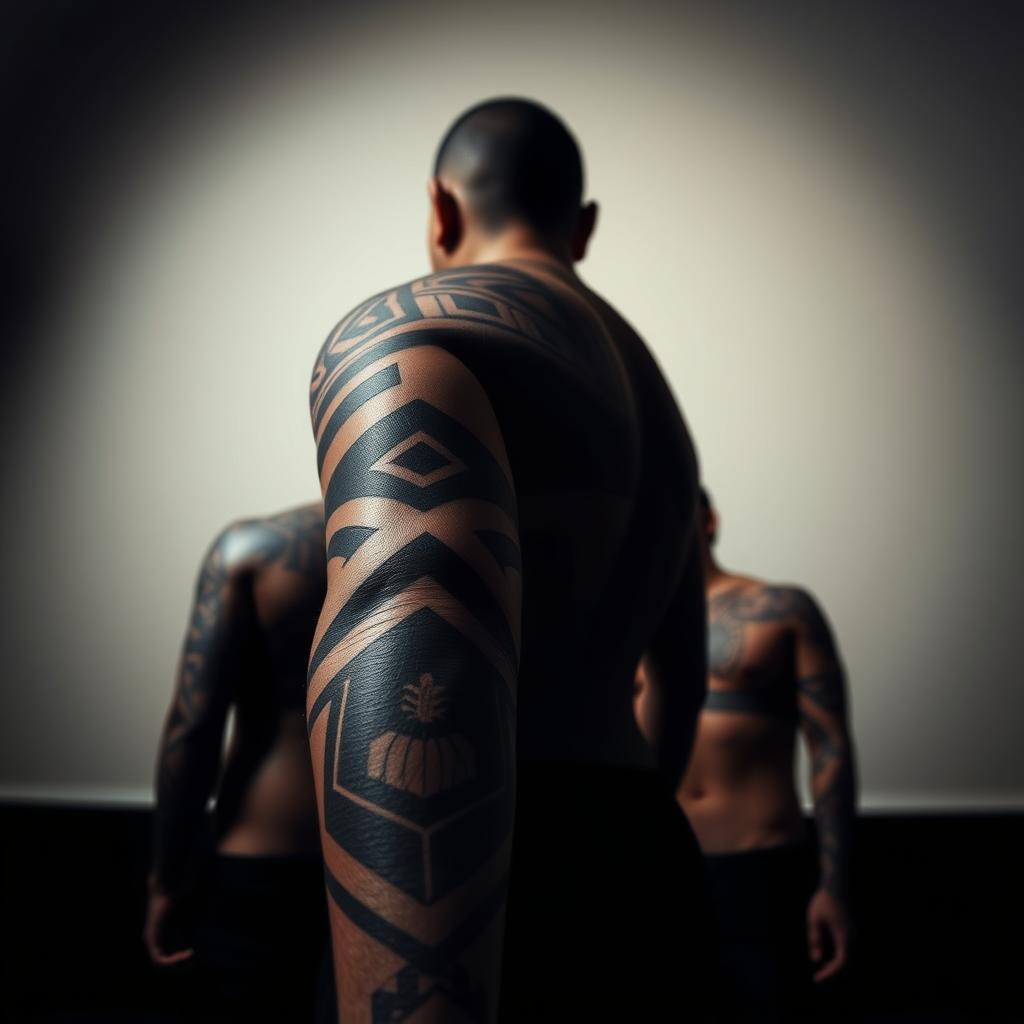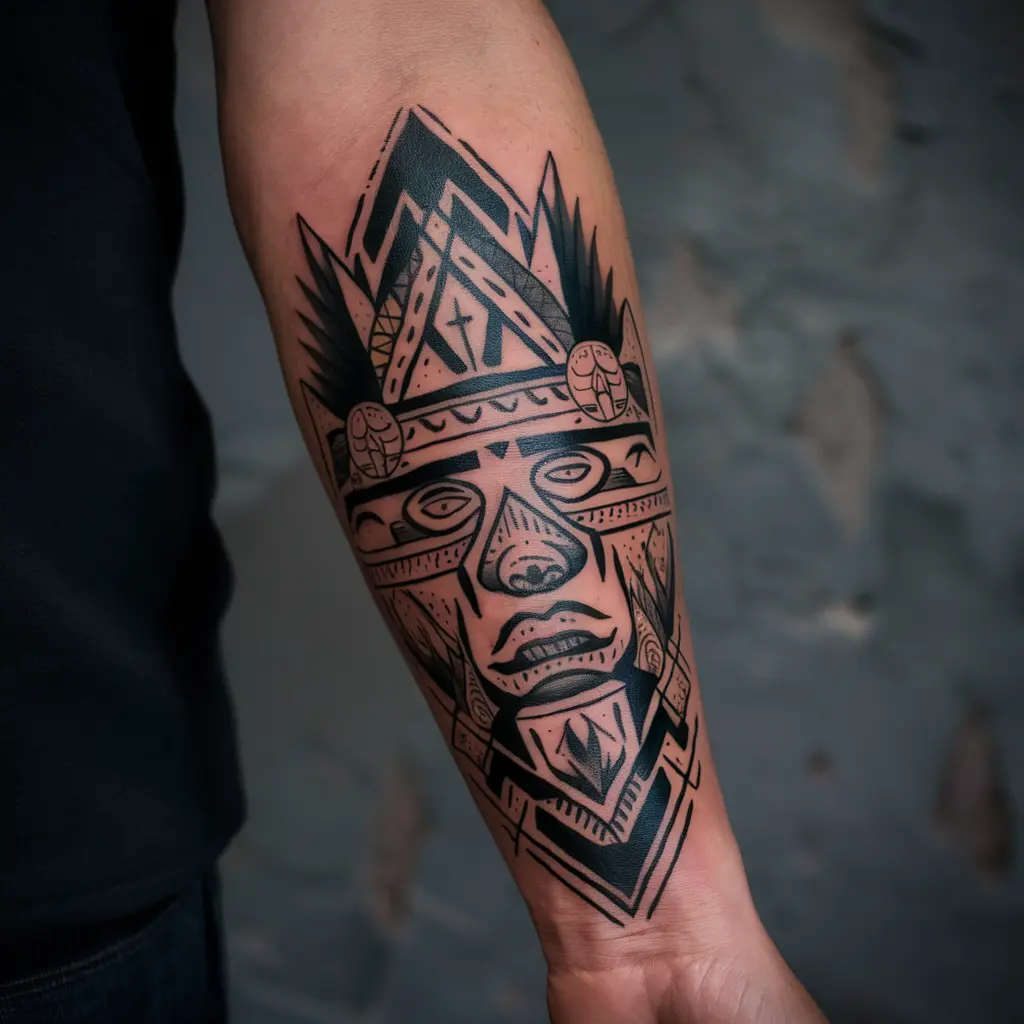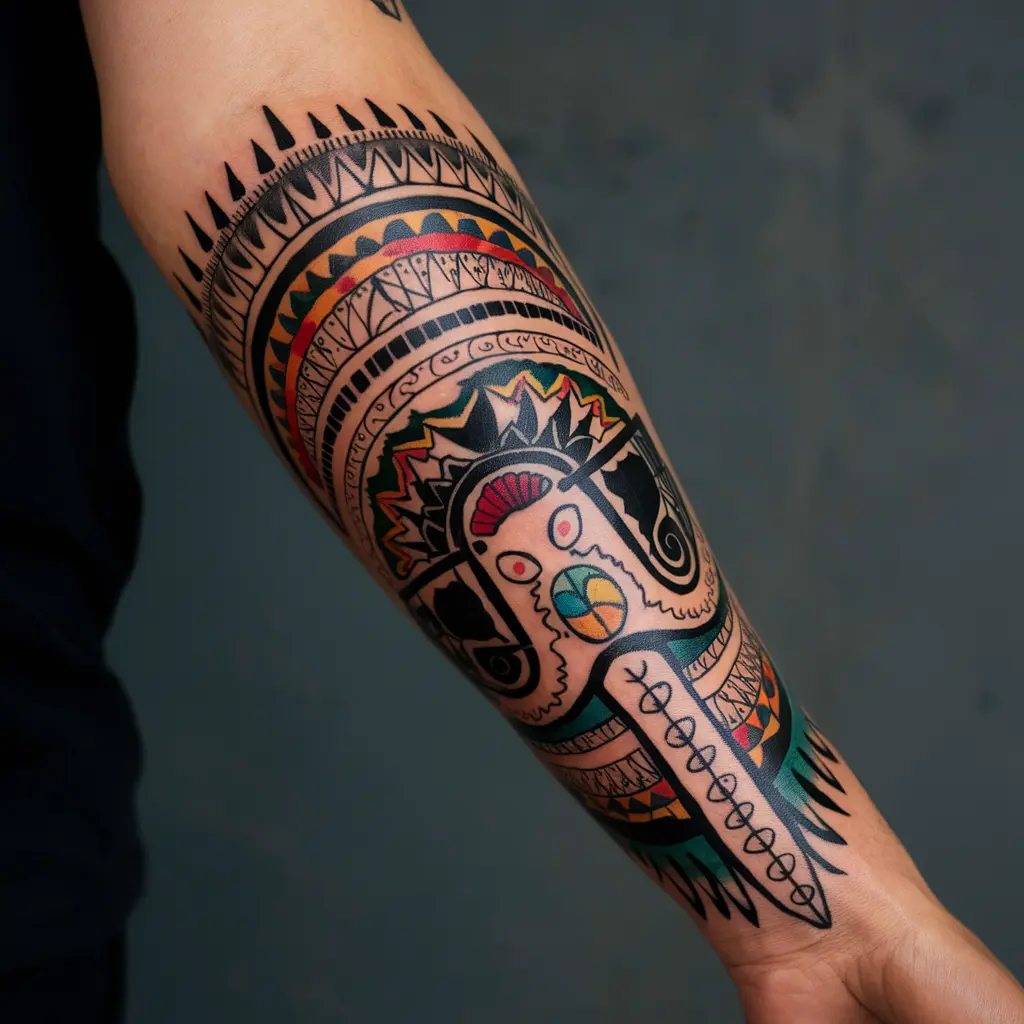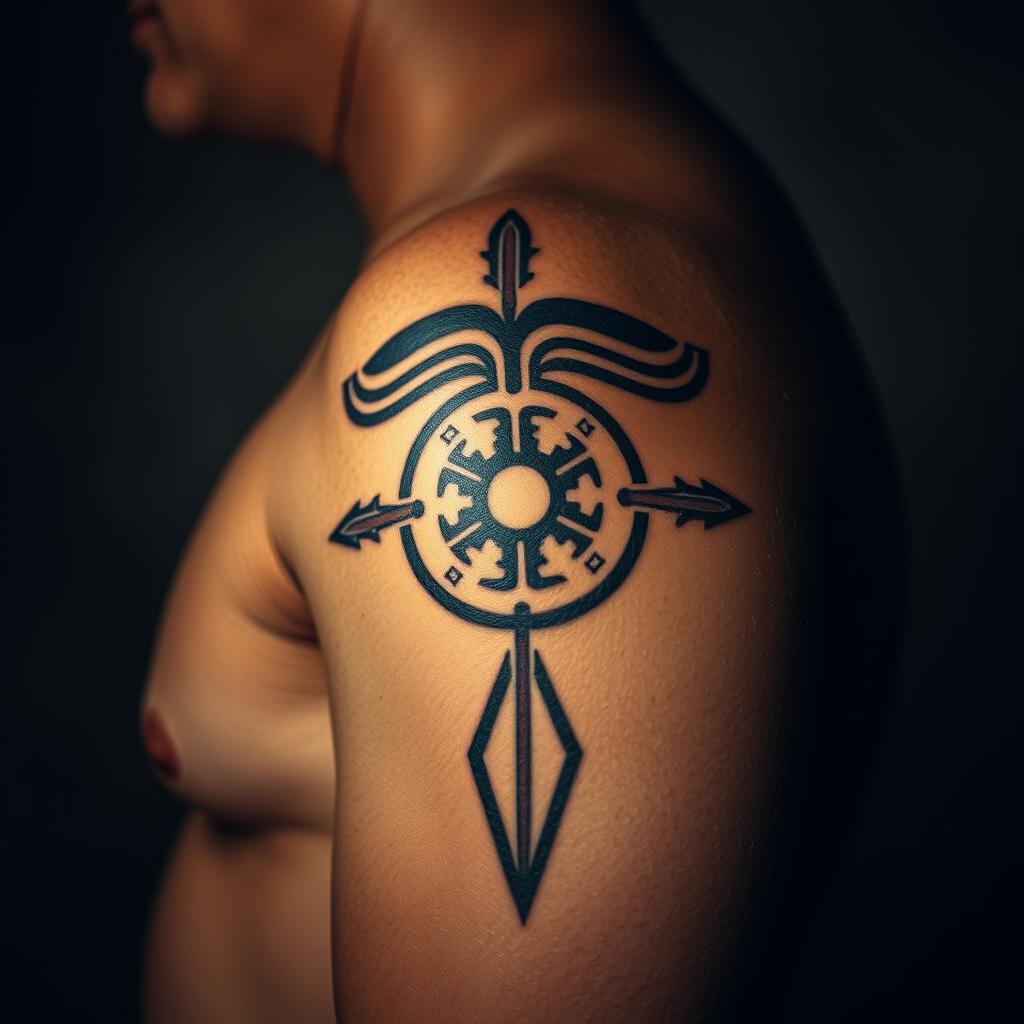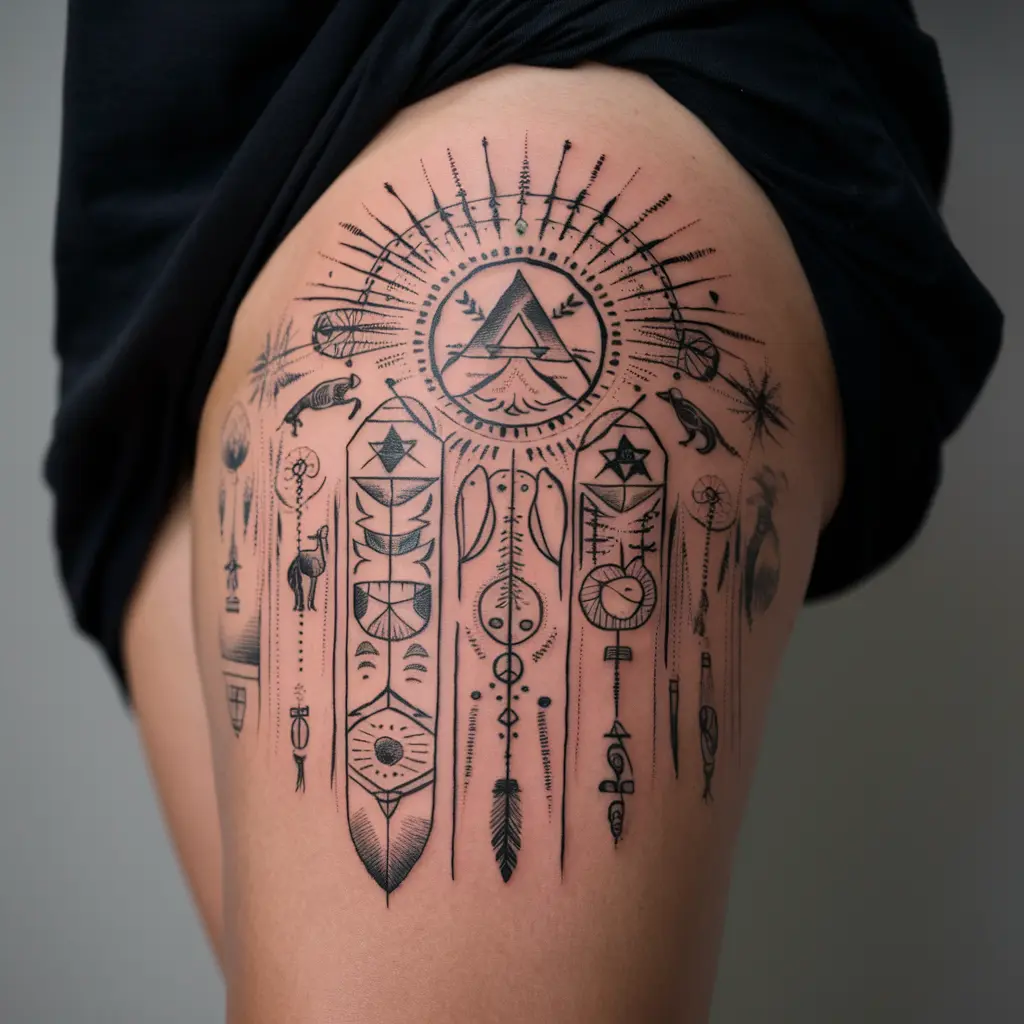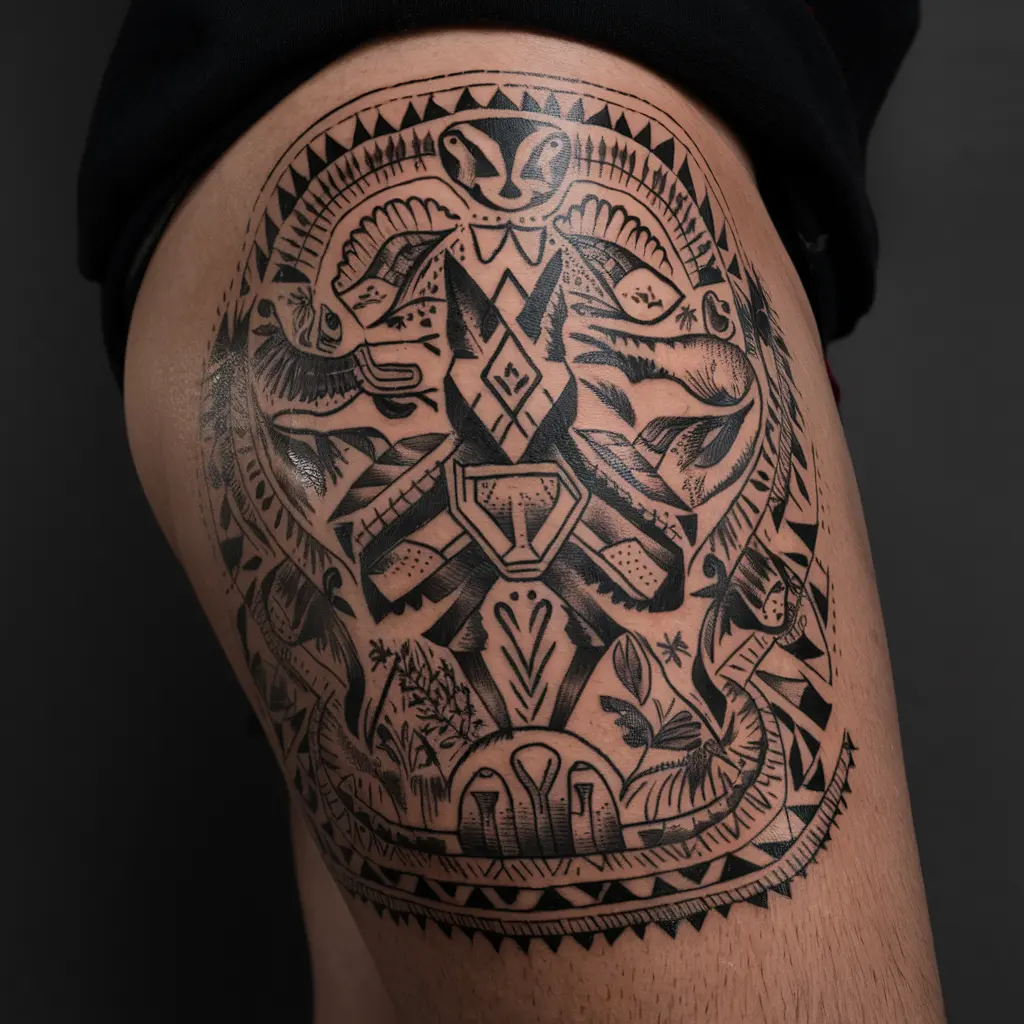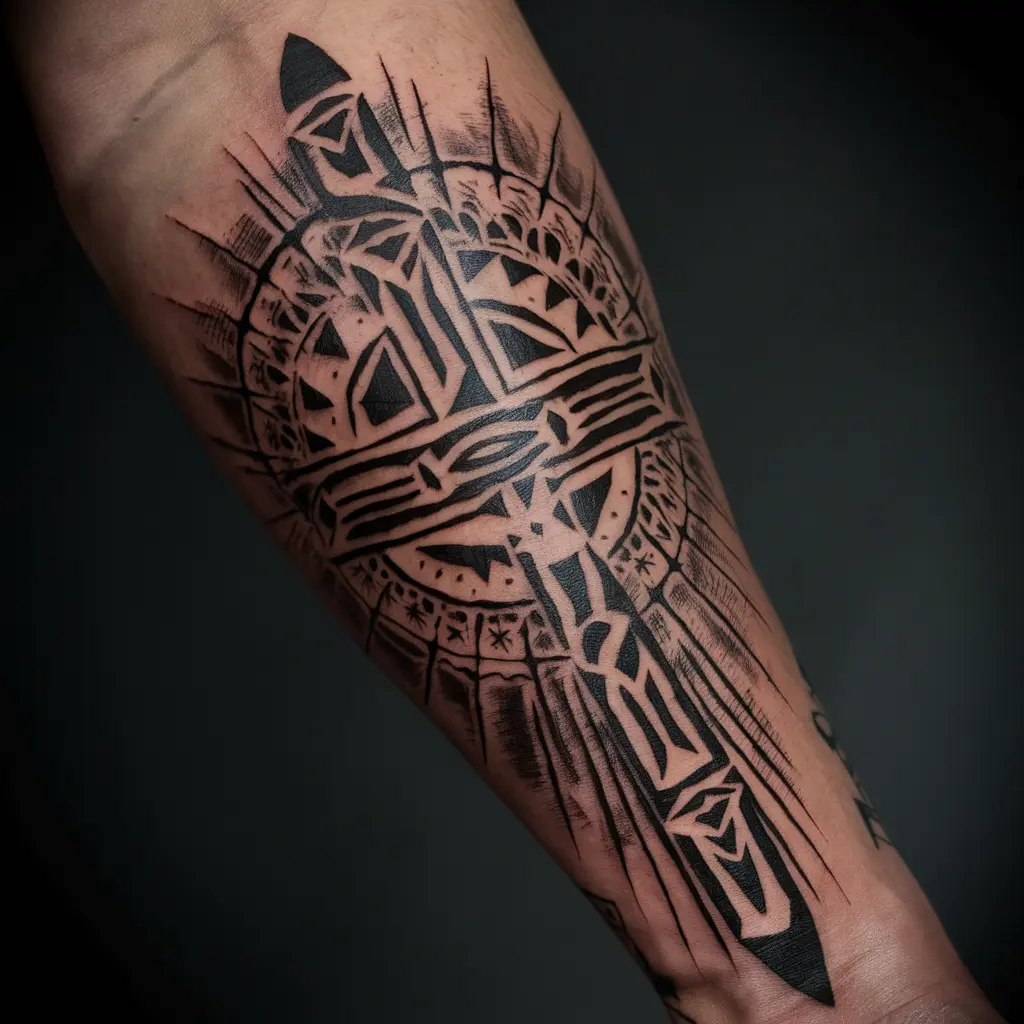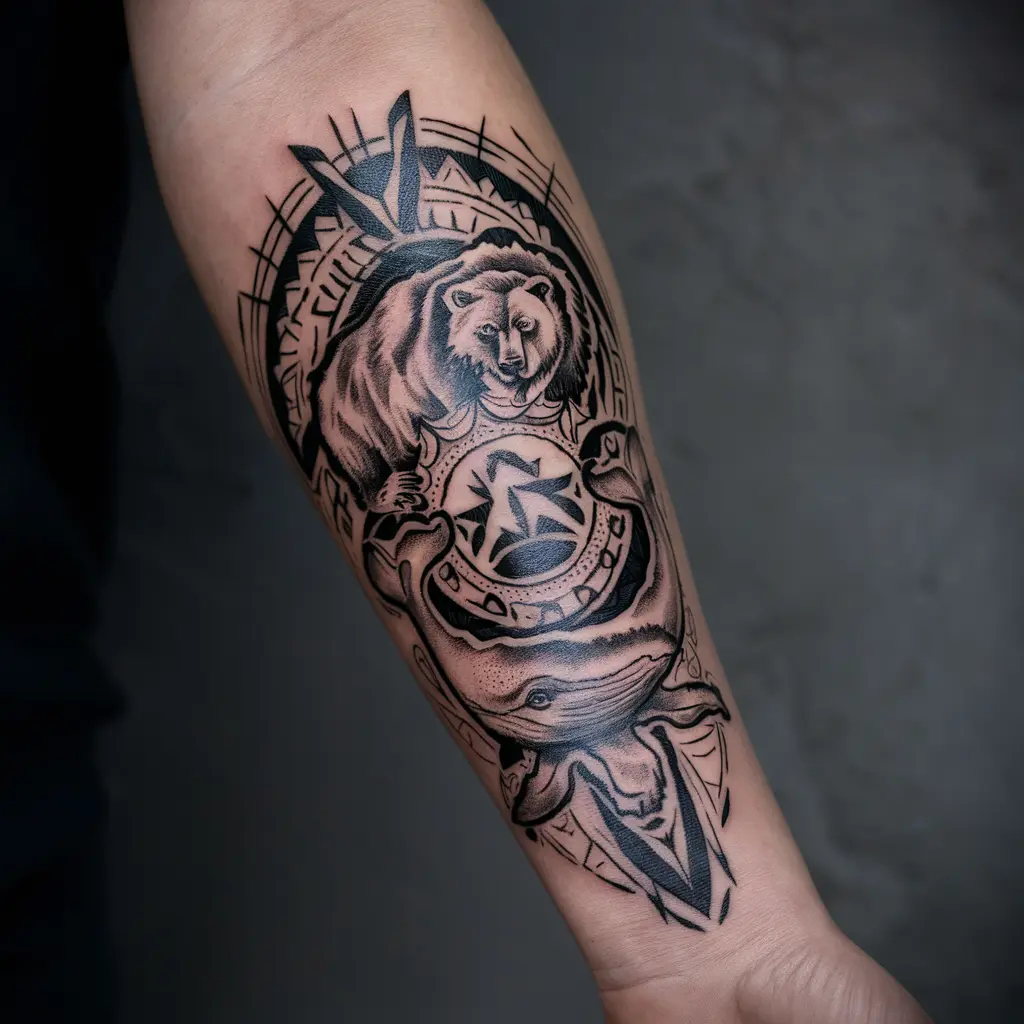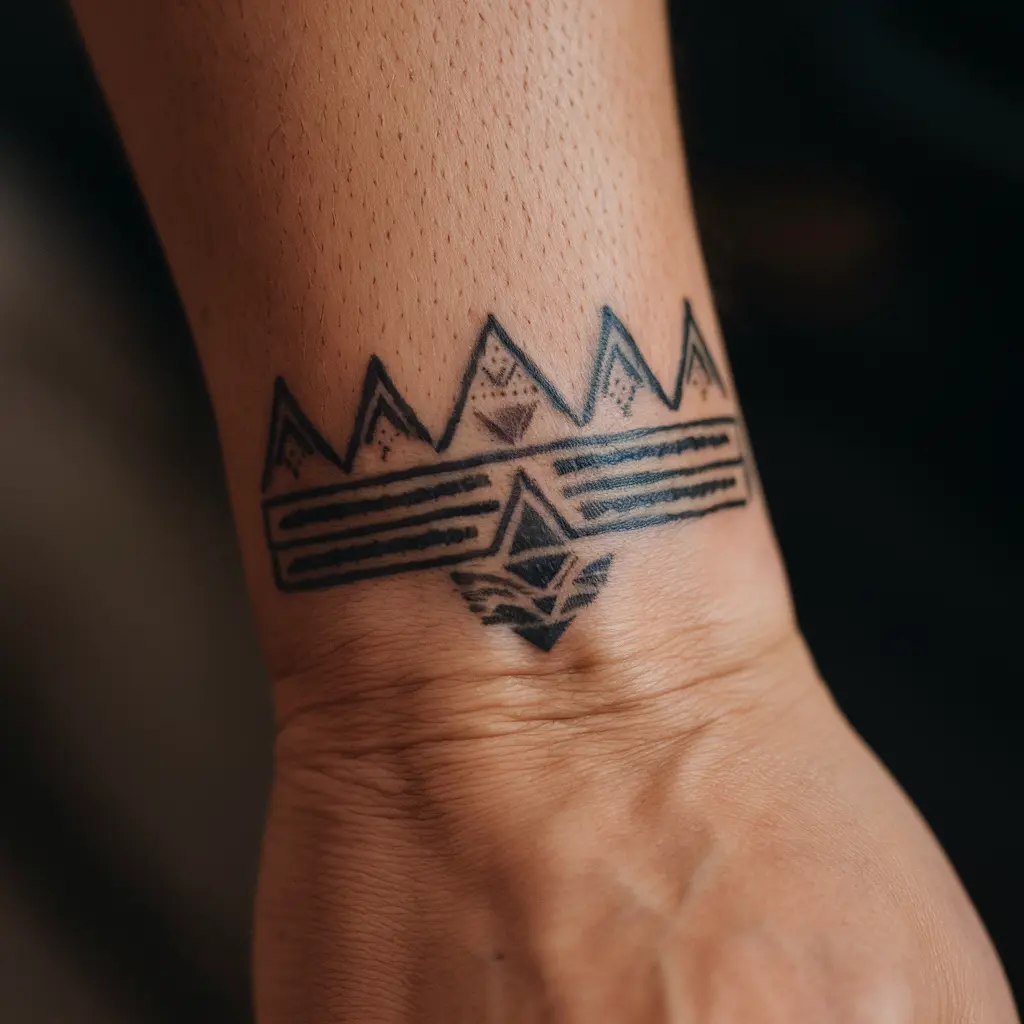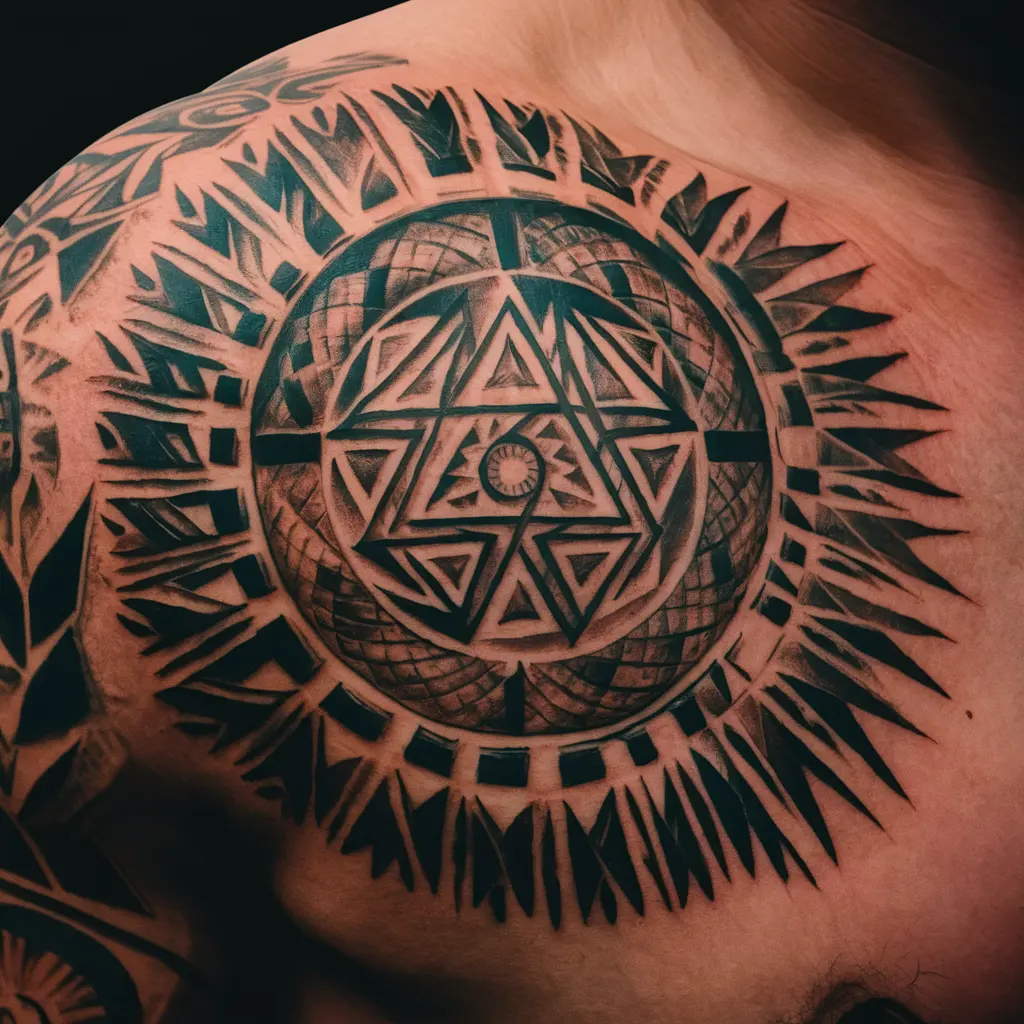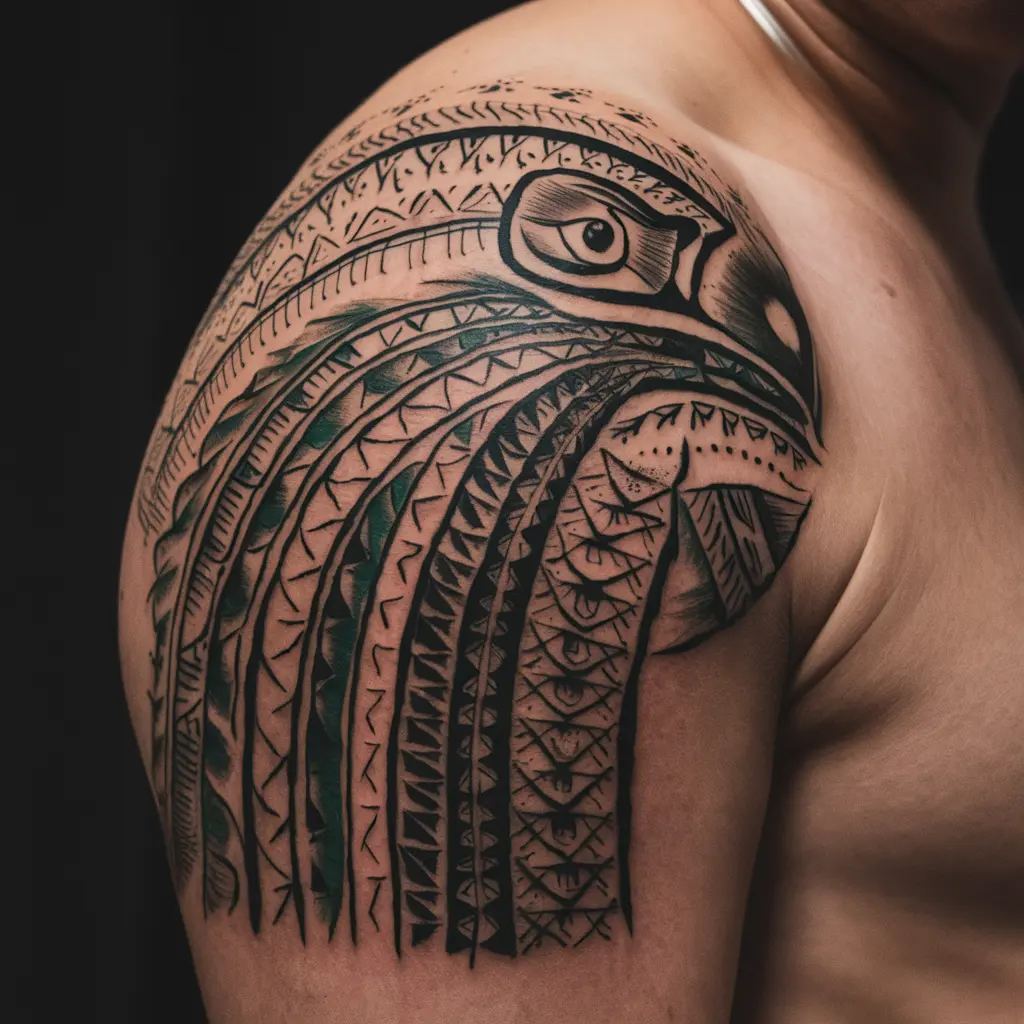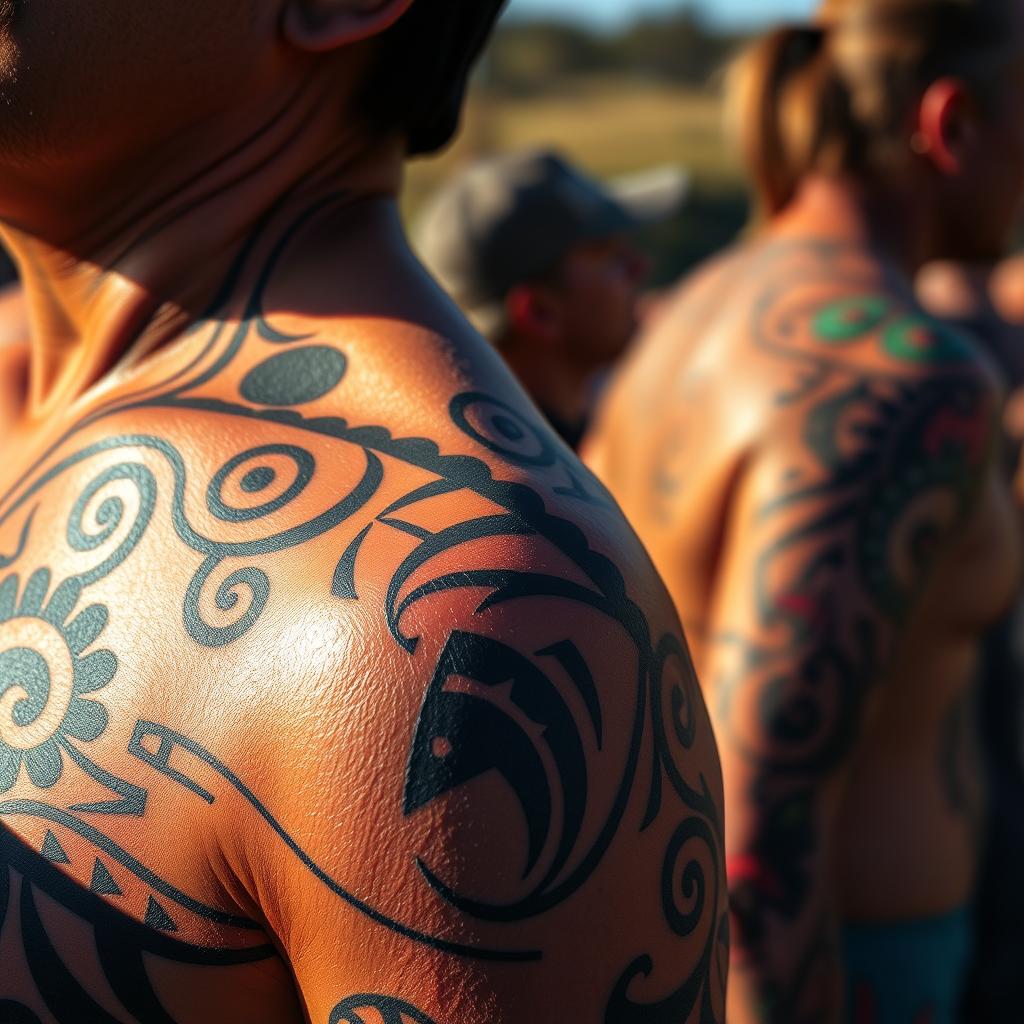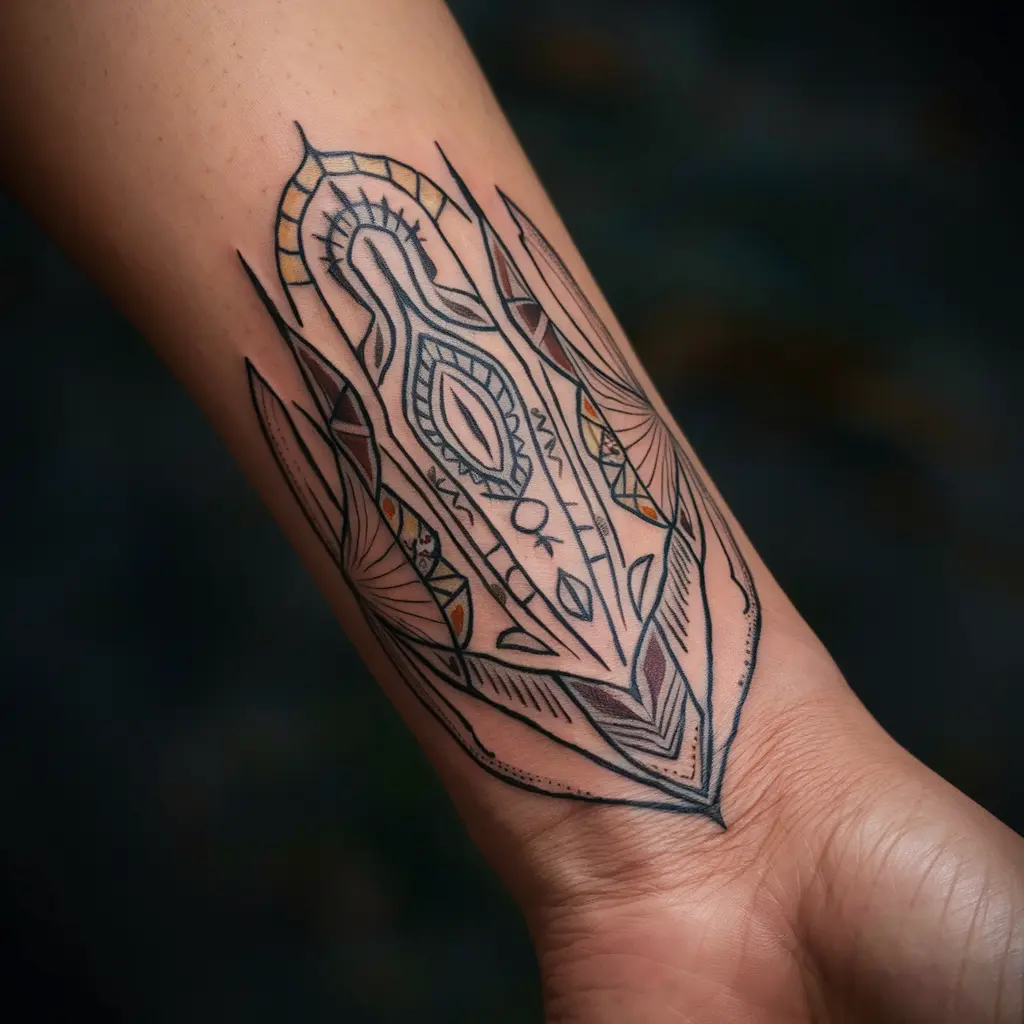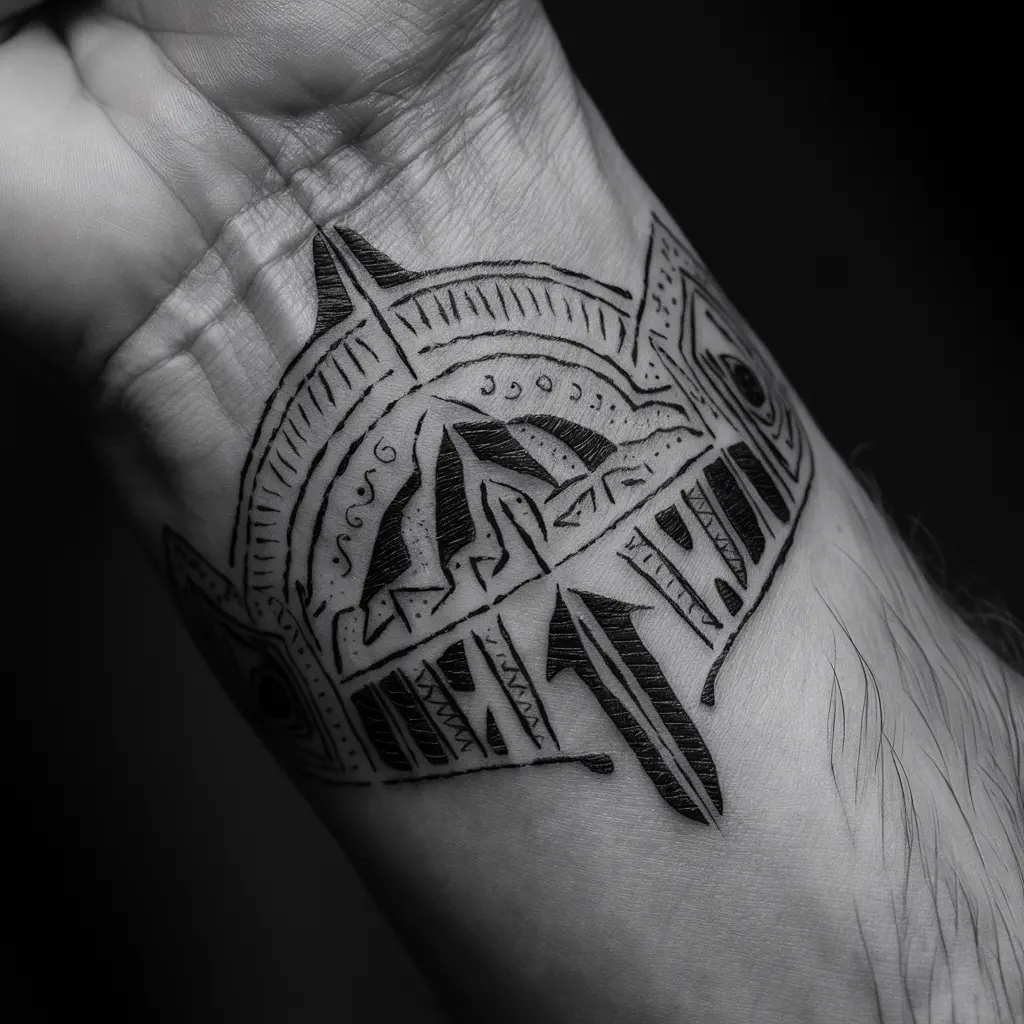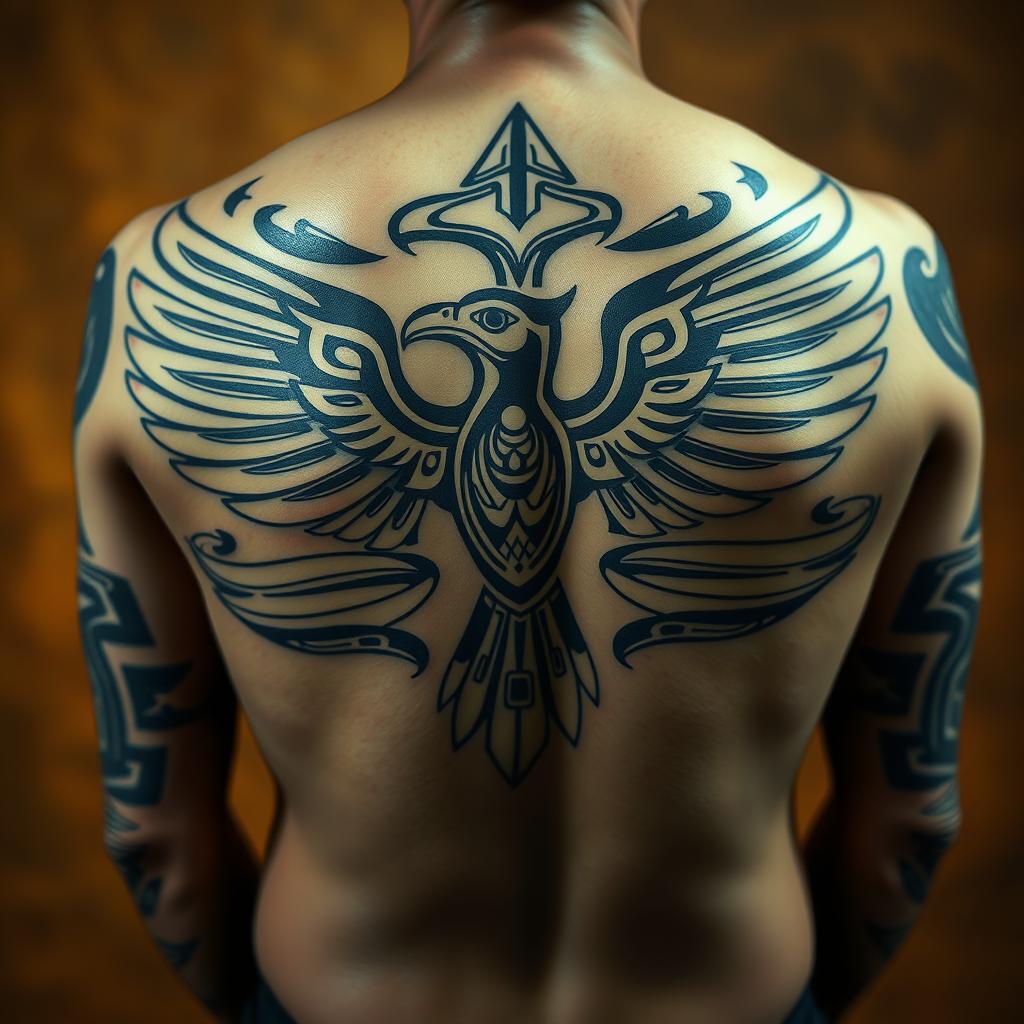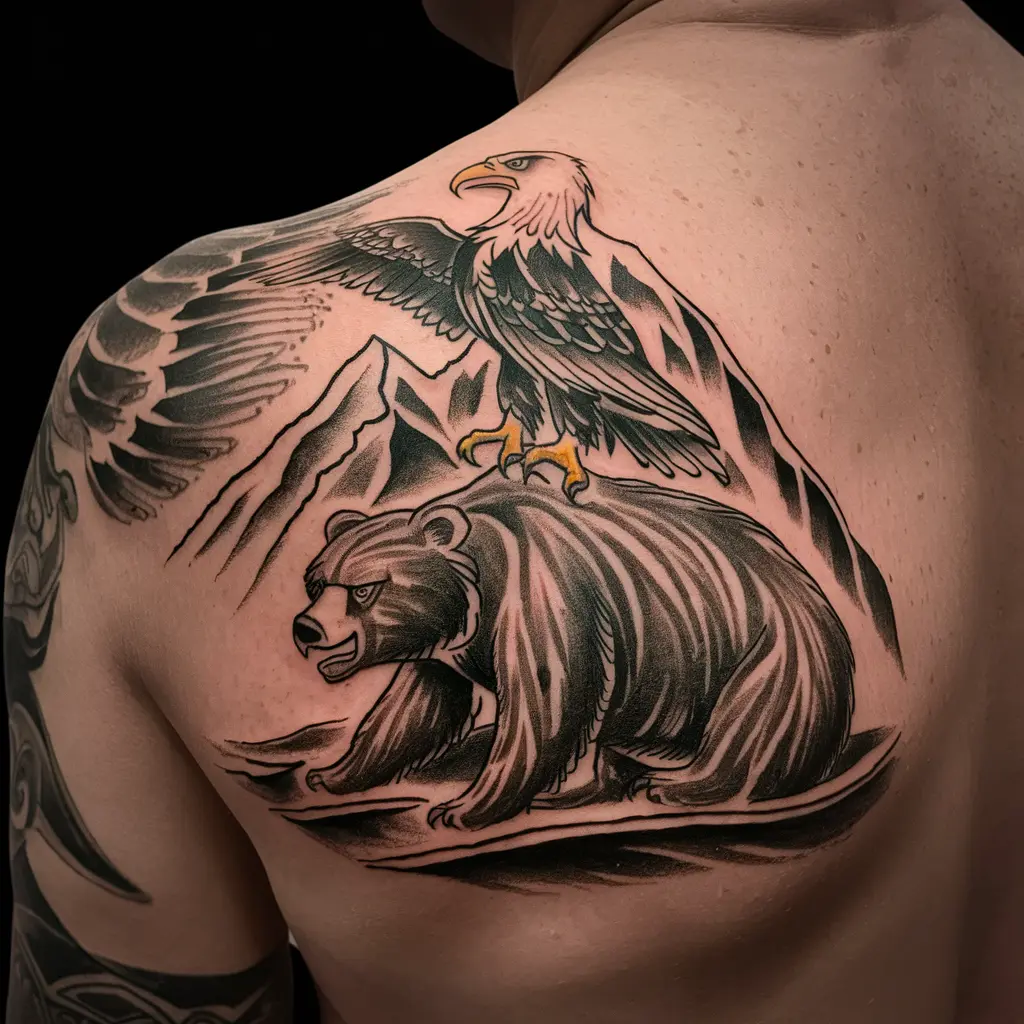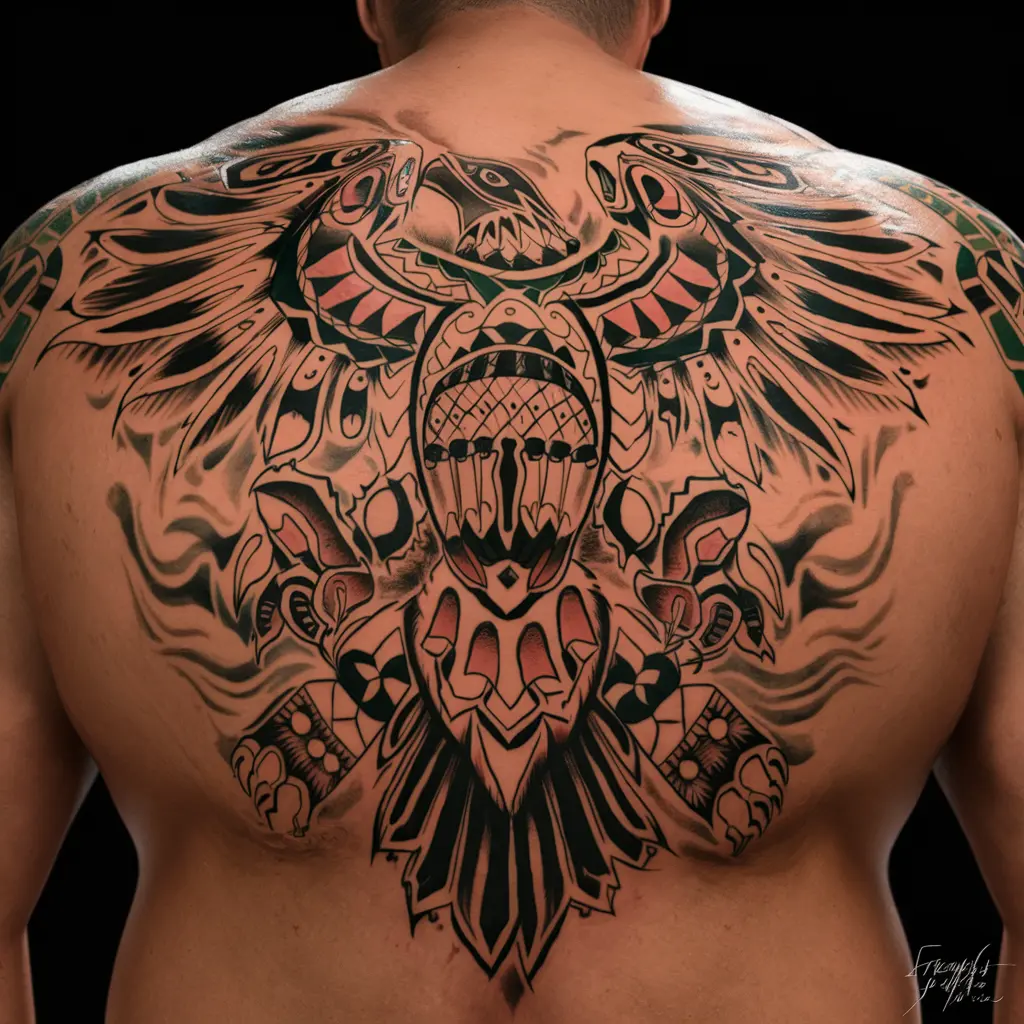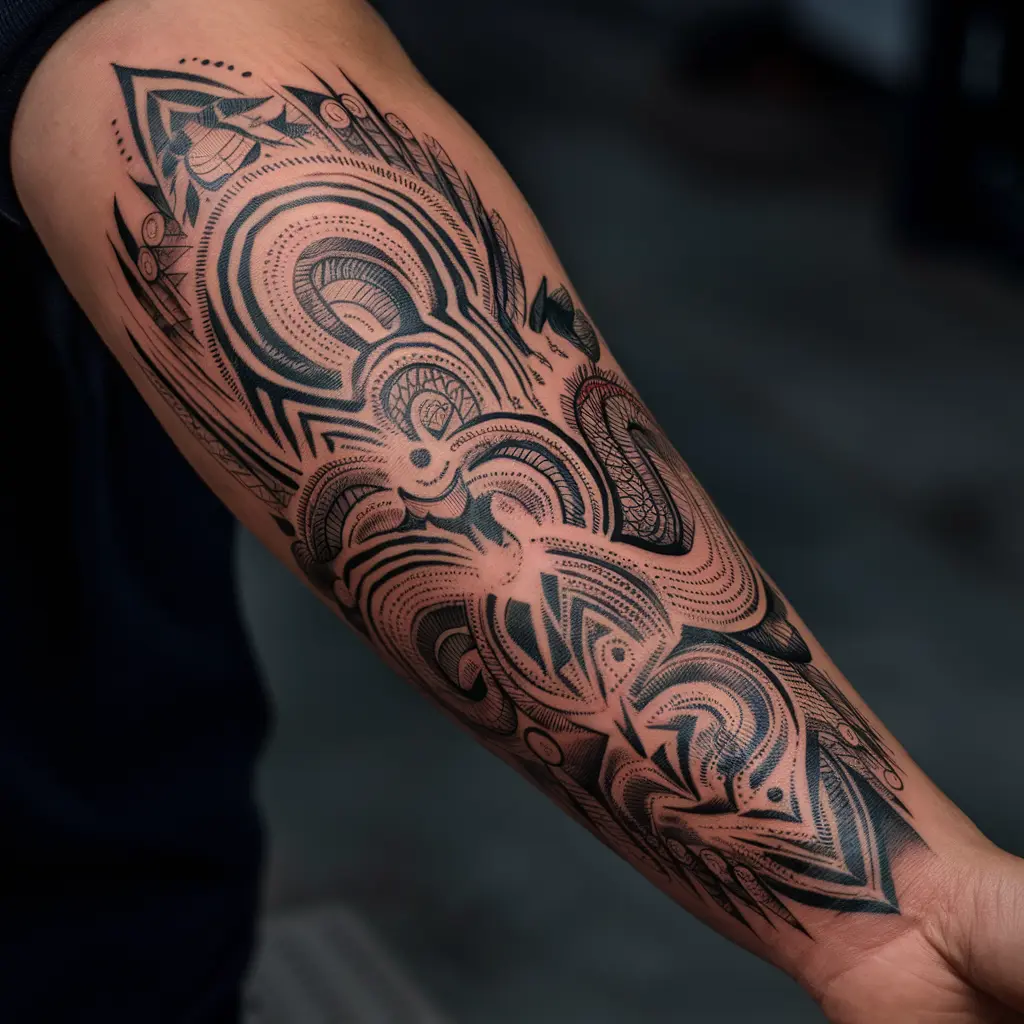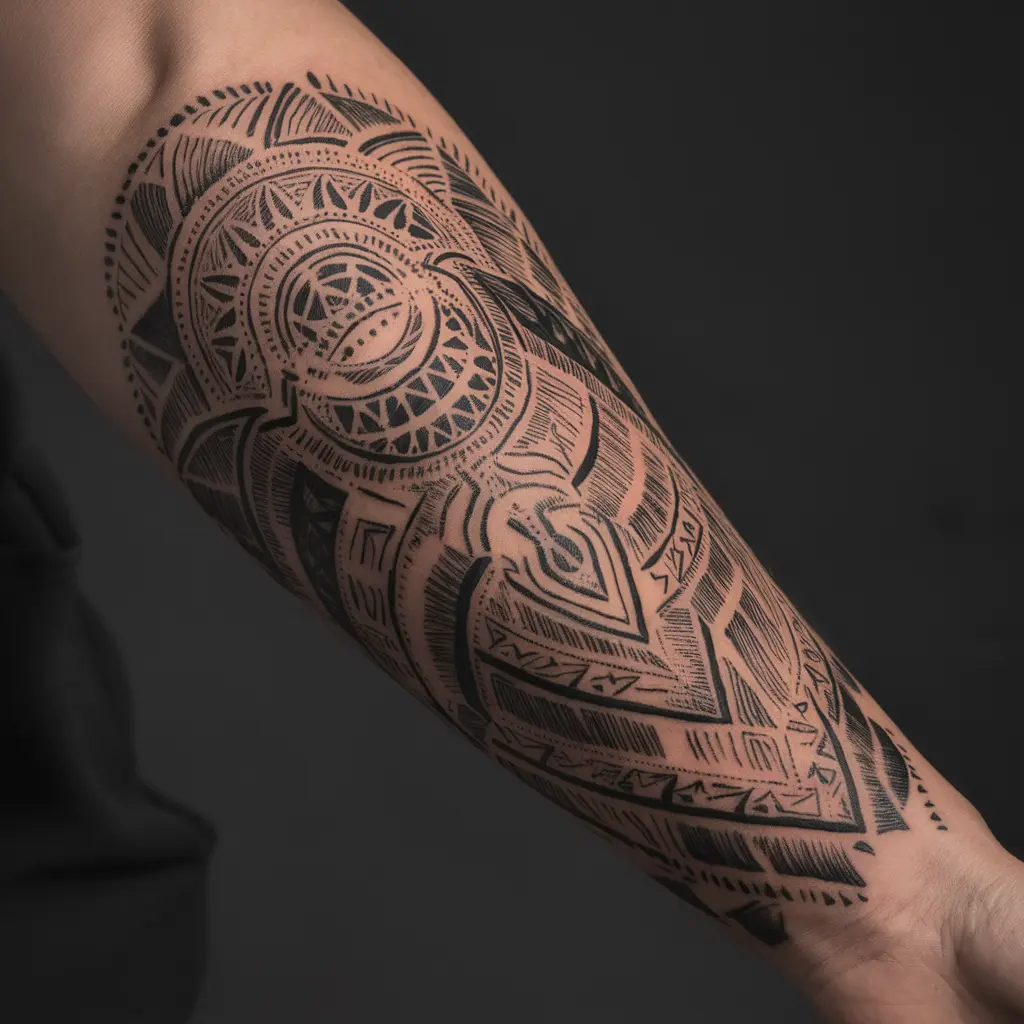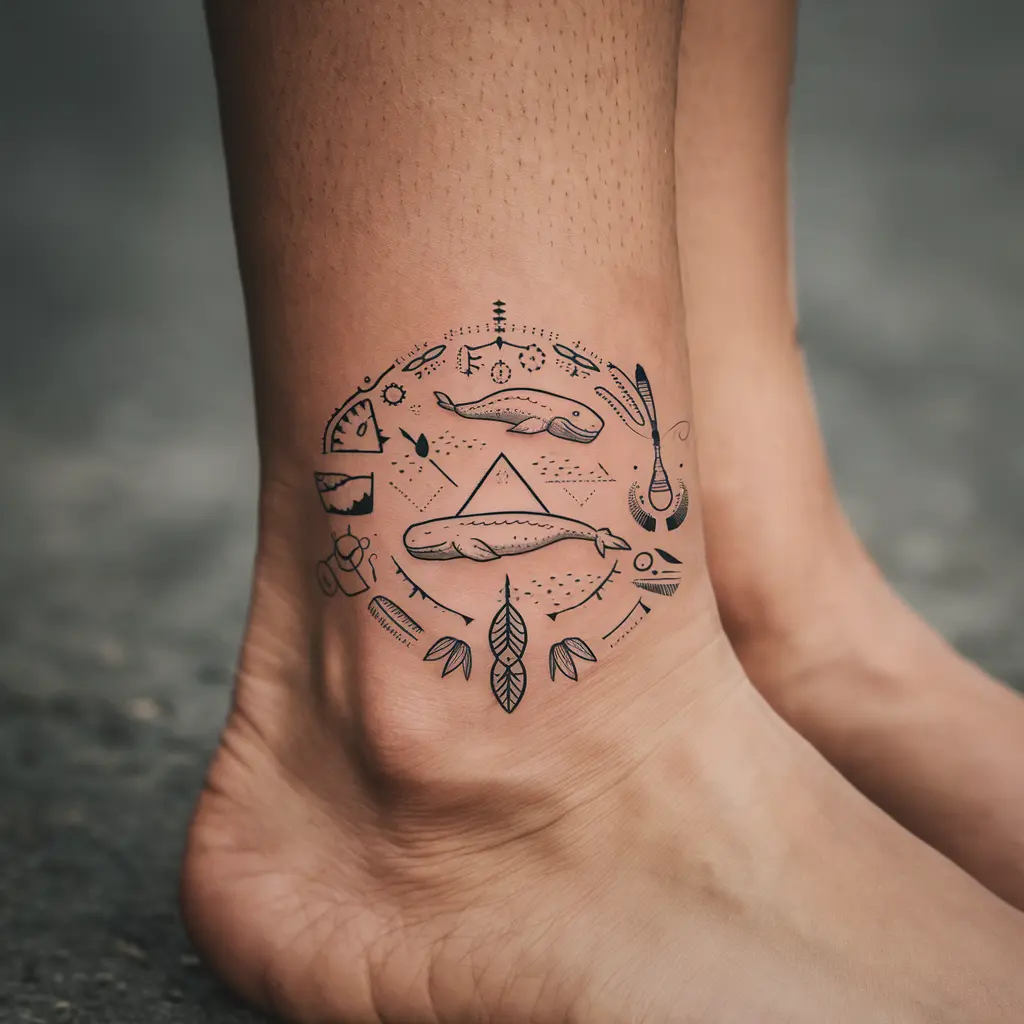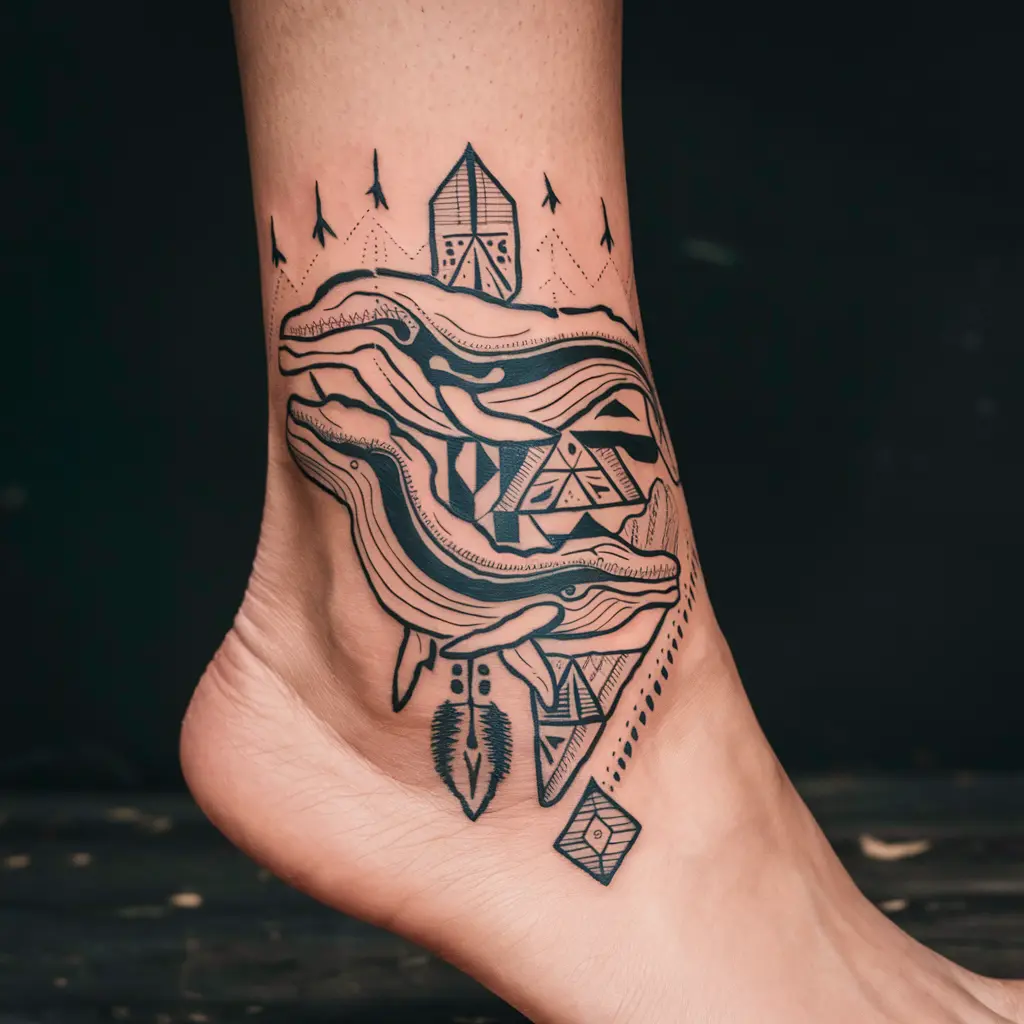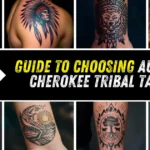Imagine a cold Alaskan morning. Stories from generations are not just in memories. They are also on skin.
Alaskan native tattoos are more than just body art. They are living history. They show cultural strength and personal identity.
Indigenous Inuit tattoos have lasted for centuries. They are symbols of pride. These tattoos tell stories of survival and deep connection.
Traditional tattooing was once banned. Missionaries tried to erase these sacred practices. But, a new generation of Native women is bringing it back.
Each tattoo has deep meaning. It shows personal journeys, family ties, and community bonds. These tattoos are not just marks. They are signs of cultural strength.
Exploring Alaskan Native tattoos, you find more than decoration. It’s a language of identity, healing, and preservation. It shows the strong spirit of Indigenous communities.
Understanding Traditional Alaskan Native Tattoos
Alaskan Native tattoos are a deep meaning cultural art form that goes back thousands of years. They are more than just decorations. They are symbols of identity, spiritual connection, and personal achievement. These designs tell stories of heritage that have lasted through generations.
The tradition of alaska native tattoos is almost 4,000 years old in the Circumpolar Arctic. An ivory mask from Devon Island, dated to 1700 B.C., shows early examples of these tattoos. They were called Kakinniit or Tunniit in Inuktitut and were very important in their culture.
Origins and Cultural Significance
Inuit facial tattoos were not just for looks. They were important for social and spiritual reasons. They marked big life changes, showed personal achievements, and showed who was in a tribe. These tattoos were linked to shamanism and were key in showing who you were and where you belonged.
Traditional Materials and Methods
Old tattoo artists used special tools to make these tattoos. They used bird bone needles to draw out designs. This was hard work and was very important, with each tattoo having deep meaning for the person and their community.
Sacred Meanings Behind Designs
Every line and pattern in traditional Alaskan Native tattoos had special meaning. Some showed personal achievements, others showed social status or spiritual connections. These tattoos were a way to tell stories of personal and cultural identity through skin markings.
The Historical Journey of Indigenous Tattoo Practices
The story of Alaskan tribal ink patterns is one of strength and survival. For many years, the tattoos of Indigenous Alaskans were almost lost. This happened because of colonial forces.
From the early 1900s to the 1970s, the government took Indigenous children away. This broke their connection to their culture.
Research shows a rich history of tattoos among Indigenous people. In the mid-1990s, a few Yupik women in their 80s and 90s were found with old tattoos. By 2004, these women were almost gone.
The effort to stop tattoos was strong. Missionaries and government workers worked hard to stop traditional tattoos. This caused a big gap in culture that lasted 50-80 years.
This gap meant many lost their tattoo-making skills. They didn’t know how to make the tattoos of their ancestors.
But now, a new movement is happening. Young Indigenous artists are bringing back their tattoos. Social media helps them share and keep their traditions alive.
The story of Alaskan Native tattoos is more than just art. It shows the strength and spirit of Indigenous people. They kept their culture alive, even when it was hard.
Common Traditional Markings and Their Meanings
Traditional Inuit tattoos show a deep language of culture. They are rooted in Alaska native body art traditions. These designs are more than just decorations. They are symbols of personal and community history.
Alaska Native tattoos tell stories through marks on the face and body. Each design has deep meaning. It connects people to their heritage and life stories.
Tavluġun (Chin Tattoos)
Chin tattoos are important for Indigenous women. They mark the stages of womanhood – maiden, mother, and crone. These tattoos celebrate growth and community ties, marking life’s big moments.
Iri (Eye Corner Tattoos)
Eye corner tattoos have deep spiritual meanings. They often mean wisdom, spiritual protection, and achievements. These tattoos tell stories of a person’s experiences and spiritual connections.
Siqñiq (Forehead Tattoos)
Forehead tattoos mean “sun” in traditional language. They show celestial connections and personal growth. These tattoos link people to nature, ancestors, and personal change, showing the rich meaning of Alaska native art.
The Role of Women in Alaskan Native Tattoo Traditions
For thousands of years, Alaskan Native women have used tattoos to show who they are. The art of inuit skin stitch designs is over 10,000 years old. Women were key in making and getting these detailed facial tattoos.
In old Alaskan Native cultures, tattoos were mostly made by women. They marked big life events with tattoos that told stories. These tattoos celebrated things like growing up, getting married, and having kids.
The tradition almost died out in the 20th century because of colonial rules. But now, it’s coming back. Artists like Sarah Whalen-Lunn are helping to keep this art alive. In 2016, Grete Bergman was one of the first Gwich’in women to get traditional facial tattoos in years.
Today, tattoos are a strong way for Native women to connect with their culture. Each tattoo has a special meaning. It shows their journey and ties to their community, even after facing hard times.
Revival of Ancient Inuit Tattooing Practices
The alaskan tribal tattoos are coming back in a big way. This is a big moment for Indigenous communities. After being pushed aside for years, Native American body art is now thriving again.
Traditional Inuit tattooing, called kakiniit, is making a big comeback. In the last 15 years, Indigenous women have led this movement. They use old hand-poke techniques to connect with their roots.
Modern Practitioners Leading the Way
Today’s Indigenous tattoo artists are making ancient practices new again. They do more than just tattoos. They keep cultural memories alive.
These artists turn alaskan tribal tattoos into a symbol of identity. They make these tattoos vibrant and alive.
Traditional Techniques in Modern Context
This revival is more than just art. It’s a deep healing for cultures. By learning old tattooing ways, Indigenous people are taking back their stories.
Each tattoo is a story. It links today’s Indigenous people to their ancestors. It shows the strength of their cultural practices.
Cultural Identity Through Body Art
Traditional tattoos mean more than just designs for Alaskan Native people. They show strength, healing, and a link to their ancestors. Your body tells stories of your heritage through detailed designs.
Getting tlingit tattoos is a deep way to connect with your culture. Each design holds special meaning, linking today’s people to their past. These tattoos show strength, survival, and a spiritual bond that never breaks.
Getting tattoos is a big deal for many. Princess Daazharali Johnson and Talivaaq Qinugana got tattoos to honor their ancestors. Their tattoos show their journey of growth and pride in their culture.
These tattoos show your connection to your culture. They tell stories of overcoming challenges and belonging to a community. Each tattoo is a symbol of the lasting spirit of Alaskan Native people, keeping traditions alive.
The Process of Traditional Hand-Poke Tattooing
Traditional hand-poke tattooing is a sacred art in Alaska Eskimo traditions. It uses special tools passed down through generations. These tools help insert pigment into the skin.
Traditional Tattooing Tools
Yupik tattoo meanings are tied to the tools used. Artists made needles from bird or deer bones. Turkey leg bone was the favorite.
They used black hardwood charcoal as pigment. It was inserted into the skin’s top layers to stop bleeding.
Precise Tattooing Technique
The hand-poke method needs a lot of skill and patience. Artists put each dot carefully, making detailed designs. These designs tell personal and cultural stories.
This method focuses on spiritual meaning, not just looks.
Ceremonial Significance
Tattoos were more than just marks for Alaska Natives. They marked important life events like growing up or joining a clan. Rituals like smudging and prayer made tattoos sacred.
Contemporary Alaskan Native Tattoos
Today, Alaskan Native tattoos link old traditions with new ways of expressing oneself. Young artists mix ancient designs with modern styles. These tattoos tell stories of strength and who we are.
Inuit tattoos share tales of family and personal paths. Each design connects us to our past. Artists like Marjorie Tahbone are making these stories come alive again.
These tattoos do more than look good. They help heal and show pride in culture. Artists make sure each tattoo is full of meaning and respect.
More people are interested in these tattoos and their stories. This interest helps keep Alaskan Native culture alive. It brings people together in understanding and respect.
Preservation of Sacred Designs
Traditional Alaska native tattoos mean a lot more than just body art. They carry deep cultural value. It’s important for indigenous communities to protect these designs from misuse and misunderstanding.
Protecting Cultural Identity
Alaska native tattoo artists are working hard to stop cultural theft. They keep traditional designs safe, making sure they are treated with respect. Each symbol holds deep meaning passed down through generations.
Educational Awareness Initiatives
Leaders and experts are creating educational programs. They teach about the deep history and spiritual value of these tattoos. This helps both young people and others understand their importance.
Maintaining Cultural Boundaries
Indigenous groups have rules about who gets certain tattoos. Some designs are only for special people or ceremonies. This keeps their culture real and meaningful.
Impact on Indigenous Communities
The revival of tribal tattoos in Alaska is a healing journey for Indigenous communities. Traditional athabaskan tattoo symbols are more than art. They are a deep way to connect with culture and find personal strength.
Over the last ten years, these tattoos have helped address historical trauma. They also help rebuild community identity.
Indigenous women lead this cultural revival. The Tupik Mi apprenticeship program started six years ago. It has trained three women in traditional tattooing.
This effort shows a strong commitment to keeping ancient practices alive. These practices were almost lost due to colonization.
These tattoos are more than just pretty designs. They show the strength and survival of Indigenous people. Each tattoo connects people to their ancestors’ wisdom.
It helps them tell their own stories and heal from past hurts.
The tattoos also have a big impact on people’s minds. They feel more proud of their culture and belong. By embracing these tattoos, communities are not just keeping art alive. They are also finding their way back to themselves and healing together.
Symbolism and Design Elements
Alaskan Native tattoos are more than just body art. They tell stories of heritage and personal journeys. These designs are like living tales on skin.
Tlingit tattoos often feature animals like eagles and bears. These animals mean a lot in these designs. They show clan connections and personal achievements.
Traditional Patterns
Yupik tattoos are known for their detailed patterns. Artists used these patterns to tell stories of history and family. Facial tattoos showed social status and family ties.
Regional Variations
Each Alaskan Native group had its own tattoo style. Coastal tribes used symbols like whales, while interior groups favored geometric shapes. These differences show the unique cultures of each area.
Learning about these tattoos helps us see the strength of Alaskan Native cultures. Each tattoo is a story of survival and identity. These stories inspire new art and self-expression today.
Conclusion
Alaskan Native tattoo traditions tell a deep story of cultural strength. They are more than just tattoos. They are stories of who we are, how we survive, and our connection to our ancestors.
These tattoos have faced many challenges, like colonization and near-extinction. Yet, they have come back strong. They show the power of keeping our culture alive.
These tattoos are not just old stories. They are alive and growing. They help keep our culture strong, heal old wounds, and celebrate our spirit.
The future of these tattoos looks bright. Young people are keeping these traditions alive. They make sure our stories and culture will always be shared through tattoos on our bodies.

